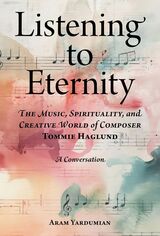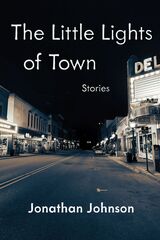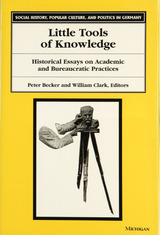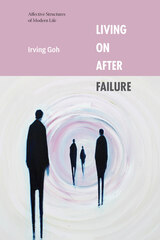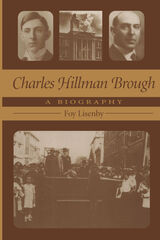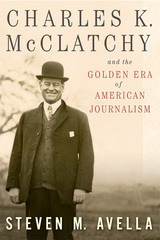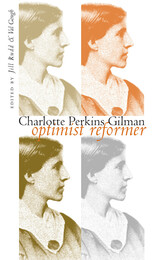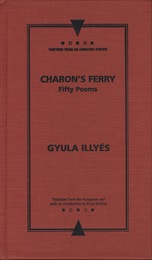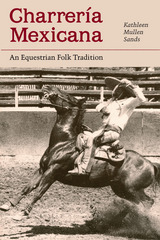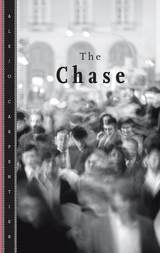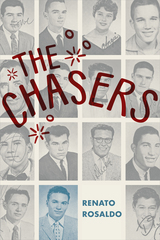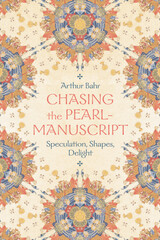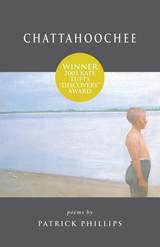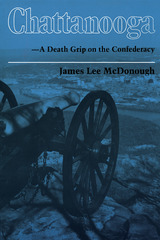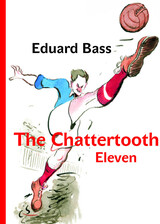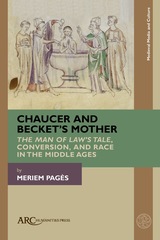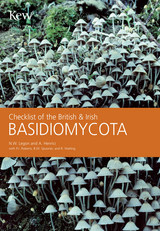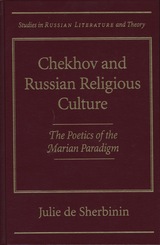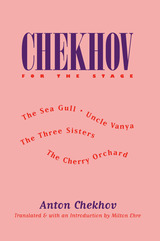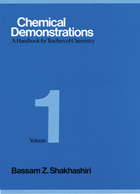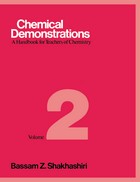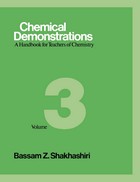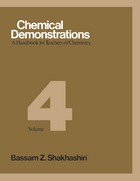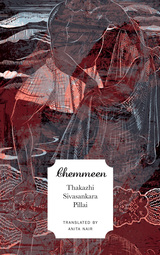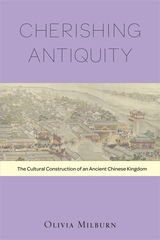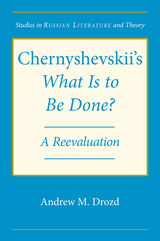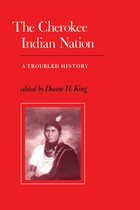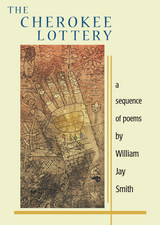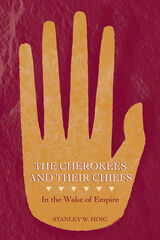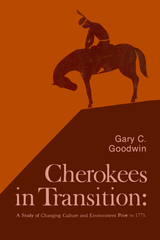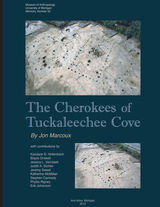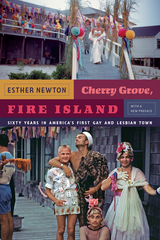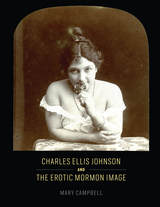 Charles Ellis Johnson and the Erotic Mormon Image
Mary Campbell
University of Chicago Press, 2016 On September 25, 1890, the Mormon prophet Wilford Woodruff publicly instructed his followers to abandon polygamy. In doing so, he initiated a process that would fundamentally alter the Latter-day Saints and their faith. Trading the most integral elements of their belief system for national acceptance, the Mormons recreated themselves as model Americans.
Mary Campbell tells the story of this remarkable religious transformation in Charles Ellis Johnson and the Erotic Mormon Image. One of the church’s favorite photographers, Johnson (1857–1926) spent the 1890s and early 1900s taking pictures of Mormonism’s most revered figures and sacred sites. At the same time, he did a brisk business in mail-order erotica, creating and selling stereoviews that he referred to as his “spicy pictures of girls.” Situating these images within the religious, artistic, and legal culture of turn-of-the-century America, Campbell reveals the unexpected ways in which they worked to bring the Saints into the nation’s mainstream after the scandal of polygamy.
Engaging, interdisciplinary, and deeply researched, Charles Ellis Johnson and the Erotic Mormon Image demonstrates the profound role pictures played in the creation of both the modern Church of Jesus Christ of Latter-day Saints and the modern American nation.
 Charles Follen's Search for Nationality and Freedom: Germany and America, 1796-1840
Edmund Spevack
Harvard University Press, 1997 This unique account of the life of German nationalist and revolutionary Charles Follen opens a window on several worlds during the first half of the nineteenth century. Seldom does one biography embrace so many important historical issues and events.
Trained as a lawyer in his native Germany, Follen was involved in student nationalism, eventually turning to revolutionary Jacobinism. He fled to Switzerland in 1819 after conspiring in the first political murder of modern German history--the assassination of the playwright August von Kotzebue. In Switzerland, Follen secretly continued activities for revolutionizing Germany. When his plans were discovered in 1824, he fled to America. For ten years, Follen taught at Harvard; he was the first professor of German literature at an American institution of higher learning. He played a central role in the early importation of German ideas to New England, contributing to the fields of literature, philosophy, and theology. His marriage to Eliza Lee Cabot allowed him to move in elite Boston social circles. After his ordination as a Unitarian minister in 1836, Follen combined his interest in social reform (including an ardent devotion to the antislavery movement) with clerical service. Unitarian leader William Ellery Channingand abolitionist William Lloyd Garrison became Follen's close friends.
During the last two years of his life, Follen began to doubt his own power to bring about political change and suffered a crisis in self-confidence before his accidental death at the age of forty-three.
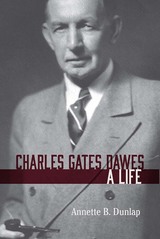 Charles Gates Dawes: A Life
Annette B. Dunlap
Northwestern University Press, 2016 Charles Gates Dawes: A Life is the first comprehensive biography of an American in whose fascinating story contemporary readers can follow the struggles and triumphs of early twentieth-century America and Europe. Dawes is most known today as vice president of the United States under Calvin Coolidge, but he also distinguished himself and his hometown of Evanston, Illinois, on the world stage with the 1925 Nobel Peace Prize. This engrossing biography traces how, when the punitive armistice that ended the First World War resulted in a disabled, restive Germany, Dawes’s diplomatic legerdemain averted war through a renegotiation of Germany’s debt repayments. Dawes’s diplomatic and political achievements, however, were only the illustrious capstones to a multifaceted career that included military service, law, finance, and business on the local, state, national, and global stages. In every arena of his life, he combined the social graces of the Gilded Age with the spirit of service of the Progressive Era. Despite his life of disciplined service, Dawes was an ebullient and irrepressible figure. Dawes’s salty language was often colorful fodder for tabloid and magazine writers of his era. In this captivating biography, Annette B. Dunlap recounts the story of an original American who enlightened and enlivened his world.
This book was published in cooperation with the Evanston History Center and with generous support from the Tawani Foundation.
Charles Hillman Brough: A Biography
Foy Lisenby
University of Arkansas Press, 1996 Ten years in the making, taken largely fron primary materials, some lent by descendents, this biography is a balanced portrait of an extraordinary Arkansas leader, progressive governor of the state from 1917 to 1921.
The Charles Ilfeld Company: A Study of the Rise and Decline of Mercantile Capitalism in New Mexico
William J. Parish
Harvard University Press In a pioneering study of far western commercial enterprise from Santa Fe Trail days to the present, detailed company records reveal the merchants' solutions of monetary exchange, balance of trade, and transportation problems, in depression and prosperity. Finally, the author traces the defeat of mercantile capitalism by modern specialization. New materials give valuable insights into the history of economic development in the western hemisphere. An important book for economists and historians, its frontier stories will delight less specialized readers.
 Charles IV: Portrait of a Medieval Ruler
Václav Žurek
Karolinum Press, 2023 A critical examination of the life and legacy of Charles IV.
Charles IV, King of Bohemia and Holy Roman Emperor, has been called “one of the most learned and diplomatically skillful sovereigns” of the fourteenth century. Having moved the seat of the Holy Roman Empire to Prague and founding the first university in Central Europe, Charles IV is a towering figure in Czech history and a crucial character in the story of medieval Europe.
Recent research, especially in art history, has tended to present Charles IV in a purely positive, unblemished light: viewing him and his imperial court as the engine behind a flourishing of culture in the region. This book views Charles IV through a more critical lens, examining the careful construction that went into the way he presented himself and the characteristic manifestations of Charles’ execution of royal power. The first part of the book offers a chronological description of Charles’ life within the broader context of the times and the House of Luxembourg. The second part provides a close look into Charles IV’s style of rule while focusing on phenomena that reveal his personal conception of power and how it was wielded.
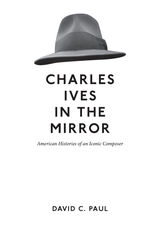 Charles Ives in the Mirror: American Histories of an Iconic Composer
David C. Paul
University of Illinois Press, 2013 American composer Charles Ives (1874–1954) has gone from being a virtual unknown to become one of the most respected and lauded composers in American music. In this sweeping survey of intellectual and musical history, David C. Paul tells the new story of how Ives's music was shaped by shifting conceptions of American identity within and outside of musical culture, charting the changes in the reception of Ives across the twentieth century and into the twenty-first century. Paul focuses on the critics, composers, performers, and scholars whose contributions were most influential in shaping the critical discourse on Ives, many of them marquee names of American musical culture themselves, including Henry Cowell, Aaron Copland, Elliott Carter, and Leonard Bernstein. Paul explores both how Ives positioned his music amid changing philosophical and aesthetic currents and how others interpreted his contributions to American music. Although Ives's initial efforts to find a public in the early twenties attracted a few devotees, the resurgence of interest in the American literary past during the thirties made a concert staple of his "Concord" Sonata, a work dedicated to nineteenth-century transcendentalist writers. Paul shows how Ives was subsequently deployed as an icon of American freedom during the early Cold War period and how he came to be instigated at the head of a line of "American maverick" composers. Paul also examines why a recent cadre of scholars has beset the composer with Gilded Age social anxieties. By embedding Ives' reception within the changing developments of a wide range of fields including intellectual history, American studies, literature, musicology, and American politics and society in general, Charles Ives in the Mirror: American Histories of an Iconic Composer greatly advances our understanding of Ives and his influence on nearly a century of American culture.
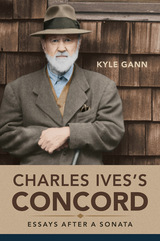 Charles Ives's Concord: Essays after a Sonata
Kyle Gann
University of Illinois Press, 2021 In 1921, insurance executive Charles Ives sent out copies of a piano sonata to two hundred strangers. Laden with dissonant chords, complex rhythm, and a seemingly chaotic structure, the so-called Concord Sonata confounded the recipients, as did the accompanying book, Essays before a Sonata . Kyle Gann merges exhaustive research with his own experience as a composer to reveal the Concord Sonata and the essays in full. Diffracting the twinned works into their essential aspects, Gann lays out the historical context that produced Ives's masterpiece and illuminates the arguments Ives himself explored in the Essays . Gann also provides a movement-by-movement analysis of the work's harmonic structure and compositional technique; connects the sonata to Ives works that share parts of its material; and compares the 1921 version of the Concord with its 1947 revision to reveal important aspects of Ives's creative process. A tour de force of critical, theoretical, and historical thought, Charles Ives's Concord provides nothing less than the first comprehensive consideration of a work at the heart of twentieth century American music.
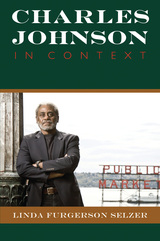 Charles Johnson in Context
Linda Furgerson Selzer
University of Massachusetts Press, 2009
Author of the National Book Award–winning novel Middle Passage, Charles Johnson belongs to a generation of writers who collectively raised African American literature to a new position of prominence during the late twentieth century. In this book, Linda Furgerson Selzer takes an interdisciplinary approach to Johnson's major fiction, providing fresh insight into his work by placing it within a broad historical context. In addition to Middle Passage (1990), Selzer focuses on three other novels: Faith and the Good Thing (1974), Oxherding Tale (1982), and Dreamer (1998). She shows how these works reflect Johnson's participation in the larger cultural projects of several significant but often overlooked groups—young black philosophers who challenged the dominant Anglo-American empiricist tradition during the 1960s and 1970s; black Buddhists of the post–civil rights era who sought to translate an ancient religious practice into an African American idiom; and black public intellectuals who attempted to revive a cosmopolitan social ethic during the 1990s. The cultural histories of each of these groups, Selzer argues, provide important contexts for understanding Johnson's evolution as a novelist. In the academic experience of black students who entered philosophy programs during the turbulent 1960s, the spiritual concerns of black Buddhists who have only recently begun to speak more publicly about their faith, and the cultural issues surrounding the emergence of a new cohort of African American public intellectuals, we see the roots of the social, moral, and aesthetic vision that informs what some have described as Johnson's "philosophical fiction." Selzer's probing analysis of the influence of each of these contexts not only enriches our understanding of Charles Johnson's fiction, it also makes a broader contribution to the cultural history of African America during the past half century.
 Charles Johnson's "General History of the Pyrates" and Global Commerce
Noel Chevalier
Bucknell University Press, 2025 A bestseller upon its publication in 1724, Charles Johnson’s General History of the Pyrates shaped public perceptions of piracy with its portraits of such legendary figures as Blackbeard, Mary Read, Anne Bonny, and Bartholomew Roberts. Yet despite influencing everything from Treasure Island to Peter Pan, Johnson’s book has yet to be taken seriously as a literary work in its own right.
This study explores how General History of the Pyrates was at the heart of early eighteenth-century British debates about commerce, colonialism, and law. Examining how pirates are depicted as both monsters and Great Men, Noel Chevalier untangles the contradictions within a Britain emerging as a colonial superpower, where ruthlessness and ambition were both feared and praised. Traveling the high seas to plunder treasure from foreign lands, pirates were not so different from the British capitalists who built fortunes from resource extraction, the plantation economy, and the transatlantic slave trade. Connecting the work to later books like Gulliver’s Travels and The Beggar’s Opera that satirized the era and its power-hungry prime minister Robert Walpole, Chevalier shows how the pirate became an iconic figure in 1720s Britain, a time of cold-hearted capitalism and rapacious colonial expansion.
Charles K. McClatchy and the Golden Era of American Journalism
Steven M. Avella
University of Missouri Press, 2016 Charles K. McClatchy was twenty-five when he inherited The Sacramento Bee from his father, and his ensuing career as the paper’s editor extended well beyond the newsroom. Until his death in 1936, McClatchy was a consistent advocate for Progressive politics, a crusader for urban reform, a staunch isolationist, and a voice for Northern California. This biography explores his career as the long-time editor of the Bee in a work that weaves the history of Northern California with that of American newspapers.
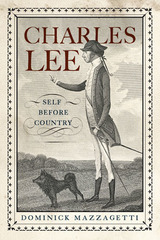 Charles Lee: Self Before Country
Mazzagetti, Dominick
Rutgers University Press, 2013 Received an Honorable Mention for the American Revolution Round Table of Richmond's 2014 Book Award
Dominick Mazzagetti presents an engaging account of the life of Charles Lee, the forgotten man of the American Revolution. History has not been kind to Lee—for good reason. In this compelling biography, Mazzagetti compares Lee’s life and attributes to those of George Washington and offers significant observations omitted from previous Lee biographies, including extensive correspondence with British officers in 1777 that reflects Lee’s abandonment of the Patriots’ cause. Lee, a British officer, a veteran of the French and Indian War, and a critic of King George III, arrived in New York City in 1773 with an ego that knew no bounds and tolerated no rivals. A highly visible and newsworthy personality, he quickly took up the American cause and encouraged rebellion. As a result of this advocacy and his military skills, Lee was granted a commission as a major general in the Continental Army and soon became second-in-command to George Washington. He helped organize the defense of Boston, designed defenses for New York City, and commanded the force that repelled the British attack on Charleston. Upon his return to New York in 1776, Lee was considered by some leaders of the Revolution to be an alternative to George Washington, who was in full retreat from British forces. Lee’s capture by the British in December 1776 put an end to that possibility. Lee’s subsequent release in a prisoner exchange in 1778 and return to an American command led to a dramatic confrontation with Washington on the battlefield at Monmouth, New Jersey, in June 1778. Washington chastised Lee publicly for ordering an unnecessary retreat. Lee suffered the ignominy of a court-martial conviction for this blunder and spent the remaining years to his death in 1782 attacking Washington. Although few doubted Lee’s loyalty at the time, his actions at Monmouth fueled speculation that he switched sides during his imprisonment. A discovery years after his death completed Lee’s tale. In 1862, a researcher discovered “Mr. Lee’s Plan,” a detailed strategy for the defeat of the American rebels delivered to British General William Howe while Lee was held in captivity. This discovery sealed Lee’s historical record and ended all further discussion of his contributions to the American Revolution. Today, few people even realize that Fort Lee, on the New Jersey side of the George Washington Bridge, was named in his honor.
 Charles Ludlam Lives!: Charles Busch, Bradford Louryk, Taylor Mac, and the Queer Legacy of the Ridiculous Theatrical Company
Sean F. Edgecomb
University of Michigan Press, 2017 Playwright, actor and director Charles Ludlam (1943–1987) helped to galvanize the Ridiculous style of theater in New York City starting in the 1960s. Decades after his death, his place in the chronicle of American theater has remained constant, but his influence has changed. Although his Ridiculous Theatrical Company shut its doors, the Ludlamesque Ridiculous has continued to thrive and remain a groundbreaking genre, maintaining its relevance and potency by metamorphosing along with changes in the LGBTQ community.
Author Sean F. Edgecomb focuses on the neo-Ridiculous artists Charles Busch, Bradford Louryk, and Taylor Mac to trace the connections between Ludlam’s legacy and their performances, using alternative queer models such as kinetic kinship, lateral historiography, and a new approach to camp. Charles Ludlam Lives! demonstrates that the queer legacy of Ludlam is one of distinct transformation—one where artists can reject faithful interpretations in order to move in new interpretive directions.
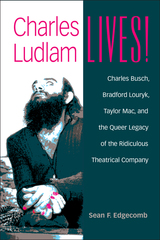 Charles Ludlam Lives!: Charles Busch, Bradford Louryk, Taylor Mac, and the Queer Legacy of the Ridiculous Theatrical Company
Sean F. Edgecomb
University of Michigan Press, 2017 Playwright, actor and director Charles Ludlam (1943–1987) helped to galvanize the Ridiculous style of theater in New York City starting in the 1960s. Decades after his death, his place in the chronicle of American theater has remained constant, but his influence has changed. Although his Ridiculous Theatrical Company shut its doors, the Ludlamesque Ridiculous has continued to thrive and remain a groundbreaking genre, maintaining its relevance and potency by metamorphosing along with changes in the LGBTQ community.
Author Sean F. Edgecomb focuses on the neo-Ridiculous artists Charles Busch, Bradford Louryk, and Taylor Mac to trace the connections between Ludlam’s legacy and their performances, using alternative queer models such as kinetic kinship, lateral historiography, and a new approach to camp. Charles Ludlam Lives! demonstrates that the queer legacy of Ludlam is one of distinct transformation—one where artists can reject faithful interpretations in order to move in new interpretive directions.
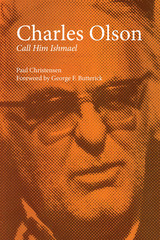 Charles Olson: Call Him Ishmael
By Paul Christensen
University of Texas Press, 1979 Charles Olson was an important force behind the raucous, explicit, jaunty style of much of twentieth-century poetry in America. This study makes a major contribution to our understanding of his life and work. Paul Christensen draws upon a wide variety of source materials—from letters, unpublished essays, and fragments and sketches from the Olson Archives to the full range of Olson's published prose and poetry. Under Christensen's critical examination, Olson emerges as a stunning theorist and poet, whose erratic and often unfinished writings obscured his provocative intellect and the coherence of his perspective on the arts. Soon after World War II, Olson emerged as one of America's leading poets with his revolutionary document on poetics, "Projective Verse," and his now-classic poem, "The Kingfishers," both of which declared a new set of techniques for verse composition. Throughout the 1950s Olson wrote many polemical essays on literature, history, aesthetics, and philosophy that outlined a new stance to experience he called objectism. A firm advocate of spontaneous self-expression in the arts, Olson regarded the poet's return to an intense declaration of individuality as a force to combat the decade's insistence on conformity. Throughout his life Olson fought against the depersonalization of the artist in the modern age; his resources, raw verve and unedited tumultuous lyricism, were weapons he used against generalized life and identity. This volume begins with an overview of Olson's life from his early years as a student at Harvard through his short-lived political career, his rectorship at Black Mountain College, and his retirement to Gloucester to finish writing the Maximus poems. Christensen provides a systematic review of Olson's prose works, including a close examination of his brilliant monograph on Melville, Call Me Ishmael. Considerable attention is devoted to Olson's theory of projectivism, the themes and techniques of his short poems, and the strategies and content of his major work, the Maximus series. In addition, there is a critical survey of the works of Robert Creeley, Robert Duncan, Denise Levertov, Paul Blackburn, and other poets who show Olson's influence in their own innovative, self-exploratory poetry.
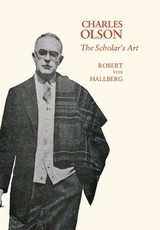 Charles Olson: The Scholar’s Art
Robert von Hallberg
Harvard University Press, 1978 Charles Olson is often described as one of the most influential American poets of the last quarter century; some would rather describe him as a cult figure, prophet of the Black Mountain poets and their descendants. Both judgments refer to an influence exerted as much through theories as through poems. Here is an examination of Olson's understanding of poetry that is cogent and a pleasure to read. It provides the framework needed for understanding Olson's work.
Mr. von Hallberg shows us the Olson of the 1950s, who tried to bring change through teaching, who wanted poetry to communicate knowledge, as well as the more private poet of the 1960s, turning from history to myth. Olson's ambitions for poetry were based on his sense of cultural politics, and the author studies the relation between Olson's politics and his poetics. He traces too Olson's relation to older poets, especially Ezra Pound and William Carlos Williams. His book will interest anyone reading contemporary American poetry.
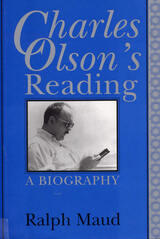 Charles Olson's Reading: A Biography
Ralph Maud
Southern Illinois University Press, 1996
In this narrative account of the life and work of Charles Olson, Ralph Maud focuses on what the poet read as a basis for understanding the work he produced.
To an extraordinary degree, Olson’s reading and life were coextensive, according to Maud, who notes that Olson saw his written output over his lifetime as a total cosmology. An individual who rarely traveled, this major American poet explored the world and its history as well as the furthest reaches of the thought of his day through books.
Maud builds upon George Butterick’s annotated listing of Olson’s library, bought by the University of Connecticut after the poet’s death in 1970. The present volume, however, adds categories of books Butterick deliberately omitted: Olson’s childhood books and poetry by his own contemporaries.
Linking Olson’s books to his intellectual and poetic development at each stage of his career, Maud reveals such little-known but important connections as the contracted book project "Operation Red, White and Black" and Olson’s plan for the long poem "West"—two unrealized projects much later shaped into The Maximus Poems.
Maud also outlines the surprisingly multiple role of the painter Corrado Cagli, who brought home to Olson the significance of the Holocaust and introduced him both to the Tarot and to the theories of non-Euclidean geometry that Olson variously incorporated into his poems and essays. In discussing Olson’s relationship to Ezra Pound, Maud defines in some detail what Olson gained from Pound and what he repudiated.
Maud refutes the notion that Olson’s intellectual and creative powers declined during the last years of his life, demonstrating that during these years Olson developed his Jungian interest, his attention to early Greek thought, and a new concern for Northern mythology.
This chronicle of Olson’s reading from childhood to deathbed constitutes a critical biography of the larger-than-life author of Call Me Ishmael and The Maximus Poems. No modern poet is more revealed in his sources than Olson. Maud’s comprehensive and complete study provides a basis for new and fresh modes of thinking about Olson’s great achievement.
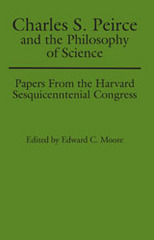 Charles S. Peirce and the Philosophy of Science: Papers from the Harvard Sesquicentennial Congress
Edward C. Moore
University of Alabama Press, 1993 A compilation of selected papers presented at the 1989 Charles S. Pierce International Congress
Interest in Charles Sanders Peirce (1839-1914) is today worldwide. Ernest Nagel of Columbia University wrote in 1959 that "there is a fair consensus among historians of ideas that Charles Sanders Peirce remains the most original, versatile, and comprehensive philosophical mind this country has yet produced." The breadth of topics discussed in the present volume suggests that this is as true today as it was in 1959.
Papers concerning Peirce's philosophy of science were given at the Harvard Congress by representatives from Italy, France, Sweden, Finland, Korea, India, Denmark, Greece, Brazil, Belgium, Spain, Germany, and the United States. The Charles S. Peirce Sesquicentennial International Congress opened at Harvard University on September 5, 1989, and concluded on the 10th—Peirce's birthday. The Congress was host to approximately 450 scholars from 26 different nations. The present volume is a compilation of selected papers presented at that Congress.
The philosophy of science and its logic are themes in the work of Charles Peirce that have been of greatest interest to scholars. Peirce was himself a physical scientist. He worked as an assistant at the Harvard Astronomical Observatory from 1869 to 1872 and made a series of astronomical observations there from 1872 to 1875. Solon I. Bailey says of these observations, "The first attempt at the Harvard Observatory to determine the form of the Milky Way, or the galactic system, was made by Charles S. Peirce....The investigation was of a pioneer nature, founded on scant data."
Peirce also made major contributions in fields as diverse as mathematical logic and psychology. C. I. Lewis has remarked that "the head and font of mathematical logic are found in the calculus of propositional functions as developed by Peirce and Schroeder." Peirce subsequently invented, almost from whole cloth, semiotics - the science of the meaning of signs. Ogden and Richards, the British critics, say that "by far the most elaborate and determined attempt to give an account of signs and their meanings is that of the American logician C. S. Peirce, from whom William James took the idea and the term Pragmatism, and whose Algebra of Dyadic Relations was developed by Schroeder."
Charles Seeger: A Life in American Music
Ann M. Pescatello
University of Pittsburgh Press, 1992 Ann M. Pescatello presents the first biography of Charles Seeger, who was a force in American music for most of the twentieth century. Part composer, teacher, performer, musicologist, bureaucrat, and inventor-Seeger's ninety-two year life touched many people and many areas of American music. As both a traditionalist and champion of the new, he established the University of California's music department and the nation's first curriculum in musicology, and taught at the Institute of Musical Arts (later Julliard), and at the New School in New York. He was also a music activist-defending the artistic value of American folk music, and seeking global cooperation for musical enterprise at the Resettlement administraion, the WPA, and the Pan American Union.
 Charles Sheeler and Cult of the Machine
Karen Lucic
Harvard University Press, 1991 At the dawn of the twentieth century, Henry Adams proclaimed that the machine was as central to our modem American culture as the Virgin was to medieval culture. We worshiped in our factories as our ancestors worshiped in cathedrals. In this century we also raised up bridges, grain elevators, and skyscrapers, and many were dazzled by these symbols of the Machine Age--from American presidents such as Calvin Coolidge to European artists such as Marcel Duchamp. Charles Sheeler (1886-1965) was one of the most noted American painters and photographers to embrace the iconography of the machine. But was he high priest or heretic in the religion of mass production and technology that dominated his era?
Karen Lucic considers this intriguing question while telling us Sheeler's story: his coming of age, his achievement of artistic independence in the teens and twenties, and his later treatments of Machine Age subjects throughout the years of the Depression and World War II. The author shows us how--in paintings, drawings, and photographs depicting New York skyscrapers, Henry Ford's automobile factories, and machine-dominated interiors--Sheeler produced images of extraordinary aesthetic power that provocatively confirmed America's technological and industrial prestige in clear, vivid, and exact detail.
Do these compelling works establish Sheeler as a champion of the Machine Age? Most of the artist's contemporaries thought so. "Sheeler was objective before the rest of us were," claimed his friend Edward Steichen, and critics either lauded or assailed Sheeler for his seemingly straightforward acceptance of the machine. He is misunderstood today for the same reason. In the post-industrial era, Sheeler has been attacked for objectifying his subjects, for eliminating the human element from the modern landscape, and ultimately for complicity in the mechanization of the world he so accurately portrayed.
By closely investigating Sheeler's social and aesthetic contexts and through exceptionally clear and convincing visual analysis, Karen Lucic reinterprets the work of this important modernist. She argues that his images do not celebrate the machine but question its predominance during his time. They provoke us to confront the social consequences of modern technology.
Sheeler appears in this book as neither believer nor heretic in the cult of the machine. Lucic asks us to grant Sheeler his ambivalence, for it was his ambivalence that enabled him to portray modernity so splendidly.
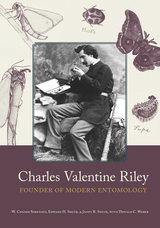 Charles Valentine Riley: Founder of Modern Entomology
W. Conner Sorensen, Edward H. Smith, and Janet R. Smith, with Donald C. Weber
University of Alabama Press, 2019 Riley propelled entomology from a collector’s parlor hobby of the nineteenth century to the serious study of insects in the Modern Age
This definitive biography is the first full account of a fascinating American scientist whose leadership created the modern science of entomology that recognizes both the essential role of insects in natural systems and their challenge to the agricultural food supply that sustains humankind. Charles Valentine Riley: Founder of Modern Entomology tells the story of how Riley (1843–1895), a young British immigrant to America—with classical schooling, only a smattering of natural history knowledge, and with talent in art and writing but no formal training in science—came to play a key role in the reorientation of entomology from the collection and arrangement of specimens to a scientific approach to insect evolution, diversity, ecology, and applied management of insect pests.
Drawing on Riley’s personal diaries, family records, correspondence, and publications, the authors trace Riley’s career as farm laborer, Chicago journalist, Missouri State Entomologist, chief federal entomologist, founder of the National Insect Collection, and initiator of the professional organization that became the Entomological Society of America. Also examined in detail are his spectacular campaigns against the Rocky Mountain Locust that stalled western migration in the 1870s, the Grape Phylloxera that threatened French vineyards in the 1870s and 80s, the Cotton Worm that devastated southern cotton fields after the Civil War, and the Cottony Cushion Scale that threatened the California citrus industry in the 1880s. The latter was defeated through importation of the Vedalia Beetle from Australia, the spectacular first example of biological control of an invasive insect pest by its introduced natural enemy.
A striking figure in appearance and deed, Riley combined scientific, literary, artistic, and managerial skills that enabled him to influence every aspect of entomology. A correspondent of Darwin and one of his most vocal American advocates, he discovered the famous example of mimicry of the Monarch butterfly by the Viceroy, and described the intricate coevolution of yucca moths and yuccas, a complex system that fascinates evolutionary scientists to this day. Whether applying evolutionary theory to pest control, promoting an American silk industry, developing improved spray technologies, or promoting applied entomology in state and federal government and to the public, Riley was the central figure in the formative years of the entomology profession. In addition to showcasing his own renderings of the insects he investigated, this comprehensive account provides fresh insight into the personal and public life of an ingenious, colorful, and controversial scientist, who aimed to discover, understand, and outsmart the insects.
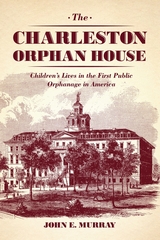 The Charleston Orphan House: Children's Lives in the First Public Orphanage in America
John E. Murray
University of Chicago Press, 2012 The first public orphanage in America, the Charleston Orphan House saw to the welfare and education of thousands of children from poor white families in the urban South. From wealthy benefactors to the families who sought its assistance to the artisans and merchants who relied on its charges as apprentices, the Orphan House was a critical component of the city’s social fabric. By bringing together white citizens from all levels of society, it also played a powerful political role in maintaining the prevailing social order. John E. Murray tells the story of the Charleston Orphan House for the first time through the words of those who lived there or had family members who did. Through their letters and petitions, the book follows the families from the events and decisions that led them to the Charleston Orphan House through the children’s time spent there to, in a few cases, their later adult lives. What these accounts reveal are families struggling to maintain ties after catastrophic loss and to preserve bonds with children who no longer lived under their roofs. An intimate glimpse into the lives of the white poor in early American history, The Charleston Orphan House is moreover an illuminating look at social welfare provision in the antebellum South.
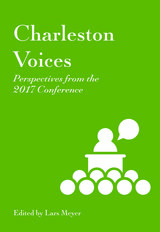 Charleston Voices: Perspectives from the 2017 Conference
Edited by Lars Meyer
Against the Grain, LLC, 2018 The Charleston Conference is an informal annual gathering of librarians, publishers, electronic resource managers, consultants, and vendors of library materials in Charleston, SC, in November, to discuss issues of importance to them all. It is designed to be a collegial gathering of individuals from different areas who discuss the same issues in a non-threatening, friendly, and highly informal environment. Presidents of companies discuss and debate with library directors, acquisitions librarians, reference librarians, serials librarians, collection development librarians, and many, many others. Begun in 1980, the Charleston Conference has grown from 20 participants in 1980 to almost 2,000 in 2017. From the librarian of a small library to the CEO of a major corporation, they all stand and make their voices heard. The tone is casual, the talk irreverent, and the answers are far from simple. But together, we can find solutions. In this annual volume we have collected many key issues that were discussed in 2017. TESTIMONIALS “The best library gathering around. I look forward to it.” “The Charleston Conference is an incredibly stimulating venue. I am tired afterwards, but get so many great ideas, network with my colleagues, and learn what is going on. I recommend it highly.” “Charleston is the only conference that is worth attending.” https://www.charlestonlibraryconference.com/about/
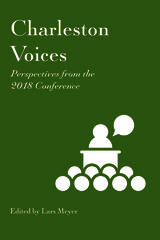 Charleston Voices: Perspectives from the 2018 Conference
Edited by Lars Meyer
Against the Grain, LLC, 2019 The Charleston Conference is an informal annual gathering of librarians, publishers, electronic resource managers, consultants, and vendors of library materials in Charleston, SC, in November, to discuss issues of importance to them all. It is designed to be a collegial gathering of individuals from different areas who discuss the same issues in a nonthreatening, friendly, and highly informal environment. Presidents of companies discuss and debate with library directors, acquisitions librarians, reference librarians, serials librarians, collection development librarians, and many, many others. Begun in 1980, the Charleston Conference has grown from 20 participants in 1980 to almost 2,000 in 2017. From the librarian of a small library to the CEO of a major corporation, they all stand and make their voices heard. The tone is casual, the talk irreverent, and the answers are far from simple. But together, we can find solutions. In this annual volume we have collected many key issues that were discussed in 2018.
TESTIMONIALS
“The best library gathering around. I look forward to it.”
“The Charleston Conference is an incredibly stimulating venue. I am tired afterwards, but get so many great ideas, network with my colleagues, and learn what is going on. I recommend it highly.”
“Charleston is the only conference that is worth attending.”
https://www.charlestonlibraryconference.com/about/
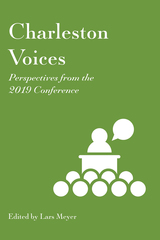 Charleston Voices: Perspectives from the 2019 Conference
Edited by Lars Meyer
Against the Grain, LLC, 2020 The Charleston Conference is an informal annual gathering of librarians, publishers, electronic resource managers, consultants, and vendors of library materials in Charleston, SC, in November, to discuss issues of importance to them all. It is designed to be a collegial gathering of individuals from different areas who discuss the same issues in a nonthreatening, friendly, and highly informal environment. Presidents of companies discuss and debate with library directors, acquisitions librarians, reference librarians, serials librarians, collection development librarians, and many, many others. Begun in 1980, the Charleston Conference has grown from 20 participants in 1980 to almost 2,000 in 2017. From the librarian of a small library to the CEO of a major corporation, they all stand and make their voices heard. The tone is casual, the talk irreverent, and the answers are far from simple. But together, we can find solutions. In this annual volume we have collected many key issues that were discussed in 2019.
TESTIMONIALS
“The best library gathering around. I look forward to it.”
“The Charleston Conference is an incredibly stimulating venue. I am tired afterwards, but get so many great ideas, network with my colleagues, and learn what is going on. I recommend it highly.”
“Charleston is the only conference that is worth attending.”
https://www.charlestonlibraryconference.com/about/
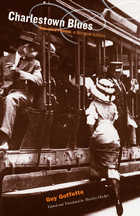 Charlestown Blues: Selected Poems, a Bilingual Edition
Guy Goffette
University of Chicago Press, 2007 Letter to the unknown woman across the street, I
Curtains, blinds, draperies, shades, no, nothing
Madame, to conceal from your Cyclops’ eye
in the shadows from which it spies on me
this long pale body, false corpse tired out
with debauchery, which is swooning too
before your balcony, with your drying
stockings and scanties of a nun at bay—
poisonous flowers for a lonely man
whom death panics, draws erect, demarrows
in the night, riveted to your white thighs.
Readers who denounce most contemporary French poetry as self-referential experimentation, word games, exercises in deconstruction, or other kinds of incomprehensible writing disconnected from everyday life—brace yourselves for a revelation. Erotic and urbane, distinguished by formal skill yet marked by the subtlest shades of feeling, Guy Goffette’s unabashedly lyrical poems pay homage to both Verlaine and Rimbaud, whom he counts as his important forbears, with echoes of Auden and Pound, Pavese and Borges.
In Charlestown Blues, poet and translator Marilyn Hacker has chosen a tightly thematic selection of poems, all centering around the notion of “blue”—the color and the emotion, as well as that quintessentially American style of musical performance. Hacker’s crystalline and musical English renderings will show Anglophones why Goffette is considered one of the most important poets writing in French today.
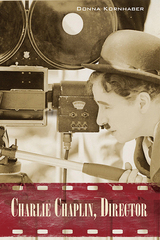 Charlie Chaplin, Director
Donna Kornhaber
Northwestern University Press, 2014 Charlie Chaplin was one of the cinema’s consummate comic performers, yet he has long been criticized as a lackluster film director. In this groundbreaking work—the first to analyze Chaplin’s directorial style—Donna Kornhaber radically recasts his status as a filmmaker. Spanning Chaplin’s career, Kornhaber discovers a sophisticated "Chaplinesque" visual style that draws from early cinema and slapstick and stands markedly apart from later, "classical" stylistic conventions. His is a manner of filmmaking that values space over time and simultaneity over sequence, crafting narrative and meaning through careful arrangement within the frame rather than cuts between frames. Opening up aesthetic possibilities beyond the typical boundaries of the classical Hollywood film, Chaplin’s filmmaking would profoundly influence directors from Fellini to Truffaut. To view Chaplin seriously as a director is to re-understand him as an artist and to reconsider the nature and breadth of his legacy.
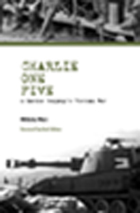 Charlie One Five: A Marine Company's Vietnam War
Nicolas Warr, with foreword by Scott Nelson
Texas Tech University Press, 2013
The combat history of the 1st Battalion, 5th Marines--or “One Five” (1/5)--is long and illustrious, but there are many periods of their combat operations during the Vietnam War about which there is little in print. This history is drawn from many years of research, from the author’s personal memories, and from careful study of the battalion’s Command Chronologies and Combat After-action Reports and other historical records. Most importantly it includes a collection of true stories told to the author by dozens of U.S. Marines who served in and fought with 1/5 during the Vietnam War, at all levels of the Chain of Command.
This book hunkers down with the “Mud Marines” of Charlie One Five, a small but determined band of American fighting men, and their very human and often painful stories of combat cover a wide range of scenarios and situations. Follow the Marines of 1/5 as they are lulled by the exotic and beautiful countryside, trudge through swamps, jungles, mountains, and rice paddies for seemingly endless days, and struggle to stay alert during their cautious passage through the extreme terrain and weather conditions of this incredibly scenic but deceptive land, only to be shattered by sudden and deadly attacks from Viet Cong snipers, ambushes, and command-detonated bombs. Despite the overwhelming odds against them, the Marines of Charlie One Five always emerge victorious in every battle they fight.
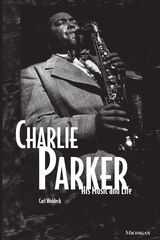 Charlie Parker: His Music and Life
Carl Woideck
University of Michigan Press, 1998 "Whatever background you bring to it, the book willl likely enrich your understanding of Parker's music. . . ." --Cadence
As one of the architects of modern jazz (often called "bebop"), Charlie Parker (1920-55) had a profound effect on American music that continues to this day.
This book opens with a chapter of biography and then progresses to four chapters focusing on Charlie Parker's music by tracing his artistic evolution and major achievements as a jazz improviser. Much like a guided tour through an artist's retrospective, the book introduces readers to a sampling of Charlie Parker's most illustrative works. The musical discussions and transcribed musical examples are keyed to compact disc timings for easy location--a feature unique to this book.
"The musical analysis is brilliant, particularly the pre-1945 fragments." --DownBeat
". . . debunks the stereotype that jazz musicians are unschooled and unsophisticated when it comes to music as art rather than entertainment. . . . [An] insightful and informative addition to the literature of jazz." --Calvin Wilson, Kansas City Star
Carl Woideck is Instructor of Jazz History, University of Oregon.
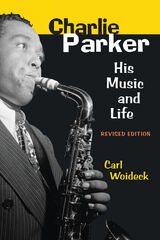 Charlie Parker: His Music and Life
Carl Woideck
University of Michigan Press, 2020 Saxophonist Charlie Parker (1920-1955) was one of the most innovative and influential jazz musicians of any era. As one of the architects of modern jazz (often called "bebop"), Charlie Parker has had a profound effect on American music. His music reached such a high level of melodic, rhythmic, and harmonic sophistication that saxophonists and other instrumentalists continue to study it as both a technical challenge and an aesthetic inspiration. This revised edition of Charlie Parker: His Music and Life has been revised throughout to account for new Charlie Parker scholarship and previously unknown Parker recordings that have emerged since the book’s initial publication. The volume opens by considering current research on Parker’s biography, laying out some of the contradictory accounts of his life, and setting the chronology straight where possible. It then focuses on Parker’s music, tracing his artistic evolution and major achievements as a jazz improviser. The musical discussions and transcribed musical examples include timecodes for easy location in recordings—a unique feature to this book.
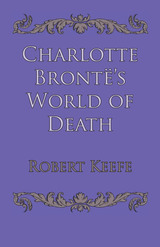 Charlotte Brontë's World of Death
By Robert Keefe
University of Texas Press, 1979 By the age of eight, Charlotte Brontë had lost first her mother and then her two older sisters. Later, in a second wave of deaths, her brother and two younger sisters died, leaving her a sole survivor. With subtlety and imagination, Robert Keefe examines Brontë’s works as the creative response to these losses, particularly the loss of her mother. Terrified and yet fascinated by death, struggling with guilt, remorse, and a deep sense of rejection, Charlotte Brontë found in art a way to come to terms with death through its symbolic reenactment. In her earlier writings she created a fictional world marked by devices that allow her to control or deny death. In her later works these mechanisms evolved into mature expressions of a profound psychological reality. Brontë’s preoccupation with death is seen in her fiction in the recurring patterns of separation and exile. Keefe traces the development of these motifs in the juvenilia and the four novels: The Professor, Jane Eyre, Shirley, and Villette. Unique in its emphasis on the maternal relationships in Brontë’s life and art, this study also explores certain aspects of her life that have often puzzled biographers.
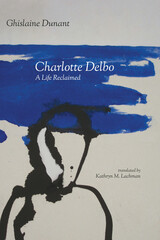 Charlotte Delbo: A Life Reclaimed
Ghislaine Dunant, Translated by Kathryn M. Lachman
University of Massachusetts Press, 2021 In 1943, Charlotte Delbo and 229 other women were deported to a station with no name, which they later learned was Auschwitz. Arrested for resisting the Nazi occupation of Paris, Delbo was sent to the camps, enduring both Auschwitz and Ravensbrück for twenty-seven months. There, she, her fellow deportees, and millions of others were subjected to slave labor and nearly succumbed to typhus, dysentery, and hunger. She sustained herself by reciting Molière and resolved to someday write a book about herself and her fellow deportees, a stunning work called None of Us Will Return. After the camps, Delbo devoted her life to the art of writing and the duty of witnessing, fiercely advocating for the power of the arts to testify against despotism and tyranny.
Ghislaine Dunant's unforgettable biography of Delbo, La vie retrouvée (2016), captivated French readers and was awarded the Prix Femina. Now translated into English for the first time, Charlotte Delbo: A Life Reclaimed depicts Delbo's lifelong battles as a working-class woman, as a survivor, as a leftist who broke from the Communist Party, and most of all, as a writer whose words compelled others to see.
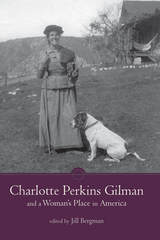 Charlotte Perkins Gilman and a Woman's Place in America
Edited by Jill Bergman
University of Alabama Press, 2017 A compelling critical investigation into Gilman’s conception of setting and place
Charlotte Perkins Gilman and a Woman’s Place in America is a pioneering collection that probes how depictions of space, confinement, and liberation establish both the difficulty and necessity of female empowerment. Turning Victorian notions of propriety and a woman’s place on its ear, this finely crafted essay collection studies Gilman’s writings and the manner in which they push back against societal norms and reject male-dominated confines of space.
The contributors present fascinating and innovative readings of some of Gilman’s most significant works. By examining the settings in “The Yellow Wallpaper” and Herland, for example, the volume analyzes Gilman’s construction of place, her representations of male dominance and female subjugation, and her analysis of the rules and obligations that women feel in conforming to their assigned place: the home.
Additionally, this volume delineates female resistance to this conformity. Contributors highlight how Gilman’s narrators often choose resistance over obedient captivity, breaking free of the spaces imposed upon them in order to seek or create their own habitats. Through biographical interpretations of Gilman’s work that focus on the author’s own renouncement of her “natural” role of wife and mother, contributors trace her relocation to the American West in an attempt to appropriate the masculinized spaces of work and social organization.
Engaging, well-researched, and deftly written, the essays in this collection will appeal to scholars of Gilman, literature, and gender issues alike.
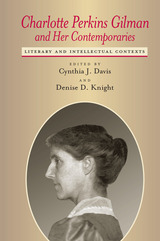 Charlotte Perkins Gilman and Her Contemporaries: Literary and Intellectual Contexts
Edited by Cynthia J. Davis and Denise D. Knight
University of Alabama Press, 2004 Considers Gilman’s place in American literary and social history by examining her relationships to other prominent intellectuals of her era By placing Charlotte Perkins Gilman in the company of her contemporaries, this collection seeks to correct misunderstandings of the feminist writer and lecturer as an isolated radical. Gilman believed and preached that no life is ever led in isolation; indeed, the cornerstone of her philosophy was the idea that “humanity is a relation.” Gilman's highly public and combative stances as a critic and social activist brought her into contact and conflict with many of the major thinkers and writers of the period, including Mary Austin, Margaret Sanger, Ambrose Bierce, Grace Ellery Channing, Lester Ward, Inez Haynes Gillmore, William Randolph Hearst, Karen Horney, William Dean Howells, Catharine Beecher, George Bernard Shaw, and Owen Wister. Gilman wrote on subjects as wide ranging as birth control, eugenics, race, women's rights and suffrage, psychology, Marxism, and literary aesthetics. Her many contributions to social, intellectual, and literary life at the turn of the 20th century raised the bar for future discourse, but at great personal and professional cost.
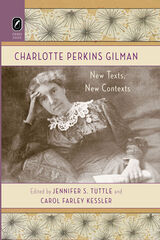 Charlotte Perkins Gilman: New Texts, New Contexts
Jennifer S. Tuttle and Carol Farley Kessler
Ohio State University Press, 2011 During her lifetime, Charlotte Perkins Gilman (1860–1935) was a popular writer, public speaker, and social reformer whose literary interests ranged from short stories, novels, and nonfiction philosophical studies to poetry, newspaper columns, plays, and many other genres. Though she fell into obscurity after her death, there has been a resurgence of interest in Gilman’s works among literary scholars.
Charlotte Perkins Gilman: New Texts, New Contexts represents a new phase of feminist scholarship in recovery, drawing readers’ attention to Gilman’s lesser-known works from fresh perspectives that revise what we thought we knew about the author and her work. Volume contributors consider an array of texts that have not yet enjoyed adequate critical scrutiny, including Gilman’s short fiction, drama, and writing for periodicals, as well as her long fiction. Similarly, incorporating careful archival, biographical, and historical research, contributors explore Gilman’s life and writings—including her most famous story, “The Yellow Wall-Paper”—through strikingly new critical lenses. Other essays included here assess Gilman’s place in a longer historical trajectory and within multiple rhetorical traditions, from the genre of feminist humor to the canon of African American women’s literary production.
Charlotte Perkins Gilman: Optimist Reformer
Jill Rudd
University of Iowa Press, 1999 “These essays exemplify all the virtues of interdisciplinarity in consideration of that most multidisciplined of writers, Charlotte Perkins Gilman. The contributors simultaneously clarify and complicate our understanding of some of the more vexed areas of Gilman's work by engaging saliently with her theories of ethnicity, class, prostitution, and the dynamics of gender; posing difficult questions to contemporary feminist scholars; and providing sensitive and insightful guidance to a well-chosen and wide range of texts.”—Janet Beer, author of Kate Chopin, Edith Wharton and Charlotte Perkins Gilman: Studies in Short Fiction
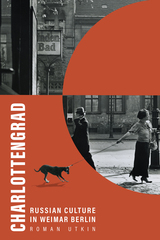 Charlottengrad: Russian Culture in Weimar Berlin
Roman Utkin
University of Wisconsin Press, 2023 As many as half a million Russians lived in Germany in the 1920s, most of them in Berlin, clustered in and around the Charlottenburg neighborhood to such a degree that it became known as “Charlottengrad.” Traditionally, the Russian émigré community has been understood as one of exiles aligned with Imperial Russia and hostile to the Bolshevik Revolution and the Soviet government that followed. However, Charlottengrad embodied a full range of personal and political positions vis-à-vis the Soviet project, from enthusiastic loyalty to questioning ambivalence and pessimistic alienation.
By closely examining the intellectual output of Charlottengrad, Roman Utkin explores how community members balanced their sense of Russianness with their position in a modern Western city charged with artistic, philosophical, and sexual freedom. He highlights how Russian authors abroad engaged with Weimar-era cultural energies while sustaining a distinctly Russian perspective on modernist expression, and follows queer Russian artists and writers who, with their German counterparts, charted a continuous evolution in political and cultural attitudes toward both the Weimar and Soviet states.
Utkin provides insight into the exile community in Berlin, which, following the collapse of the tsarist government, was one of the earliest to face and collectively process the peculiarly modern problem of statelessness. Charlottengrad analyzes the cultural praxis of “Russia Abroad” in a dynamic Berlin, investigating how these Russian émigrés and exiles navigated what it meant to be Russian—culturally, politically, and institutionally—when the Russia they knew no longer existed.
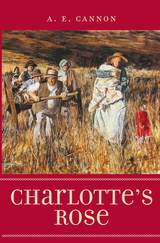 Charlotte's Rose
A. E. Cannon
University of Utah Press, 2011 Charlotte’s Rose—justifiably back in print—tells the story of a young Welsh girl, Charlotte Edwards, who, soon after her mother dies, sails with her father from England to the United States to become part of a company of Mormon handcart pioneers—emigrants with no horses or oxen who themselves pulled the heavy carts filled with their belongings. These were arduous journeys. While on the Mormon Trail, Charlotte befriends a young mother who later dies in childbirth. Though only 12 years old, Charlotte assumes responsibility for the infant and carries her to Utah. Over the course of their journey together, Charlotte becomes deeply attached to the baby she calls Rose, which makes Charlotte’s choice at the novel’s end particularly poignant. The author, A. E. Cannon, is adept at creating vivid, multifaceted, believable characters and has crafted a story of pioneers that will seem relevant to today’s young people. The reader will quickly be drawn into the story as Charlotte struggles to navigate the trials of an adolescent moving into adulthood. Although this is a book about Mormon pioneers, it is in fact about the larger American experience of immigration—a drama still unfolding today—and Charlotte’s coming-of-age journey will resonate with readers young and old.
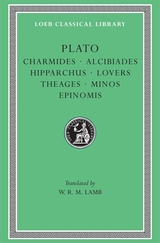 Charmides. Alcibiades. Hipparchus. Lovers. Theages. Minos. Epinomis
Plato
Harvard University Press Mostly doubtful dialogues.
Plato, the great philosopher of Athens, was born in 427 BC. In early manhood an admirer of Socrates, he later founded the famous school of philosophy in the grove Academus. Much else recorded of his life is uncertain; that he left Athens for a time after Socrates’ execution is probable; that later he went to Cyrene, Egypt, and Sicily is possible; that he was wealthy is likely; that he was critical of “advanced” democracy is obvious. He lived to be 80 years old. Linguistic tests including those of computer science still try to establish the order of his extant philosophical dialogues, written in splendid prose and revealing Socrates’ mind fused with Plato’s thought.
In Laches, Charmides, and Lysis, Socrates and others discuss separate ethical conceptions. Protagoras, Ion, and Meno discuss whether righteousness can be taught. In Gorgias, Socrates is estranged from his city’s thought, and his fate is impending. The Apology (not a dialogue), Crito, Euthyphro, and the unforgettable Phaedo relate the trial and death of Socrates and propound the immortality of the soul. In the famous Symposium and Phaedrus, written when Socrates was still alive, we find the origin and meaning of love. Cratylus discusses the nature of language. The great masterpiece in ten books, the Republic, concerns righteousness (and involves education, equality of the sexes, the structure of society, and abolition of slavery). Of the six so-called dialectical dialogues Euthydemus deals with philosophy; metaphysical Parmenides is about general concepts and absolute being; Theaetetus reasons about the theory of knowledge. Of its sequels, Sophist deals with not-being; Politicus with good and bad statesmanship and governments; Philebus with what is good. The Timaeus seeks the origin of the visible universe out of abstract geometrical elements. The unfinished Critias treats of lost Atlantis. Unfinished also is Plato’s last work, Laws, a critical discussion of principles of law which Plato thought the Greeks might accept.
The Loeb Classical Library edition of Plato is in twelve volumes.
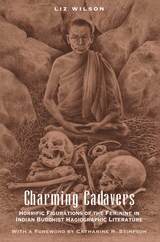 Charming Cadavers: Horrific Figurations of the Feminine in Indian Buddhist Hagiographic Literature
Liz Wilson
University of Chicago Press, 1996 In this highly original study of sexuality, desire, the body, and women,
Liz Wilson investigates first-millennium Buddhist notions of
spirituality. She argues that despite the marginal role women played in
monastic life, they occupied a very conspicuous place in Buddhist
hagiographic literature. In narratives used for the edification of
Buddhist monks, women's bodies in decay (diseased, dying, and after
death) served as a central object for meditation, inspiring spiritual
growth through sexual abstention and repulsion in the immediate world.
Taking up a set of universal concerns connected with the representation
of women, Wilson displays the pervasiveness of androcentrism in Buddhist
literature and practice. She also makes persuasive use of recent
historical work on the religious lives of women in medieval
Christianity, finding common ground in the role of miraculous
afflictions.
This lively and readable study brings provocative new tools and insights
to the study of women in religious life.
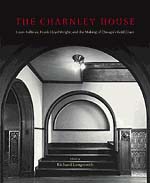 The Charnley House: Louis Sullivan, Frank Lloyd Wright, and the Making of Chicago's Gold Coast
Edited by Richard Longstreth
University of Chicago Press, 2004 Situated in Chicago's famed Gold Coast, just north of the Magnificent Mile, the Charnley house is one of the finest dwellings in the city and considered worldwide to be a stunning example of avant-garde architecture. Now the headquarters of the Society of Architectural Historians and designated a National Historic Landmark in 1998, the house was built in 1892 at a critical moment in urban and architectural history. The Charnley House is the first authoritative publication on the building, which has long been discussed in surveys but never before examined in detail.
In this collection of original essays, six well-known architectural historians illuminate various aspects of the house, both inside and out, as they consider its remarkable formal and spatial qualities, its historical significance in the development of Chicago's elite residential neighborhood, and its place in the context of American domestic architecture. Equally important, the contributors tackle the knotty, decades-old issue concerning the building's designer. While many have ascribed the scheme to Frank Lloyd Wright, Louis Sullivan's chief assistant at the time, this book sheds new light on how the house relates significantly to the work of both master and apprentice.
The continuing debate over the house's "authorship" highlights the importance of the Charnley house in the history of modern architecture as the seminal work of residential design in the United States. These thoroughly researched interpretations, supplemented by an abundance of never before published illustrations, analyze this house of distinction with the care and detail it deserves. Beautifully restored in late 1980s, the Charnley house now has a book worthy of it.
Charon's Ferry: Fifty Poems
Gyula Illyes
Northwestern University Press, 2000 At the heart of this collection are meditations on cultural values, Hungarian history, and the legacy of suppression and survival. Included in this collection is one of the author's most outspoken poems, "One Sentence on Tyranny," a haunting and relentless testimony to the entire Eastern European experience—a backhanded homage to all the oppressions and fears of daily life.
Charrería Mexicana: An Equestrian Folk Tradition
Kathleen Mullen Sands
University of Arizona Press, 1993 In this first major English-language interpretation of charrería, Kathleen Mullen Sands describes the evolution of this equestrian tradition, highlighting the role of horsemen and women throughout Mexico's history. For those who believe cowboy culture and rodeo represent historic horsemanship in the United States, Charrería Mexicana reveals a festival of equal complexity and distinction.
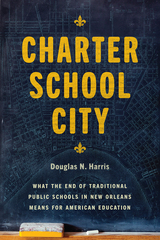 Charter School City: What the End of Traditional Public Schools in New Orleans Means for American Education
Douglas N. Harris
University of Chicago Press, 2020 In the wake of the tragedy and destruction that came with Hurricane Katrina in 2005, public schools in New Orleans became part of an almost unthinkable experiment—eliminating the traditional public education system and completely replacing it with charter schools and school choice. Fifteen years later, the results have been remarkable, and the complex lessons learned should alter the way we think about American education.
New Orleans became the first US city ever to adopt a school system based on the principles of markets and economics. When the state took over all of the city’s public schools, it turned them over to non-profit charter school managers accountable under performance-based contracts. Students were no longer obligated to attend a specific school based upon their address, allowing families to act like consumers and choose schools in any neighborhood. The teacher union contract, tenure, and certification rules were eliminated, giving schools autonomy and control to hire and fire as they pleased.
In Charter School City, Douglas N. Harris provides an inside look at how and why these reform decisions were made and offers many surprising findings from one of the most extensive and rigorous evaluations of a district school reform ever conducted. Through close examination of the results, Harris finds that this unprecedented experiment was a noteworthy success on almost every measurable student outcome. But, as Harris shows, New Orleans was uniquely situated for these reforms to work well and that this market-based reform still required some specific and active roles for government. Letting free markets rule on their own without government involvement will not generate the kinds of changes their advocates suggest.
Combining the evidence from New Orleans with that from other cities, Harris draws out the broader lessons of this unprecedented reform effort. At a time when charter school debates are more based on ideology than data, this book is a powerful, evidence-based, and in-depth look at how we can rethink the roles for governments, markets, and nonprofit organizations in education to ensure that America’s schools fulfill their potential for all students.
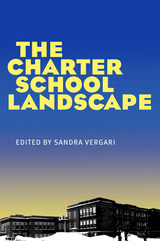 The Charter School Landscape
Sandra Vergari
University of Pittsburgh Press, 2002 Charter schools are publicly funded entities that enjoy freedom from many of the regulations under which traditional public schools operate. There are, however, state and local variations in charter school legislation and implementation. The Charter School Landscape is the first book to analyze and compare charter school politics and policies across a broad range of jurisdictions.
The first charter school opened in Minnesota in 1992. Within nine years, there were more than 2,000 charter schools operating in thirty-four states, Washington, D.C., and Alberta, Canada. Public discourse on the charter school reform is often passionate and politically motivated. Sandra Vergari has assembled a group of experts to present a more reflective and scholarly discussion of the reform, its performance to date, and its implications for public policy.
Each chapter focuses on a single state or province, and systematically addresses such issues as charter school laws, the politics of policy implementation, charter school accountability, controversies and trends, and prospects for the future. In addition, the contributors emphasize significant issues specific to each state that offer lessons for analysts and policymakers everywhere. As a whole, The Charter School Landscape suggests that charter schools are having a significant impact on the institution of public education and how we think about the concept of the "real public school.”
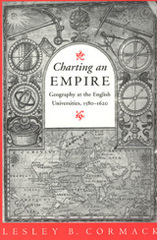 Charting an Empire: Geography at the English Universities 1580-1620
Lesley B. Cormack
University of Chicago Press, 1997 How did early modern England—an island nation on the periphery of world affairs—transform itself into the center of a worldwide empire? Lesley B. Cormack argues that the newly institutionalized study of geography played a crucial role in fueling England's imperial ambitions.
Cormack demonstrates that geography was part of the Arts curriculum between 1580 and 1620, read at university by a broad range of soon-to-be political, economic, and religious leaders. By teaching these young Englishmen to view their country in a global context, and to see England playing a major role on that stage, geography supplied a set of shared assumptions about the feasibility and desirability of an English empire. Thus, the study of geography helped create an ideology of empire that made possible the actual forays of the next century.
Geography emerges in Cormack's account as the fruitful ground between college and court, in whose well-prepared soil the seeds of English imperialism took root. Charting an Empire will interest historians of science, geography, cartography, education, and empire.
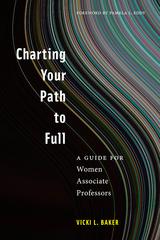 Charting Your Path to Full: A Guide for Women Associate Professors
Vicki L. Baker
Rutgers University Press, 2020 Institutions, faculty, and students benefit when women academics advance in their careers, yet research shows that women academics are more likely to stall at the associate professor stage of their careers than men. Charting Your Path to Full is a data- and literature-informed resource aimed at helping women in the professoriate excel in their careers, regardless of discipline and institution type. Vicki L. Baker draws on human resources, organizational studies, and positive organizational psychology to help women first focus on their joy as the primary driver of career and personal pursuits, and provides action steps, “To Do” lists, and additional tools and resources to lay out a clear step-by-step approach to help women academics reach their goals. Baker’s wealth of consulting and research insights provides a compelling and accessible approach to supporting women as they re-envision their careers.
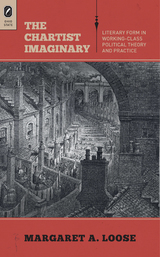 The Chartist Imaginary: Literary Form in Working-Class Political Theory and Practice
Margaret A. Loose
Ohio State University Press, 2014 Can imaginative literature change the political and social history of a class or nation? In The Chartist Imaginary: Literary Form in Working-Class Political Theory and Practice, Margaret Loose turns to the Chartist Movement—Britain’s first mass working-class movement, dating from the 1830s to the 1840s—and argues that, based on literature by members of the movement, the answer to that question is a resounding “yes.” Chartist writing awakened workers’ awareness of discord between professed ideals and reality; exercised their conceptual powers (literary and social); and sharpened their appetite for more knowledge, intellectual power, dignity, and agency in the present to fashion a utopian future. Igniting such self-respecting, politically transfigurative energy was a unique kind of agency Loose calls “the Chartist imaginary.” In examining the Chartist movement, Loose balances the nervous projections of canonical Victorian writers against a consideration of the ways that laborers represented Chartism’s aims and tactics.
The Chartist Imaginary offers close readings of poems and fiction by Chartist figures from Ernest Jones and Thomas Cooper to W. J. Linton, Thomas Martin Wheeler, and Gerald Massey. It also draws on extensive archival research to examine, for the first time, working-class female Chartist poets Mary Hutton, E. L. E., and Elizabeth La Mont. Focusing on the literary form of these works, Loose strongly argues for the political power of the aesthetic in working-class literature.
Chase
Alejo Carpentier
University of Minnesota Press, 2001
The Chasers
Renato Rosaldo
Duke University Press, 2019 Renato Rosaldo's new prose poetry collection shares his experiences and those of his group of twelve Mexican American Tucson High School friends known as the Chasers as they grew up, graduated, and fell out of touch. Derived from interviews with the Chasers and three other friends conducted after their fiftieth high school reunion, Rosaldo's poems present a chorus of distinct voices and perspectives that convey the realities of Chicano life on the borderlands from the 1950s to the present.
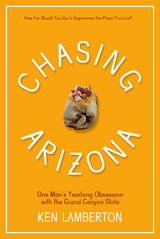 Chasing Arizona: One Man’s Yearlong Obsession with the Grand Canyon State
Ken Lamberton
University of Arizona Press, 2015 It seemed like a simple plan—visit fifty-two places in fifty-two weeks. But for author Ken Lamberton, a forty-five-year veteran of life in the Sonoran Desert, the entertaining results were anything but easy. In Chasing Arizona, Lamberton takes readers on a yearlong, twenty-thousand-mile joyride across Arizona during its centennial, racking up more than two hundred points of interest along the way.
Lamberton chases the four corners of Arizona, attempts every county, every reservation, and every national monument and state park, from the smallest community to the largest city. He drives his Kia Rio through the longest tunnels and across the highest suspension bridges, hikes the hottest deserts, and climbs the tallest mountain, all while visiting the people, places, and treasures that make Arizona great.
In the vivid, lyrical, often humorous prose the author is known for, each destination weaves together stories of history, nature, and people, along with entertaining side adventures and excursions. Maps and forty-four of the author’s detailed pencil drawings illustrate the journey.
Chasing Arizona is unlike any book of its kind. It is an adventure story, a tale of Arizona, a road-warrior narrative. It is a quest to see and experience as much of Arizona as possible. Through intimate portrayals of people and place, readers deeply experience the Grand Canyon State and at the same time celebrate what makes Arizona a wonderful place to visit and live.
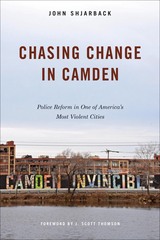 Chasing Change in Camden: Police Reform in One of America's Most Violent Cities
John Shjarback
Temple University Press, 2025 In the 1990s and 2000s, Camden, NJ, across the river from Philadelphia, was perennially designated one of America’s most dangerous cities. The functionally bankrupt city dissolved the Camden Police Department (CPD) and created the Camden County Police Department (CCPD) in 2013, refocusing its priorities and officer performance standards to engage with the community and build trust. The change was significant, with notable drops in violent crime and murder. However, concerns about the use of force and other aggressive practices continued.
In Chasing Change in Camden, John Shjarback investigates how Camden’s police department re-formed and questions whether it can serve as a model for other cities. He analyzes successful policies—from innovative police training to advancements in technology—and evidence-based policing strategies.
Shjarback explains how the changes were implemented and then adjusted in response to community backlash. Chasing Change in Camden concludes with a discussion of threats to the reform and accountability efforts in both the CCPD and American policing more broadly. Ultimately, Camden’s case study offers valuable lessons for cities seeking effective police reform.
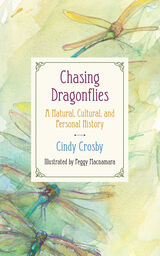 Chasing Dragonflies: A Natural, Cultural, and Personal History
Cindy Crosby; Illustrations by Peggy Macnamara
Northwestern University Press, 2020 Chasing Dragonflies: A Natural, Cultural, and Personal History is an engaging, beautifully illustrated introduction to these remarkable insects. Drawing on her experiences as a natural history instructor, dragonfly monitor, cancer survivor, grandmother, and steward, Crosby tells the stories of dragonflies: their roles in poetry and art, their fascinating sex life—unique within the animal kingdom—and their evolution from dark-water dwellers to denizens of the air. We follow Crosby and other citizen-scientists into the prairies, wetlands, and woodlands of the Midwest, where they observe the environment and chronicle dragonfly populations and migration to decipher critical clues about our changing waterways and climate.
Woven throughout are personal stories: reflections on the author’s cancer diagnosis and recovery, change, loss, aging, family, joy, and discovering what it means to be at home in the natural world. Crosby draws an intimate portrait of a landscape teeming with variety and mystery, one that deserves our attention and conservation. As warm as it is informative, this book will interest gardeners, readers of literary nonfiction, and anyone intrigued by transformation, whether in nature or our personal lives.
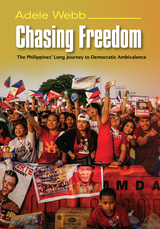 Chasing Freedom: The Philippines’ Long Journey to Democratic Ambivalence
Adele Webb
Sussex Academic Press, 2022 How did Rodrigo Duterte earn the support of large segments of the Philippine middle class, despite imposing arbitrary authority and offering little tolerance for dissent? Has the Filipino middle class, heroes of the 1986 People Power Revolution, given up on democracy? Chasing Freedom; retells the history of Philippine democracy, employing a genealogical approach that makes visible the forms of power that have shaped and constrained understandings of democracy. The book traces the attitudes of the Filipino middle class from the beginning of American colonization in 1898 to the present. It argues that democracy in country has been, and continues to be, lived in an ambivalent way—a result of the contradictions inherent in America's imperial project of 'democratic tutelage.' Humiliation of the colonial past fuels the imperative to search for more authentic self-determination; at the same time, Filipinos are haunted by self-doubt over the capacity of its people to correctly manage the freedom that democracy provides. This simultaneous 'yes' and 'no' has persisted after independence in 1946 until today; it is the masterful mobilization of this democratic ambivalence by authoritarian populists like Rodrigo Duterte that helps to explain the effectiveness of their political narratives for middle-class audiences. The Philippines is a bellwether case with lessons of global importance in an age when disenchantment with democracy is on the rise. While ambivalence may result in failure to meet a democratic ideal, it may, nevertheless, be one of democracy's safeguards. This work is at the forefront of recent debates about middle class-led 'democratic backsliding,' with scholars unable to reconcile the appeal of authoritarian populists amongst those who have historically been expected to be democracy's vanguard.
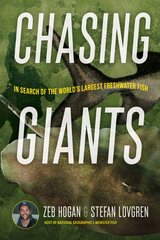 Chasing Giants: In Search of the World's Largest Freshwater Fish
Zeb Hogan
University of Nevada Press, 2023 Winner of the 2024 Los Angeles Book Festival Award in the Wild Card category!
On May 1, 2005, a Thai fisherman caught a truly monstrous Mekong giant catfish. At 646 pounds, it captured the world’s attention, and with awe and wonder, it was deemed the largest freshwater fish on record. There was no denying its size, but when biologist and research associate professor Hogan saw a photo of the fish, he wondered if it really was the biggest in the world. To his surprise, no one had systematically sought to answer the question: Which of the giant freshwater species really was the largest?
Seeking to answer that question has brought Hogan face to face with massive arapaima and piranha in the Amazon, alligator gar in Texas, pigeon-eating wels catfish in France, stingrays in Cambodia, and the gnarled-toothed sawfish in Australia. Part of his scientific adventure has been captured on Monster Fish, and Hogan now tells the full story of his 25-year quest to understand the mysteries of some of the oldest, largest, most bizarre creatures on Earth.
The fate of these giant fish motivates Hogan to understand the various species he studies. The megafish’s numbers are dwindling, and the majority of them face extinction. In this book, he teams up with award-winning journalist Stefan Lovgren to tell, for the first time, the remarkable and troubling story of the world’s largest freshwater fish. It is a story that stretches across the globe, chronicling a race against the clock to find and protect these ancient leviathans before they disappear forever.
Chasing Giants: In Search of the World’s Largest Freshwater Fish combines science, adventure, and wonder to provide insights into the key role the massive fish of our lakes and rivers play in our past, present, and future.
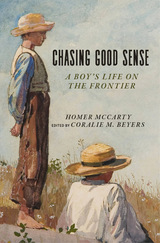 Chasing Good Sense: A Boy's Life on the Frontier
Homer McCarty and Coralie McCarty Beyers
University of Utah Press, 2018 In this creative memoir, Homer McCarty adopts the voice of seven-year-old Buck to recollect his own life growing up in rugged southern Utah Territory in the late 1800s. Although Buck’s reflections are necessarily imprecise—gathered from fragments of memory and then embellished freely—the stories he tells are an honest look at life on the frontier.
In the spirit of Huck Finn, Buck embarks on adventures and mischief with his loyal friend, Earl. Naïve, eager, and inquisitive, he seeks to make sense of his world. McCarty’s portrayal of the period is often humorous, capturing the intimacy of place and family through a young boy’s eyes.
McCarty completed this work in 1948. Had it not been for a series of fortuitous events and the dedication of his granddaughters, including Coralie Beyers, these pages would have been lost. Thanks to her efforts, her grandfather’s lively, entertaining book is now available for readers to relish and enjoy.
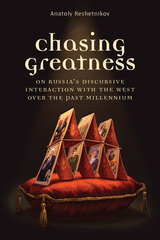 Chasing Greatness: On Russia's Discursive Interaction with the West over the Past Millennium
Anatoly Reshetnikov
University of Michigan Press, 2024 Over the last two decades, it has become clear that Russia insists on its great power status, even at considerable cost. Chasing Greatness provides an interpretive explanation of the tacit rules that shape Russia's great power identity today. Anatoly Reshetnikov argues that this never-ending chase for greatness is a result of how Russia and its predecessors—including the USSR, Russian Empire, Muscovy, and Kievan Rus’—historically interacted with its neighbors to the east, the south, and particularly the west. By analyzing an extensive amount of original source material, including primary sources that have not been previously translated into English, he is able to reconstruct a millennial history of the Russian concepts that express political greatness. He also traces numerous encounters between Russia and the West, as well as Russia’s troubled integration into the European society of states in the eighteenth and nineteenth centuries, to show how these concepts have affected Russia’s interaction with international society.
Despite its substantive historical depth, Chasing Greatness is not a book of history. Rather, it is a synthesizing social science work inspired by the continental tradition of the critical history of modernity. As such, the book is more about the present than about the past. Its main aim is to expose and explain the rich conceptual baggage behind Russia’s unceasing great power rhetoric (domestic and international) and how this rhetoric drives the current international crises involving Russia.
 Chasing Literacy: Reading and Writing in an Age of Acceleration
Daniel Keller
Utah State University Press, 2013 Arguing that composition should renew its interest in reading pedagogy and research, Chasing Literacy offers writing instructors and literacy scholars a framework for understanding and responding to the challenges posed by the proliferation of interactive and multimodal communication technologies in the twenty-first century. Employing case-study research of student reading practices, Keller explores reading-writing connections in new media contexts. He identifies a culture of acceleration—a gathering of social, educational, economic, and technological forces that reinforce the values of speed, efficiency, and change—and challenges educators to balance new “faster” literacies with traditional “slower” literacies. In addition, Keller details four significant features of contemporary literacy that emerged from his research: accumulation and curricular choices; literacy perceptions; speeds of rhetoric; and speeds of reading. Chasing Literacy outlines a new reading pedagogy that will help students gain versatile, dexterous approaches to both reading and writing and makes a significant contribution to this emerging area of interest in composition theory and practice.
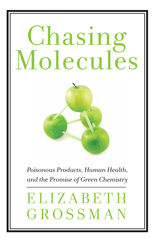 Chasing Molecules: Poisonous Products, Human Health, and the Promise of Green Chemistry
Elizabeth Grossman
Island Press, 2011 Each day, headlines warn that baby bottles are leaching dangerous chemicals, nonstick pans are causing infertility, and plastic containers are making us fat. What if green chemistry could change all that? What if rather than toxics, our economy ran on harmless, environmentally-friendly materials?
Elizabeth Grossman, an acclaimed journalist who brought national attention to the contaminants hidden in computers and other high tech electronics, now tackles the hazards of ordinary consumer products. She shows that for the sake of convenience, efficiency, and short-term safety, we have created synthetic chemicals that fundamentally change, at a molecular level, the way our bodies work. The consequences range from diabetes to cancer, reproductive and neurological disorders.
Yet it’s hard to imagine life without the creature comforts current materials provide—and Grossman argues we do not have to. A scientific revolution is introducing products that are “benign by design,” developing manufacturing processes that consider health impacts at every stage, and is creating new compounds that mimic rather than disrupt natural systems. Through interviews with leading researchers, Grossman gives us a first look at this radical transformation.
Green chemistry is just getting underway, but it offers hope that we can indeed create products that benefit health, the environment, and industry.
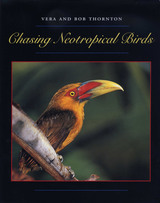 Chasing Neotropical Birds
Text by Bob Thornton, Photography by Vera and Bob Thornton
University of Texas Press, 2005 From Belize to Brazil, the forests of the American neotropics are home to an astonishing array of birds—over 3,700 different species, or nearly 40 percent of all the birds on earth. Because of this overwhelming abundance, birders come from all over the world to try to catch glimpses of species that can be found nowhere else, such as toucans and antbirds, motmots and manakins, bellbirds and cocks-of-the-rock, and practically all of the planet's hummingbirds. Two such birding enthusiasts are Vera and Bob Thornton, who have spent fifteen years photographing these special and exotic birds in the rainforests of eleven different countries of Central and South America. In this book, you'll find more than a hundred spectacular color photographs they took during their travels, along with a highly entertaining account of their adventures—and misadventures—in chasing these exotic neotropicals. The birds pictured here are among the Thorntons' personal favorites—birds that, in their words, "either dazzled us with their beauty, or charmed us by their behavior, or, in a few cases, simply challenged us by the mystique of their rarity." This latter category includes such elusive and sought-after birds as the Black-crowned Antpitta, the Zigzag Heron, the Rufous-vented Ground-Cuckoo, the Bare-necked Umbrellabird, and the monkey-eating Harpy Eagle. In the accompanying text, Bob Thornton engagingly describes the challenges as well as the magic of negotiating the neotropical rainforests in search of colorful birds to photograph. For those who would like to follow in the Thorntons' footsteps, there are also helpful tips about photographic gear and techniques, preferred places to see the birds, lodging, and guides. For everyone who enjoys excellent nature photography, Chasing Neotropical Birds is a must-have volume on the coffee table or in the library.
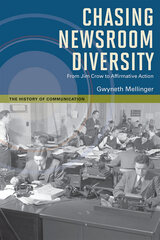 Chasing Newsroom Diversity: From Jim Crow to Affirmative Action
Gwyneth Mellinger
University of Illinois Press, 2013 Social change triggered by the Civil Rights Movement in the 1960s sent the American Society of Newspaper Editors (ASNE) on a fifty-year mission to dismantle an exclusionary professional standard that envisioned the ideal journalist as white, straight, and male. In this book, Gwyneth Mellinger explores the complex history of the decades-long ASNE diversity initiative, which culminated in the failed Goal 2000 effort to match newsroom demographics with those of the U.S. population. Drawing upon exhaustive reviews of ASNE archival materials, Mellinger examines the democratic paradox through the lens of the ASNE, an elite organization that arguably did more than any other during the twentieth century to institutionalize professional standards in journalism and expand the concepts of government accountability and the free press. The ASNE would emerge in the 1970s as the leader in the newsroom integration movement, but its effort would be frustrated by structures of exclusion the organization had embedded into its own professional standards. Explaining why a project so promising failed so profoundly, Chasing Newsroom Diversity expands our understanding of the intransigence of institutional racism, gender discrimination, and homophobia within democracy.
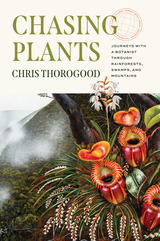 Chasing Plants: Journeys with a Botanist through Rainforests, Swamps, and Mountains
Chris Thorogood
University of Chicago Press, 2022 A New Scientist Best Book of the Year
From an acclaimed botanist and artist, a thrilling and beautifully illustrated expedition around the globe in search of the world’s most extraordinary plants.
After making a strange discovery on a childhood trip to Ikea—a stand of sap-sucking, leafless broomrapes, stealing nutrients from their neighbors’ roots—Chris Thorogood dreamed of becoming a botanist and would stop at nothing to feed his growing addiction to plants. In his hair-raising adventures across Europe, Africa, the Middle East, and Asia, Thorogood treads a death-defying path over cliffs, up erupting volcanoes, through typhoons, and out into the very heart of the world’s vast, green wilderness. Along the way, he encounters pitcher plants, irises, and orchids more heart-piercingly beautiful than could ever be imagined.
But with Thorogood as our guide in Chasing Plants, we not only imagine: we see. An internationally acclaimed botanical illustrator, Thorogood conjures his adventures spent seed-collecting and conserving plants around the world back to life in his electric paintings, which feature throughout the book. They bring plants out of the shadows, challenging us to see their intrigue and their character, and helping us to understand why plant species must be protected. To join Thorogood in his wild adventures is to be cast under his green spell: readers will never think of plants the same way again.
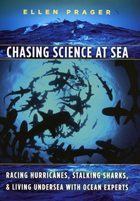 Chasing Science at Sea: Racing Hurricanes, Stalking Sharks, and Living Undersea with Ocean Experts
Ellen Prager
University of Chicago Press, 2008 To the average office-dweller, marine scientists seem to have the good life: cruising at sea for weeks at a time, swimming in warm coastal waters, living in tropical paradises. But ocean scientists who go to sea will tell you that it is no vacation. Creature comforts are few and the obstacles seemingly insurmountable, yet an abundance of wonder and discovery still awaits those who take to the ocean. Chasing Science at Sea immerses readers in the world of those who regularly go to sea—aquanauts living underwater, marine biologists seeking unseen life in the deep ocean, and the tall-ship captains at the helm, among others—and tells the fascinating tale of what life—and science—is like at the mercy of Mother Nature.
With passion and wit, well-known marine scientist Ellen Prager shares her stories as well as those of her colleagues, revealing that in the field ingenuity and a good sense of humor are as essential as water, sunblock, and GPS. Serendipity is invaluable, and while collecting data is the goal, sometimes just getting back to shore means success. But despite the physical hardship and emotional duress that come with the work, optimism and adventure prompt a particularly hardy species of scientist to return again and again to the sea.
Filled with firsthand accounts of the challenges and triumphs of dealing with the extreme forces of nature and the unpredictable world of the ocean, Chasing Science at Sea is a unique glimpse below the water line at what it is like and why it is important to study, explore, and spend time in one of our planet’s most fascinating and foreign environments.
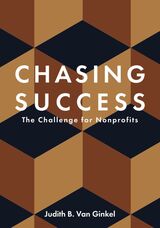 Chasing Success: The Challenge for Nonprofits
Judith Van Ginkel
University of Minnesota Press, 2023 A study of nonprofit administration, using the organization Every Child Succeeds as an example.
Chasing Success follows the first twenty years of the organization Every Child Succeeds under the leadership of their former Executive Director turned author, Judith Van Ginkel. Every Child Succeeds is a regional nonprofit located in Cincinnati, Ohio that focuses on home visitation and support for parents from pregnancy through the first one thousand days of their newborn’s life. The organization was born in the 1990s out of widespread scientific evidence about the impacts of early childhood on development across the lifespan.
Chasing Success uses the story of Every Child Succeeds as a case study for readers interested in the changing landscape of nonprofit administration. With the benefit of Van Ginkel’s years of experience in nonprofit management, this book offers concrete lessons about developing a new nonprofit, utilizing research and best practices, learning to be adaptable, and being accountable to stakeholders. Van Ginkel also explores how changing policies and funding priorities for larger national nonprofits and the state and federal governments can impact how regional nonprofits work to achieve their missions, an often underappreciated and under-discussed reality for many smaller organizations around the country.
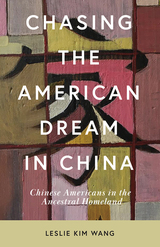 Chasing the American Dream in China: Chinese Americans in the Ancestral Homeland
Leslie Kim Wang
Rutgers University Press, 2021 Few studies have highlighted the stories of middle-class children of immigrants who move to their ancestral homelands—countries with which they share cultural ties but haven’t necessarily had direct contact. Chasing the American Dream in China addresses this gap by examining the lives of highly educated American-born Chinese (ABC) professionals who “return” to the People’s Republic of China to build their careers. Analyzing the motivations and experiences of these individuals deepens our knowledge about transnationalism among the second-generation as they grapple with complex issues of identity and societal belonging in the ethnic homeland. This book demonstrates how these professional migrants maneuver between countries and cultures to further their careers and maximize opportunities in the rapidly changing global economy. When used strategically, the versatile nature of their ethnic identities positions them as indispensable bridges between the global superpowers of China and the United States in their competition for global dominance.
 Chasing the Bowhead
Hartson H. Bodfish
Harvard University Press Everyone who craves a thrilling tale of adventure will be completely satisfied with this account of whaling days beyond the Arctic Circle. Captain Bodfish was the first whaling-master to spend a winter in the Arctic in order to lengthen the season. His book is filled with anecdotes, all told with dry Yankee humor, about the rivalry of various crews, living conditions in winter camps, the Eskimos, and the kind of hunting that was at the same time good sport and potential wealth. He has rescued from obliviscence a period of human activity that will probably never be repeated. After intriguing the summer visitors at Martha’s Vineyard for many years, his stories are here set down with illustrations selected from his own large Store of photographs.
The first master of a whaling vessel to spend a winter in the North in order to lengthen the whaling season has here narrated his thrilling career in this now extinct industry. His book is filled with anecdotes, all told with dry Yankee humor, about the rivalry of various crews, living conditions in winter camps, the Eskimos, and the kind of hunting that was at the same time good sport and potential wealth.
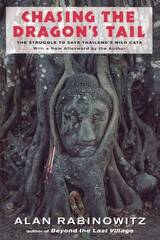 Chasing the Dragon's Tail: The Struggle to Save Thailand's Wild Cats
Alan Rabinowitz
Island Press, 2002 In 1987, zoologist Alan Rabinowitz was invited by the Thai government to study leopards, tigers, and other wildlife in the Huai Kha Khaeng valley, one of Southeast Asia's largest and most prized forests. It was hoped his research would help protect the many species that live in that fragile reserve, which was being slowly depleted by poachers, drug traffickers, and even the native tribes of the area. Chasing the Dragon's Tail is the remarkable story of Rabinowitz's life and adventures in the forest as well as the streets of Bangkok, as he works to protect Thailand's threatened wildlife. Based on Rabinowitz's field journals, the book offers an intimate and moving look at a modern zoologist's life in the field. As he fights floods, fire-ant infestations, elephant stampedes, and a request to marry the daughter of a tribal chief, the difficulties that come with the demanding job of species conservation are dramatically brought to life. First published in 1991, this edition of Chasing the Dragon's Tail includes a new afterword by the author that brings the story up to date, describing the surprising strides Thailand has made recently in conservation. Other titles by Alan Rabinowitz include Beyond the Last Village and Jaguar.
Chasing the Pearl-Manuscript: Speculation, Shapes, Delight
Arthur Bahr
University of Chicago Press, 2025 A unique study of the only physical manuscript containing Sir Gawain and the Green Knight as both a material and literary object.
In this book, Arthur Bahr takes a fresh look at the four poems and twelve illustrations of the so-called “Pearl-Manuscript,” the only surviving medieval copy of two of the best-known Middle English poems: Pearl and Sir Gawain and the Green Knight. In Chasing the Pearl-Manuscript, Bahr explores how the physical manuscript itself enhances our perception of the poetry, drawing on recent technological advances (such as spectroscopic analysis) to show the Pearl-Manuscript to be a more complex piece of material, visual, and textual art than previously understood. By connecting the manuscript’s construction to the intricate language in the texts, Bahr suggests new ways to understand both what poetry is and what poetry can do.
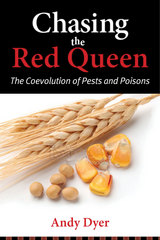 Chasing the Red Queen: The Evolutionary Race Between Agricultural Pests and Poisons
Andy Dyer
Island Press, 2015 In the race to feed the world’s seven billion people, we are at a standstill. Over the past century, we have developed increasingly potent and sophisticated pesticides, yet in 2014, the average percentage of U.S. crops lost to agricultural pests was no less than in 1944. To use a metaphor the field of evolutionary biology borrowed from Alice in Wonderland, farmers must run ever faster to stay in the same place—i.e., produce the same yields.
With Chasing the Red Queen, Andy Dyer offers the first book to apply the Red Queen Hypothesis to agriculture. He illustrates that when selection pressure increases, species evolve in response, creating a never-ending, perpetually-escalating competition between predator (us) and prey (bugs and weeds). The result is farmers are caught in a vicious cycle of chemical dependence, stuck using increasingly dangerous and expensive toxics to beat back progressively resistant pests.
To break the cycle, we must learn the science behind it. Dyer examines one of the world’s most pressing problems as a biological case study. He presents key concepts, from Darwin’s principles of natural selection to genetic variation and adaptive phenotypes. Understanding the fundamentals of ecology and biology is the first step to “playing the Red Queen,” and escaping her unwinnable race. The book’s novel frame will help students, researchers, and policy-makers alike apply that knowledge to the critical task of achieving food security.
 Chasing the Shadow: Mickey Marcus's 200 Days of Destiny
Steven L. Ossad
University of Missouri Press, 2024 The life of David “Mickey” Marcus has become the stuff of legends and myths (even fantasy), conspiracy, wild exaggeration, and untethered embellishment. The image of Marcus cast by the character portrayed by Kirk Douglas in the film version of his life still dominates most evocations of the man, for good or ill. And these days, reactions to the book or film rest mostly on the current headlines rather than the historical context of the struggle in which Marcus died, or the events that cast him as a real-life player in an event marked by destiny.
Chasing the Shadow: Mickey Marcus’s 200 Days of Destiny is the first comprehensive and balanced biography of David Daniel “Mickey” Marcus, a founder of American Civil Affairs and Military Government doctrine and practice and a seminal figure in early Israeli military history. Far from merely a tribute to Mickey Marcus's legacy, Ossad’s work serves as a critical tool for understanding the realities of mid-20th-century warfare in a Postwar colonial struggle and the dynamics of U.S.-Israeli military and political relations in 1948, the critical year for Israel’s struggle for independence. Indeed, Chasing the Shadow is a valuable read for those interested in Middle East history, Jewish military history, and a fascinating character whose story is told in an engaging, informative, and insightful narrative.
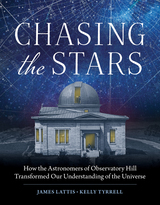 Chasing the Stars: How the Astronomers of Observatory Hill Transformed Our Understanding of the Universe
James Lattis
Wisconsin Historical Society Press, 2024 A richly illustrated history of Wisconsin’s astronomical innovations
Explore the remarkable story of Wisconsin astronomers whose curiosity, persistence, and innovation helped us better understand our universe.
Chasing the Stars traces the history of the University of Wisconsin’s Washburn Observatory, where some of the world’s most cutting-edge astronomical inventions were born. Learn about the earliest Indigenous stargazers, the women who worked as the first human computers, the astronomers who sold time by the stars, the scientists who shrank the Milky Way, and the crucial role Wisconsin astronomers played in the development of modern astrophysics and space astronomy.
This extraordinary book features more than 100 modern and historic photographs that illustrate the people and science behind Wisconsin’s astronomical innovations. Designed for lay readers and astronomers alike, Chasing the Stars inspires all of us to look up at the sky in wonder.
“Filled with fascinating astronomy-related facts, Chasing the Stars covers the first century-plus of the University of Wisconsin’s Washburn Observatory and the science it inspired. . . . [It is] a thorough, enlightening history of an important scientific site and the personalities who brought it to life.”
—Foreword Reviews
“Lattis and Tyrrell give us a masterful tour of Washburn Observatory, its legacy of astronomical discovery, and the key figures who forever changed our understanding of the cosmos. Readers will find delightful insights on these pages that bring this rich history to life and instill a desire to gaze at the stars.”
—Kenneth Sembach, former director of the Space Telescope Science Institute
“Through enchanting photos and compelling tales of astronomers, Lattis and Tyrrell shed light on the impressive innovations Wisconsin has contributed to the field of astrophysics. From the novel ways of collecting light from space to the new technologies sent to space on early satellites, readers will be fascinated to learn how Wisconsin astronomers have influenced our understanding of the universe.”
—Dr. Amanda Bauer, deputy director and head of science and education, Yerkes Observatory
“This fascinating and detailed account of the history of astronomy in Wisconsin highlights a diverse set of connections, from the construction of the University of Wisconsin’s first observatory in the late 1880s, to General Mills, Oscar Meyer, railroads, and the creation of the American Astronomical Society. Chasing the Stars recounts for us how Wisconsin’s astronomers came to be leaders in this field for more than a century and reminds us of why astronomy is a deeply human endeavor that appeals to professionals and nonprofessionals alike.”
—Dr. Andrea Ghez, UCLA astrophysicist and Nobel laureate
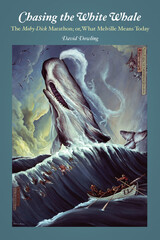 Chasing the White Whale: The Moby-Dick Marathon; or, What Melville Means Today
David Dowling
University of Iowa Press, 2010 The experimental artist Peter Fischli once observed, “There’s certainly a subversive pleasure in occupying yourself with something for an unreasonable length of time.” In this same spirit, David Dowling takes it upon himself to attend and report on the all-consuming annual Moby-Dick Marathon reading at the New Bedford Whaling Museum. The twenty-five-hour nonstop reading of Melville’s titanic epic has inspired this fresh look at Moby-Dick in light of its most devoted followers at the moment of their high holy day, January 3, 2009. With some trepidation, Dowling joined the ranks of the Melvillians, among the world’s most obsessive literary aficionados, to participate in the event for its full length, from “Call Me Ishmael” to the destruction of the Pequod. Dowling not only survived to tell his tale, but does so with erudition, humor, and a keen sense for the passions of his fellow whalers. The obsession of participants at the marathon reading is startling, providing evidence of Ishmael’s remark that “all men live enveloped in whale-lines. All are born with halters round their necks; but it is only when caught in the swift, sudden turn of death, that mortals realize the silent, subtle, ever-present perils of life.” Dowling organizes his savvy analysis of the novel from its romantic departure to its sledge-hammering seas, detailing the culture of the top brass to the common crew and scrutinizing the inscrutable in and through Melville’s great novel. Chasing the White Whale offers a case study of the reading as a barometer of how Melville lives today among his most passionate and enthusiastic disciples, who include waterfront workers, professors, naval officers, tattooed teens, and even a member of Congress. Dowling unearths Moby-Dick’s central role in these lives, and by going within the local culture he explains how the novel could have developed such an ardent following and ubiquitous presence in popular culture within our technology-obsessed, quick-fix contemporary world.
 Chasing the Wind: Inside the Alternative Energy Battle
Rody Johnson
University of Tennessee Press, 2014 Over the past few decades, the vexing problems of climate change and finite resources have ignited contentious global debates about alternative energy technologies. In this lucid, balanced book, Rody Johnson investigates the development and deployment of one such technology—wind power—and, in particular, the ways in which a heated battle over that energy source played out in an Appalachian community.
Johnson’s wide-ranging account examines the history of wind power; its capacity and output in comparison to such sources as fossil fuels, other renewables, and nuclear energy; the infrastructural challenges of transmitting electricity from wind farms to end users; global efforts to curb carbon emissions, including the Kyoto treaty; the role of public policy, government subsidies, and tax breaks; and the differences and similarities between wind power regimes in the United States and Europe.
Interwoven throughout this discussion is the compelling narrative of how, beginning in 2005, the proposed construction of a wind farm along mountain ridges in Greenbrier
County, West Virginia, pitted locals against each other—a story that puts a human face on the arguments about wind power’s promise of clean, renewable energy and its potentially negative effects, including bird and bat kills, a disfigured natural landscape, and noise pollution. Drawing on countless hours he spent attending public meetings and interviewing those on both sides of the issue, Johnson not only pictures the Greenbrier County struggle in illuminating detail but also makes valuable comparisons between it and similarly pitched battles in another West Virginia county, where a wind farm had already been built, and in Florida, where plans to erect beachside wind turbines next to a nuclear plant faltered.
Concluding with a thoughtful, realistic assessment of a 2012 study suggesting that the country has the capability of receiving 80 percent of its electrical generation from
renewables by 2050, Chasing the Wind makes a vital contribution to the ongoing dialogue regarding America’s energy challenges and what is likely required to meet them.
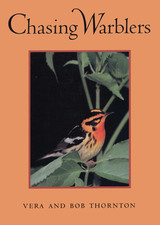 Chasing Warblers
By Vera and Bob Thornton
University of Texas Press, 1999 Honorable Mention, Southern Books Competition, 1999 Known to many as "the butterflies of the bird world," wood warblers allure even the most experienced and discriminating birders. Their annual migrations to and from nesting areas in the United States and Canada draw thousands of birders to places such as High Island, Texas; Crane Creek, Ohio; and Point Pelee, Ontario, where warblers stop to rest and feed during the long journey. There birders have a chance to see and photograph these colorful, elusive songbirds whose quick, darting flight among high branches and thick cover makes them some of the most challenging birds to observe and identify. In this entertaining, beautifully illustrated book, Bob Thornton recounts his and Vera Thornton's cross-continent adventures in finding and photographing all 52 species of wood warblers that nest in the United States. In addition to describing where and how they photographed each species, Thornton tells marvelous stories of the colorful characters they encountered along the way. He also touches on the current human threats to wood warblers that come from loss of habitat.
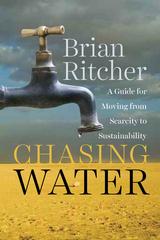 Chasing Water: A Guide for Moving from Scarcity to Sustainability
Brian Richter
Island Press, 2014 Water scarcity is spreading and intensifying in many regions of the world, with dire consequences for local communities, economies, and freshwater ecosystems. Current approaches tend to rely on policies crafted at the state or national level, which on their own have proved insufficient to arrest water scarcity. To be durable and effective, water plans must be informed by the culture, economics, and varied needs of affected community members.
International water expert Brian Richter argues that sustainable water sharing in the twenty-first century can only happen through open, democratic dialogue and local collective action. In Chasing Water, Richter tells a cohesive and complete story of water scarcity: where it is happening, what is causing it, and how it can be addressed. Through his engaging and nontechnical style, he strips away the complexities of water management to its bare essentials, providing information and practical examples that will empower community leaders, activists, and students to develop successful and long-lasting water programs.
Chasing Water will provide local stakeholders with the tools and knowledge they need to take an active role in the watershed-based planning and implementation that are essential for water supplies to remain sustainable in perpetuity.
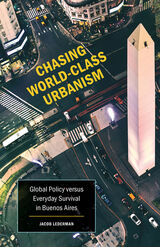 Chasing World-Class Urbanism: Global Policy versus Everyday Survival in Buenos Aires
Jacob Lederman
University of Minnesota Press, 2020 Questions increasingly dominant urban planning orthodoxies and whether they truly serve everyday city dwellers
What makes some cities world class? Increasingly, that designation reflects the use of a toolkit of urban planning practices and policies that circulates around the globe. These strategies—establishing creative districts dedicated to technology and design, “greening” the streets, reinventing historic districts as tourist draws—were deployed to build a globally competitive Buenos Aires after its devastating 2001 economic crisis. In this richly drawn account, Jacob Lederman explores what those efforts teach us about fast-evolving changes in city planning practices and why so many local officials chase a nearly identical vision of world-class urbanism.
Lederman explores the influence of Northern nongovernmental organizations and multilateral agencies on a prominent city of the global South. Using empirical data, keen observations, and interviews with people ranging from urban planners to street vendors he explores how transnational best practices actually affect the lives of city dwellers. His research also documents the forms of resistance enacted by everyday residents and the tendency of local institutions and social relations to undermine the top-down plans of officials. Most important, Lederman highlights the paradoxes of world-class urbanism: for instance, while the priorities identified by international agencies are expressed through nonmarket values such as sustainability, inclusion, and livability, local officials often use market-centric solutions to pursue them. Further, despite the progressive rhetoric used to describe urban planning goals, in most cases their result has been greater social, economic, and geographic stratification.
Chasing World-Class Urbanism is a much-needed guide to the intersections of culture, ideology, and the realities of twenty-first-century life in a major Latin American city, one that illuminates the tension between technocratic aspirations and lived experience.
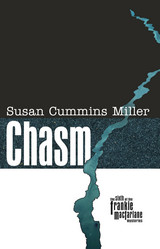 Chasm
Susan Cummins Miller
Texas Tech University Press, 2015 When colleague Dora Simpson asks Frankie MacFarlane to fill in as geology professor on a whitewater trip through the heart of the Grand Canyon, Frankie jumps at the chance. Eight days. Nearly two hundred miles on the river. One mile deep into the earth. What could go wrong?
Everything. Frankie wrenches her knee on the first day. On the second, a solo kayaker forces her to choose between being gutted by a Bowie knife and drowning in the frigid water. Frankie chooses the river. Who wants Frankie dead? And why? As Frankie searches for answers, she discovers that one of her students is traveling incognito, fleeing a forced marriage. Has the Family tracked Molly into the Canyon? How can she escape when the few exit routes will be watched?
The threads come together at Phantom Ranch, the only place in the Canyon where bridges link trails descending to the river from the North and South Rims. But will ecoterrorist wannabees bring down the bridges before anyone can escape?
With the riveting suspense and acute attention to geological detail that readers have come to love, Frankie faces the Colorado River rapids and the perilous mystery at hand with courage, skill, and ingenuity.
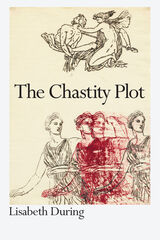 The Chastity Plot
Lisabeth During
University of Chicago Press, 2021 In The Chastity Plot, Lisabeth During tells the story of the rise, fall, and transformation of the ideal of chastity. From its role in the practice of asceticism to its associations with sovereignty, violence, and the purity of nature, it has been loved, honored, and despised. Obsession with chastity has played a powerful and disturbing role in our moral imagination. It has enforced patriarchy’s double standards, complicated sexual relations, and imbedded in Western culture a myth of gender that has been long contested by feminists. Still not yet fully understood, the chastity plot remains with us, and the metaphysics of purity continue to haunt literature, religion, and philosophy. Idealized and unattainable, sexual renunciation has shaped social institutions, political power, ethical norms, and clerical abuses. It has led to destruction and passion, to seductive fantasies that inspired saints and provoked libertines. As During shows, it should not be underestimated.
Examining literature, religion, psychoanalysis, and cultural history from antiquity through the middle ages and into modernity, During provides a sweeping history of chastity and insight into its subversive potential. Instead of simply asking what chastity is, During considers what chastity can do, why we should care, and how it might provide a productive disruption, generating new ways of thinking about sex, integrity, and freedom.
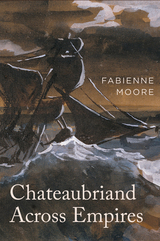 Chateaubriand Across Empires
Fabienne Moore
Bucknell University Press What happens when the liberty of ancient nobility collides with the revolutionary ideals of equality? This groundbreaking study explores how the American, French, Haitian, and Greek Revolutions redefined freedom—and how French Romantic figure Chateaubriand mourned that transformation. Tracing his travels across England, North America, and the Mediterranean, this book uncovers Chateaubriand’s seductive visions of “paradises lost,” which were taken up, challenged, and reimagined by Anglophone and Hispanic writers. From Charlotte Brontë to Harriet Beecher Stowe, from Byron to Bolaño shaping postcolonial identity, readers find in Chateaubriand a conflicted but powerful voice at the crossroads of liberty, race, religion, and empire. This is the first comprehensive study to situate Chateaubriand within the histories of colonialism and global revolution, revealing a literary legacy that remains startlingly relevant in today’s struggles over identity, power, and belonging. Published by Bucknell University Press. Distributed worldwide by Rutgers University Press.
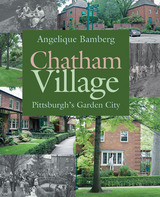 Chatham Village: Pittsburgh's Garden City
Angelique Bamberg
University of Pittsburgh Press, 2011
Chatham Village, located in the heart of Pittsburgh, is an urban oasis that combines Georgian colonial revival architecture with generous greenspaces, recreation facilities, surrounding woodlands, and many other elements that make living there a unique experience. Founded in 1932, it has gained international recognition as an outstanding example of the American Garden City planning movement and was named a National Historic Landmark in 2005.
Chatham Village was the brainchild of Charles F. Lewis, then director of the Buhl Foundation, a Pittsburgh-based charitable trust. Lewis sought an alternative to the substandard housing that plagued low-income families in the city. He hired the New York–based team of Clarence S. Stein and Henry Wright, followers of Ebenezer Howard’s utopian Garden City movement, which sought to combine the best of urban and suburban living environments by connecting individuals to each other and to nature.
Angelique Bamberg provides the first book-length study of Chatham Village, in which she establishes its historical significance to urban planning and reveals the complex development process, social significance, and breakthrough construction and landscaping techniques that shaped this idyllic community. She also relates the design of Chatham Village to the work of other pioneers in urban planning, including Frederick Law Olmsted Sr., landscape architect John Nolen, and the Regional Planning Association of America, and considers the different ways that Chatham Village and the later New Urbanist movement address a common set of issues. Above all, Bamberg finds that Chatham Village’s continued viability and vibrance confirms its distinction as a model for planned housing and urban-based community living.
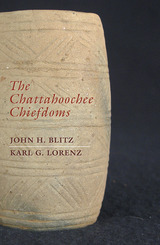 The Chattahoochee Chiefdoms
John H. Blitz and Karl G. Lorenz
University of Alabama Press, 2006 An overview and model of complex society in the prehistoric Southeast Along the banks of the lower Chattahoochee River, the remains of ancient settlements are abundant, including archaeological sites produced by Native Americans between 900 and 350 years ago, and marked by the presence of large earthen mounds. Like similar monuments elsewhere in the Southeastern United States, the lower Chatta-hoochee River mounds have long attracted the attention of travelers, antiquarians, and archaeologists.
As objects from the mounds were unearthed, occasionally illustrated and discussed in print, attention became focused on the aesthetic qualities of the artifacts, the origins of the remains, and the possible relationship to the Creek Indians. Beginning in the 20th century, new concerns emerged as the developing science of archaeology was introduced to the region. As many of the sites became threatened or destroyed by reservoir construction, trained archaeologists initiated extensive excavations of the mounds. Although classification of artifacts and sites into a chronological progression of cultures was the main objective of this effort, a second concern, sometimes more latent than manifest, was the reconstruction of a past way of life. Archaeologists hoped to achieve a better understanding of the sociopolitical organization of the peoples who built the mounds and of how those organizations changed through time.
Contemporary archaeologists, while in agreement on many aspects of the ancient cultures, debate the causes, forms, and degrees of sociopolitical complexity in the ancient Southeast. Do the mounds mark the capitals of political territories? If so, what was the scale and scope of these ancient “provinces”? What manner of society constructed the mound settlements? What was the sociopolitical organization of these long-dead populations? How can archaeologists answer such queries with the mute and sometimes ordinary materials with which they work: pottery, stone tools, organic residues, and the strata of remnant settlements, buildings, and mounds?
Chattahoochee: Poems
Patrick Phillips
University of Arkansas Press, 2004 Winner of the 2005 Kate Tufts Discovery Award.
From the author of Blood at the Root: A Racial Cleansing in America and the National Book Award finalist Elegy for a Broken Machine: Poems, here is the first collection from award-winning poet Patrick Phillips.
A river runs through Patrick Phillips’s collection Chattahoochee, and through a family saga as powerful and poignant as the landscape in which it unfolds. Here are tales of a vanished South, elegies for the lost, and glimpses of what Flannery O’Connor called the “action of grace in territory held largely by the devil.” In language delicate and muscular, tender and raw-boned, Phillips writes of family, place, and that mythic conjunction of the two we call home.
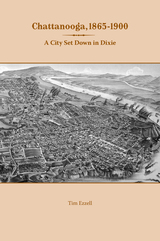 Chattanooga, 1865-1900: A City Set Down in Dixie
Tim Ezzell
University of Tennessee Press, 2013 After the Civil War, the city of Chattanooga, Tennessee, forged a different path than most southern urban centers. Long a portal to the Deep South, Chattanooga was largely rebuilt by northern men, using northern capital, and imbued with northern industrial values. As such, the city served as a cultural and economic nexus between North and South, and its northern elite stood out distinctively from the rest of the region’s booster class. In Chattanooga, 1865–1900, Tim Ezzell explores Chattanooga’s political and economic development from the close of the Civil War through the end of the nineteenth century, revealing how this unique business class adapted, prospered, and governed in the postwar South.
After reviewing Chattanooga’s wartime experience, Ezzell chronicles political and economic developments in the city over the next two generations. White Republicans, who dominated municipal government thanks to the support of Chattanooga’s large African American population, clashed repeatedly with Democrats, who worked to “redeem” the city from Republican rule and restore “responsible,” “efficient” government. Ezzell shows that, despite the efforts by white Democrats to undermine black influence, black Chattanoogans continued to wield considerable political leverage into the 1890s.
On the economic front, an extensive influx of northern entrepreneurs and northern capital into postwar Chattanooga led to dynamic if unstable growth. Ezzell details the city’s efforts to compete with Birmingham as the center of southern iron and steel production. At times, this vision was within reach, but these hopes faded by the 1890s, and Chattanooga grew into something altogether different: not northern, not southern, but something peculiar “set down in Dixie.”
Although Chattanooga never reached its Yankee boosters’ ideal of “a northern industrial city at home in the southern hills,” Ezzell demonstrates that it forged a legacy of resilience and resourcefulness that continues to serve the community to the present day.
Chattanooga: A Death Grip on the Confederacy
James Lee Mcdonough
University of Tennessee Press, 1989 Winner of the Tennessee History Book Award.
In the wake of the bloodshed at Chickamauga, the struggle for Chattanooga became a decisive engagement of the Civil War. McDonough reconstructs the siege and battles as they appeared to both Rebels and Yankees, giving the reader a front-row seat at one of the major dramas in American history.
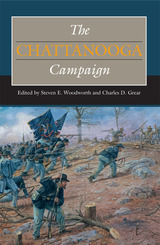 The Chattanooga Campaign
Steven E. Woodworth and Charles D. Grear
Southern Illinois University Press, 2012 When the Confederates emerged as victors in the Chickamauga Campaign, the Union Army of the Cumberland lay under siege in Chattanooga, with Braxton Bragg’s Army of Tennessee on nearby high ground at Missionary Ridge and Lookout Mountain. A win at Chattanooga was essential for the Confederates, both to capitalize on the victory at Chickamauga and to keep control of the gateway to the lower South. Should the Federal troops wrest control of that linchpin, they would cement their control of eastern Tennessee and gain access to the Deep South. In the fall 1863 Chattanooga Campaign, the new head of the western Union armies, Ulysses S. Grant, sought to break the Confederate siege. His success created the opportunity for the Union to start a campaign to capture Atlanta the following spring. Woodworth’s introduction sets the stage for ten insightful essays that provide new analysis of this crucial campaign. From the Battle of Wauhatchie to the Battle of Chattanooga, the contributors’ well-researched and vividly written assessments of both Union and Confederate actions offer a balanced discussion of the complex nature of the campaign and its aftermath. Other essays give fascinating examinations of the reactions to the campaign in northern newspapers and by Confederate soldiers from west of the Mississippi River. Complete with maps and photos, The Chattanooga Campaign contains a wealth of detailed information about the military, social, and political aspects of the campaign and contributes significantly to our understanding of the Civil War’s western theater.
Univeristy Press Books for Public and Secondary Schools 2013 edition
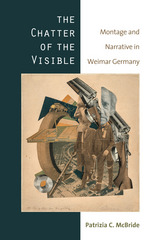 The Chatter of the Visible: Montage and Narrative in Weimar Germany
Patrizia C. McBride
University of Michigan Press, 2016 The Chatter of the Visible examines the paradoxical narrative features of the photomontage aesthetics of artists associated with Dada, Constructivism, and the New Objectivity. While montage strategies have commonly been associated with the purposeful interruption of and challenge to narrative consistency and continuity, McBride offers an historicized reappraisal of 1920s and 1930s German photomontage work to show that its peculiar mimicry was less a rejection of narrative and more an extension or permutation of it—a means for thinking in narrative textures exceeding constraints imposed by “flat” print media (especially the novel and other literary genres). McBride’s contribution to the conversation around Weimar-era montage is in her situation of the form of the work as a discursive practice in its own right, which affords humans a new way to negotiate temporality, as a particular mode of thinking that productively relates the particular to the universal, or as a culturally specific form of cognition.
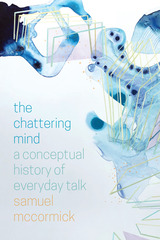 The Chattering Mind: A Conceptual History of Everyday Talk
Samuel McCormick
University of Chicago Press, 2020 From Plato’s contempt for “the madness of the multitude” to Kant’s lament for “the great unthinking mass,” the history of Western thought is riddled with disdain for ordinary collective life. But it was not until Kierkegaard developed the term chatter that this disdain began to focus on the ordinary communicative practices that sustain this form of human togetherness.
The Chattering Mind explores the intellectual tradition inaugurated by Kierkegaard’s work, tracing the conceptual history of everyday talk from his formative account of chatter to Heidegger’s recuperative discussion of “idle talk” to Lacan’s culminating treatment of “empty speech”—and ultimately into our digital present, where small talk on various social media platforms now yields big data for tech-savvy entrepreneurs.
In this sense, The Chattering Mind is less a history of ideas than a book in search of a usable past. It is a study of how the modern world became anxious about everyday talk, figured in terms of the intellectual elites who piqued this anxiety, and written with an eye toward recent dilemmas of digital communication and culture. By explaining how a quintessentially unproblematic form of human communication became a communication problem in itself, McCormick shows how its conceptual history is essential to our understanding of media and communication today.
The Chattertooth Eleven
Eduard Bass
Karolinum Press, 2009 In 1922, the same year that saw the establishment of the Czechoslovak Football Association, a former singer and cabaret director from Prague published a novel about soccer. Eighty-six years later, that novel, Eduard Bass’s The Chattertooth Eleven, has been reprinted more than thirty times, has been made into a film, and has become one of the most popular works of Czech fiction. The novel tells the extraordinary adventures of an ordinary father, Chattertooth, and his eleven sons—whom he has raised as an unbeatable soccer team. This humorous tale—set in the aftermath of World War I—celebrates fair play and perseverance while simultaneously taking a gently ironic stance towards the Czech infatuation with soccer. This edition, in a new graphic layout by Zdenek Ziegler, is accompanied by charming illustrations by Jirí Grus.
Chaucer and Becket’s Mother: "The Man of Law’s Tale," Conversion, and Race in the Middle Ages
Meriem Pagès
Arc Humanities Press, 2024 Less than a hundred years after Thomas Becket’s martyrdom at the hands of four of Henry II’s knights, his Anglo-Norman mother was transformed into a pagan princess who abandoned faith and kin for Becket’s father and Christianity. Pagès uses this wholly fictional legend about the saint to examine the place and function of conversion and mission in The Man of Law’s Tale, juxtaposing the tale with the legend about Becket’s mother to assess the power (or lack thereof) of baptism in late medieval English works. This new comparative study thus provides productive insights into the complexity of the emergence of the concept of race in medieval English culture and literature.
 Chaucer and The Legend of Good Women
Robert Worth Frank, Jr.
Harvard University Press, 1972 Designed to fill a gap in Chaucerianstudies, this book offers new insight intothe development of Chaucer's artistry at acritical point in his career, after he hadcompleted the Troilus and just beforehe embarked on The Canterbury Tales. Chaucer and "The Legend of GoodWomen" rejects the usual criticalassessment of the Legend, setting it forthinstead as a serious and experimental work,an important and necessary prelude tothe achievement of The Canterbury Tales.
Robert Worth Frank, Jr., begins hisanalysis of the Legend with a carefulconsideration of Chaucer's situation in1386, the year he presumably beganthe Legend. It was, he suggests, a momentin his career propitious for change--change in subject and in art as well. TheLegend reveals this change in the process ofits accomplishment.
Frank stresses that the road to TheCanterbury Tales runs through the Legend.In tracing the route he shows howChaucer broke away from the limited tradition of courtly love and experimented with a variety of tones and styles and an expanded range of subject matter, with a new verse form, the pentameter couplet, and with new techniques of compression which led to a greater dedication to the short narrative form. The individual legends, though not Chaucer's greatest creations, have merits of their own. The general uniformity of theme proves misleading. The legends provide Chaucer with a broader canvas than he had ever used before, making possible a wide variety in tone and dramatic incident.
Above all, this study, enlivened by the author's supple and spirited prose, depicts Chaucer boldly committing himself to the great world of story and thereby drawing on some of the most enduring classical myths for material and moving toward a new art and a new and richer realm of human experience.
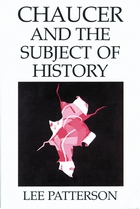 Chaucer and the Subject of History
Lee Patterson
University of Wisconsin Press, 1991 Renowned scholar of medieval literature, Lee Patterson, presents a compelling vision of the shape and direction of Geoffrey Chaucer’s entire career in Chaucer and the Subject of History.
Chaucer's interest in individuality was strikingly modern. At the same time he was profoundly aware of the pressures on individuality exerted by the past and by society—by history. This tension between the subject and history is Patterson's topic. He begins by showing how Chaucer’s understanding of history as a subject for poetry—a world to be represented and a cultural force affecting human action—began to take shape in his poems on classical themes, especially in Troilus and Criseyde. Patterson's extended analysis of this profound yet deeply conflicted exploration of the relationship between "history" and "the subject" provides the basis for understanding Chaucer's shift to his contemporary world in the Canterbury Tales. There, in the shrewdest and most wide-ranging analysis of late medieval society we possess, Chaucer investigated not just the idea of history but the historical world intimately related to his own political and literary career.
Patterson's chapters on individual tales clarify and confirm his provocative arguments. He shows, for example, how the Knight's Tale represents the contemporary crisis of governance in terms of a crisis in chivalric identity itself; how the Miller’s Tale reflects the social pressures and rhetoric of peasant movements generally and the Rising of 1381 in particular; and how the tales of the Merchant and Shipman register the paradoxical placement of a bourgeois class lacking class identity. And Patterson's brilliant readings of the Wife of Bath’s Tale—"the triumph of the subject"—and the Pardoner’s Tale —"the subject of confession"—reveal how Chaucer reworked traditional materials to accomplish stunning innovations that make visible unmistakably social meanings. Chaucer and the Subject of History is a landmark book, one that will shape the way that Chaucer is read for years to come.
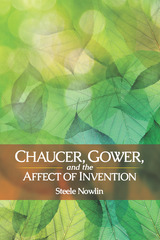 Chaucer, Gower, and the Affect of Invention
Steele Nowlin
Ohio State University Press, 2016 In this book, Steele Nowlin examines the process of poetic invention as it is conceptualized and expressed in the poetry of Geoffrey Chaucer (1343–1400) and John Gower (ca. 1330–1408). Specifically, it examines how these two poets present invention as an affective force, a process characterized by emergence and potentiality, and one that has a corollary in affect—that is, a kind of force or sensation distinct from emotion, characterized as an “intensity” that precedes what is only later cognitively understood and expressed as feeling or emotion, and that is typically described in a critical vocabulary of movement, emergence, and becoming.
Chaucer, Gower, and the Affect of Invention thus formulates a definition of affect that differs from most work in the recent “turn to affect” in medieval studies, focusing not on the representation of emotion or desire, or efforts to engage medieval alterity, but on the movement and emergence that precede emotional experience. It likewise argues for a broader understanding of invention in late medieval literature beyond analyses of rhetorical poetics and authorial politics by recuperating the dynamism and sense of potential that characterize inventional activity. Finally, its close readings of Chaucer’s and Gower’s poetry provide new insights into how these poets represent invention in order to engage the pervasive social and cultural discourses their poetry addresses.
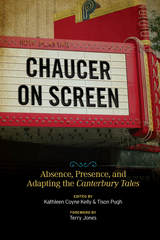 Chaucer on Screen: Absence, Presence, and Adapting the Canterbury Tales
Edited by Kathleen Coyne Kelly and Tison Pugh
Ohio State University Press, 2016 Unlike William Shakespeare, Jane Austen, Charles Dickens, and other great authors who have enjoyed continued success in Hollywood, Geoffrey Chaucer has largely been shunted to the margins of the cinematic world. Chaucer on Screen: Absence, Presence, and Adapting the Canterbury Tales, edited by Kathleen Coyne Kelly and Tison Pugh, investigates the various translations of Chaucer and the Canterbury Tales to film and television, tracing out how the legacies of the great fourteenth-century English poet have been revisited and reinterpreted through visual media. Contributors to this volume address the question of why Chaucer is so rarely adapted to the screen, and then turn to the occasional, often awkward, attempts to adapt his narratives, including such works as Michael Powell and Emeric Pressburger’s lyrical A Canterbury Tale (1944), Pier Paolo Pasolini’s still-controversial I racconti di Canterbury (1972), Bud Lee’s soft-core The Ribald Tales of Canterbury (1985), Brian Helgeland’s A Knight’s Tale (2001), and BBC television productions, among others. Chaucer on Screen aims to rethink some of the premises of adaptation studies and to erase the ideological lines between textual sources and visual reimaginings in the certainty that many pleasures, scholarly and otherwise, can found in multiple media across disparate eras.
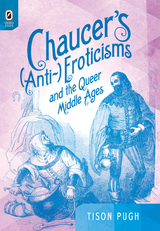 Chaucer's (Anti-)Eroticisms and the Queer Middle Ages
Tison Pugh
Ohio State University Press, 2014 Using queer theory to untangle all types of nonnormative sexual identities, Tison Pugh uses Chaucer’s work to expose the ongoing tension in the Middle Ages between an erotic culture that glorified love as an ennobling passion and an anti-erotic religious and philosophical tradition that denigrated love and (perhaps especially) its enactments. Chaucer’s (Anti-)Eroticisms and the Queer Middle Ages considers the many ways in which anti-eroticisms complicate the conventional image of Chaucer. With chapters addressing such topics as mutual masochism, homosocial brotherhood, necrotic erotics, queer families, and the eroticisms of Chaucer’s God, Chaucer’s (Anti-)Eroticisms will forever change the way readers see the Canterbury Tales and Chaucer’s other masterpieces.
For Chaucer, erotic pursuits establish the thrust and tenor of many of his narratives, as they also expose the frustrations inherent in pursuing desires frowned upon by the religious foundations of Western medieval culture. One cannot love freely within an ideological framework that polices sexuality and privileges the anti-erotic Christian ideals of virginity and chastity, yet loving queerly creates escapes from social structures inimical to amour and its expressions in the medieval period. Thus Chaucer is not just England’s foundational love poet, he is also England’s foundational queer poet.
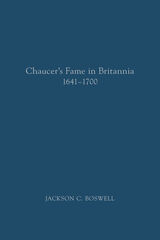 Chaucer’s Fame in Britannia 1641–1700
Jackson C. Boswell
Arizona Center for Medieval and Renaissance Studies, 2021 This volume is a compilation of references and allusions to Chaucer from the beginning of the English Civil War to the beginning of the eighteenth century. Chaucer’s Fame in Britannia 1641–1700 is a continuation of Jackson Campbell Boswell and Sylvia Wallace Holton’s Chaucer’s Fame in England: 1475–1640. Both books are meant to supplement the equivalent parts of Caroline Spurgeon’s invaluable Five Hundred Years of Chaucer Criticism and Allusion 1357–1900. Together, the two volumes considerably expand previous work in this area and offer a substantial contribution to intellectual history that gives us a much fuller and more profound understanding of Chaucer’s influence (and of his uses) during the period covered. Together, these volumes are a massive expansion of Spurgeon’s work. The references and allusions are full and, when possible, complete. Chaucer’s Fame in England: 1475–1640 has proven to be essential for those interested in the afterlives of Chaucer, and Chaucer’s Fame in Britannia 1641–1700 will take a similar place alongside its companion volume.
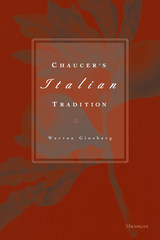 Chaucer's Italian Tradition
Warren Ginsberg
University of Michigan Press, 2002 In his latest book, Warren Ginsberg explores what he calls Chaucer's "Italian tradition," a discourse that emerges by viewing the social institutions and artistic modes that shaped Chaucer's reception of Dante, Boccaccio, and Petrarch. While offering a fresh look at one of England's great literary figures, this book addresses important questions about the dynamics of cross-cultural translation and the formation of tradition.
Because divergent political, municipal, and literary histories would have made the Italian cities--Genoa, Florence, and Milan--unfamiliar to an English poet from medieval London, Ginsberg argues that we must consider what Chaucer overlooked and mistook from his Italian models alongside the material he did appropriate. To make sense of premises in texts like Dante's Comedy that were peculiarly Italian, Chaucer would look to Boccaccio as a gloss; by reading these authors in conjunction with one another, Chaucer generates an "Italian tradition" that translates into the terms of his English experience works already mediated by a prior stage of transposition.
Ginsberg explores Chaucer's relationship to Italian poets not in terms of the interaction of individual talents with accredited authorities (Chaucer and Dante, Boccaccio and Petrarch, etc.). Rather, he focuses on the shifts in tension that occur when the civic engagements and disengagements of Florence's poets are brought into contact with Chaucer's growing metropolitanism and increasing reluctance to make London the locus of his poetic art.
Beyond its appeal to medievalists and those who study the Renaissance, Chaucer's Italian Tradition will be welcomed by readers interested in theoretical questions about translation and the development of tradition, including individuals who study history, literature, and the nature of the humanities.
Warren Ginsberg is Professor of English, University of Oregon.
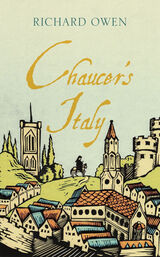 Chaucer's Italy
Richard Owen
Haus Publishing, 2023 An exploration of the influence of Italy and Italians on Chaucer’s life and writing.
Geoffrey Chaucer might be considered the quintessential English writer, but he drew much of his inspiration and material from Italy. In fact, without the tremendous influence of Francesco Petrarch and Giovanni Boccaccio (among others), the author of The Canterbury Tales might never have assumed his place as the “father” of English literature. Nevertheless, Richard Owen’s Chaucer’s Italy begins in London, where the poet dealt with Italian merchants in his roles as court diplomat and customs official. Next Owen takes us, via Chaucer’s capture at the siege of Rheims, to his involvement in arranging the marriage of King Edward III’s son Lionel in Milan and his missions to Genoa and Florence. By scrutinizing his encounters with Petrarch, Boccaccio, and the mercenary knight John Hawkwood—and with vividly evocative descriptions of the Arezzo, Padua, Florence, Certaldo, and Milan that Chaucer would have encountered—Owen reveals the deep influence of Italy’s people and towns on Chaucer’s poems and stories. Much writing on Chaucer depicts a misleadingly parochial figure, but as Owen’s enlightening short study of Chaucer’s Italian years makes clear, the poet’s life was internationally eventful. The consequences have made the English canon what it is today.
 Chaucer’s Queer Nation
Glenn Burger
University of Minnesota Press, 2003 Draws parallels between questions of identity in Chaucer’s time and our own. Bringing the concerns of queer theory and postcolonial studies to bear on Chaucer’s Canterbury Tales, this ambitious book compels a rethinking not only of this most canonical of works, but also of questions of sexuality and gender in pre- and postmodern contexts, of issues of modernity and nation in historiography, and even of the enterprise of historiography itself. Glenn Burger shows us Chaucer uneasily situated between the medieval and the modern, his work representing new forms of sexual and communal identity but also enacting the anxieties provoked by such departures from the past. Burger argues that, under the pressure of producing a poetic vision for a new vernacular English audience in the Canterbury Tales, Chaucer reimagines late medieval relations between the body and the community. In close readings that are at once original, provocative, and convincing, Chaucer’s Queer Nation helps readers to see the author and audience constructed with and by the Tales as subjects-in-process caught up in a conflicted moment of "becoming." In turn, this historicization unsettles present-day assumptions about identity with the realization that social organizations of the body can be done differently.
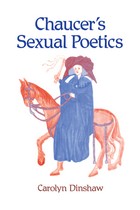 Chaucer's Sexual Poetics
Carolyn Dinshaw
University of Wisconsin Press, 1990 Through an analysis of the poems Chaucers wordes Unto Adam, His Owne Scriveyn, Troilus and Criseyde, the Legend of Good Women, the Man of Law’s Tale, the Wife of Bath’s Tale and its Prologue, the Clerk’s Tale, and the Pardoner’s Tale, Carolyn Dinshaw offers a provocative argument on medieval sexual constructs and Chaucer’s role in shaping them. Operating under the assumption that people read and write certain ways based upon society’s demands, Dinshaw examines gender identity and the effects of a patriarchal society. The focal point of Dinshaw’s argument is the idea that the literary text can be seen as the female body while any literary activities upon the text are decidedly male. Through a series of six provocative essays, Dinshaw argues that Chaucer was not only aware that gender is a social construction, but that he self-consciously worked to oppose the dominance of masculinity that a patriarchal society places on texts by creating works in which gender identity and hierarchy were more fluid.
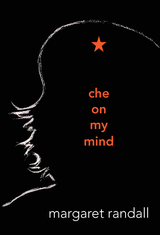 Che on My Mind
Margaret Randall
Duke University Press, 2013 Che on My Mind is an impressionistic look at the life, death, and legacy of Che Guevara by the renowned feminist poet and activist Margaret Randall. Recalling an era and this figure, she writes, "I am old enough to remember the world in which [Che] lived. I was part of that world, and it remains a part of me." Randall participated in the Mexican student movement of 1968 and eventually was forced to leave the country. She arrived in Cuba in 1969, less than two years after Che's death, and lived there until 1980. She became friends with several of Che's family members, friends, and compatriots. In Che on My Mind she reflects on his relationships with his family and fellow insurgents, including Fidel Castro. She is deeply admiring of Che's integrity and charisma and frank about what she sees as his strategic errors. Randall concludes by reflecting on the inspiration and lessons that Che's struggles might offer early twenty-first-century social justice activists and freedom fighters.
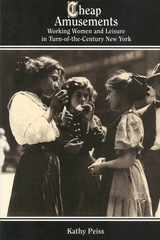 Cheap Amusements
Kathy Peiss
Temple University Press, 1987 What did young, independent women do for fun and how did they pay their way into New York City's turn-of-the-century pleasure places? Cheap Amusements is a fascinating discussion of young working women whose meager wages often fell short of bare subsistence and rarely allowed for entertainment expenses.
Kathy Peiss follows working women into saloons, dance halls, Coney Island amusement parks, social clubs, and nickelodeons to explore the culture of these young women between 1880 and 1920 as expressed in leisure activities. By examining the rituals and styles they adopted and placing that culture in the larger context of urban working-class life, she offers us a complex picture of the dynamics shaping a working woman's experience and consciousness at the turn-of-the-century. Not only does her analysis lead us to new insights into working-class culture, changing social relations between single men and women, and urban courtship, but it also gives us a fuller understanding of the cultural transformations that gave rise to the commercialization of leisure.
The early twentieth century witnessed the emergence of "heterosocial companionship" as a dominant ideology of gender, affirming mixed-sex patterns of social interaction, in contrast to the nineteenth century's segregated spheres. Cheap Amusements argues that a crucial part of the "reorientation of American culture" originated from below, specifically in the subculture of working women to be found in urban dance halls and amusement resorts.
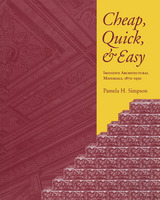 Cheap, Quick, & Easy: Imitative Architectural Materials, 1870–1930
Pamela H. Simpson
University of Tennessee Press, 1999
Winner of the Best Book Award (Southeast Society for Architectural Historians) and the Abbott Lowell Cummings Award (Vernacular Architecture Forum).
In this innovative study, Pamela H. Simpson examines the architectural materials that proliferated between 1870 and 1930. Produced by new technology, promoted by new forms of advertising, and eagerly adopted by a new middle class, these “cheap, quick, and easy” materials helped to transform building practices in the United States and Great Britain.
As Simpson shows in fascinating detail, rockface concrete blocks, pressed metal imitations of stone, linoleum “marble” and “parquet,” and embossed wall coverings made available to the masses a host of ornamental effects that only the wealthy could previously have afforded. But, she notes, wherever these new materials appeared, a heated debate over the appropriateness of imitation followed. Were these materials merely tasteless shams? Or were they economical, durable alternatives that democratically extended the possibilities of ornamentation?
Simpson devotes chapters to each of the various ornamental materials, considering its precursors, invention, production, and distribution. In her final chapter, she traces the history of the aesthetic debate over imitation and analyzes the social meaning of the materials. Far from being “bad taste,” she concludes, these new ornamental forms reflected modernism, democracy, and progress—some of the most deeply held values of the period.
Cheap Rooms and Restless Hearts: A Study of Formula in the Urban Tales of William Sydney Porter
Karen Charmaine Blansfield
University of Wisconsin Press, 1988 This book provides close look at the predominant character types and plot patterns found in the urban stories of William Sydney Porter (more familiarly known as O. Henry), analyzing how these elements structure his tales and contribute to his popular formulas. Blansfield also examines Porter’s adventurous but troubled background—as a ranch hand, cowboy, bank teller, journalist, prisoner, fugitive, and more—to see how his own experience shaped these aspects of his fiction. The book considers how the bustling, turbulent conditions of New York City at the turn of the century helped to launch Porter’s [O. Henry’s] meteoric career.
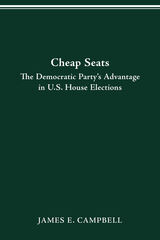 CHEAP SEATS: The Democratic Party’s Advantage in U.S. House Elections
James E. Campbell
Ohio State University Press, 1996 The longest continuous majority in the history of the U.S. House of Representatives came to a dramatic close with the 1994 midterm elections. The Democratic Party had controlled the House for forty years—two and a half times as long as any previous majority. In Cheap Seats, James E. Campbell considers the reasons why the Democrats dominated House elections for four decades and why they ultimately lost that control. Examining the structural advantages that helped congressional Democrats, Campbell finds that their unprecedented success in the House was due in no small measure to a favorable election system, an advantage in the way in which votes are translated into House seats. His straightforward analysis indicates that Democrats consistently win most of the very-low-turnout districts, or “cheap seats.” In fact, because of the party's continued hold on such districts, the new Democratic minority is considerably larger than it would otherwise have been. Cheap Seats is a thorough and innovative investigation into the electoral system's impact on partisan politics and representation in Congress. Campbell presents an impressive array of evidence, including both quantitative analysis of election returns from 1936 to 1994 and in-depth studies of several cheap-seat districts. He also explores the important theoretical issues of representation that cheap seats raise and offers several proposals to reform the system. This well-written and provocative volume is accessible to anyone interested in American politics, in addition to scholars especially interested in the areas of Congress, elections, electoral systems, and political parties.
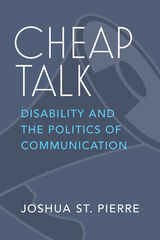 Cheap Talk: Disability and the Politics of Communication
Joshua St. Pierre
University of Michigan Press, 2022 In Cheap Talk: Disability and the Politics of Communication, Joshua St. Pierre flips the script on communication disability, positioning the unruly, disabled speaker at the center of analysis to challenge the belief that more communication is unquestionably good. Working with Gilles Deleuze’s suggestion that “[w]e don’t suffer these days from any lack of communication, but rather from all the forces making us say things when we’ve nothing much to say,” St. Pierre brings together the unlikely trio of the dysfluent speaker, the talking head, and the troll to show how speech is made cheap—and produced and repaired within human bodies—to meet the inhuman needs of capital. The book explores how technologies, like social media and the field of speech-language pathology, create smooth sites of contact that are exclusionary for disabled speakers and looks to the political possibilities of disabled voices to “de-face” the power of speech now entwined with capital.
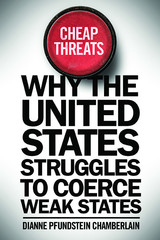 Cheap Threats: Why the United States Struggles to Coerce Weak States
Dianne Pfundstein Chamberlain
Georgetown University Press Why do weak states resist threats of force from the United States, especially when history shows that this superpower carries out its ultimatums? Cheap Threats upends conventional notions of power politics and challenges assumptions about the use of compellent military threats in international politics. Drawing on an original dataset of US compellence from 1945 to 2007 and four in-depth case studies—the Cuban Missile Crisis, the 2011 confrontation with Libya, and the 1991 and 2003 showdowns with Iraq—Dianne Pfundstein Chamberlain finds that US compellent threats often fail because threatening and using force became comparatively “cheap” for the United States after the Cold War. Becoming the world’s only superpower and adopting a new light-footprint model of war, which relied heavily on airpower and now drones, have reduced the political, economic, and human costs that US policymakers face when they go to war. Paradoxically, this lower-cost model of war has cheapened US threats and fails to signal to opponents that the United States is resolved to bear the high costs of a protracted conflict. The result: small states gamble, often unwisely, that the United States will move on to a new target before achieving its goals. Cheap Threats resets the bar for scholars and planners grappling with questions of state resolve, hegemonic stability, effective coercion, and other issues pertinent in this new era of US warfighting and diplomacy.
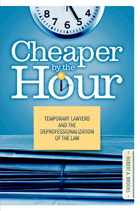 Cheaper by the Hour: Temporary Lawyers and the Deprofessionalization of the Law
Authored by Robert A. Brooks
Temple University Press, 2012 Recent law school graduates often work as temporary attorneys, but law firm layoffs and downsizing have strengthened the temporary attorney industry. Cheaper by the Hour is the first book-length account of these workers.
Drawing from participant observation and interviews, Robert A. Brooks provides a richly detailed ethnographic account of freelance attorneys in Washington, DC. He places their document review work in the larger context of the deprofessionalization of skilled labor and considers how professionals relegated to temporary jobs feel diminished, degraded, or demeaned by work that is often tedious, repetitive, and well beneath their abilities.
Brooks documents how firms break a lawyer's work into discrete components that require less skill to realize maximum profits. Moreover, he argues that information technology and efficiency demands are further stratifying the profession and creating a new underclass of lawyers who do low-end commodity work.
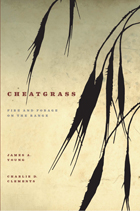 Cheatgrass: Fire and Forage on the Range
James A. Young
University of Nevada Press, 2009 Cheatgrass (Bromus tectorum) is an exotic species that appeared in North America in the late nineteenth century and has since become a dominant plant in the arid and semiarid rangelands between the Sierra Nevadas, Cascades, and Rocky Mountains. It is the first grass to appear after the region's long, cold winters and thus has become an important forage plant for livestock and wildlife. Cheatgrass is also a major environmental hazard in the sagebrush plant communities where it has established itself, providing highly combustible fuel for the wildfires that have ravaged so much of the Great Basin since the mid-twentieth century. Cheatgrass is the first comprehensive study of this highly invasive plant that has changed the ecology of millions of acres of western rangeland. Authors Young and Clements have researched the biology and impact of cheatgrass for four decades. Their book addresses the subject from several perspectives: the history of the invasion; the origins and biology of cheatgrass; its genetic variations, breeding systems, and patterns of distribution; its impact on grazing management; and the role it plays, both positive and negative, in the lives of high desert wildlife.
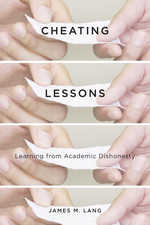 Cheating Lessons: Learning from Academic Dishonesty
James M. Lang
Harvard University Press, 2013 Nearly three-quarters of college students cheat during their undergraduate careers, a startling number attributed variously to the laziness of today’s students, their lack of a moral compass, or the demands of a hypercompetitive society. For James Lang, cultural or sociological explanations like these are red herrings. His provocative new research indicates that students often cheat because their learning environments give them ample incentives to try—and that strategies which make cheating less worthwhile also improve student learning. Cheating Lessons is a practical guide to tackling academic dishonesty at its roots.
Drawing on an array of findings from cognitive theory, Lang analyzes the specific, often hidden features of course design and daily classroom practice that create opportunities for cheating. Courses that set the stakes of performance very high, that rely on single assessment mechanisms like multiple-choice tests, that have arbitrary grading criteria: these are the kinds of conditions that breed cheating. Lang seeks to empower teachers to create more effective learning environments that foster intrinsic motivation, promote mastery, and instill the sense of self-efficacy that students need for deep learning.
Although cheating is a persistent problem, the prognosis is not dire. The good news is that strategies which reduce cheating also improve student performance overall. Instructors who learn to curb academic dishonesty will have done more than solve a course management problem—they will have become better educators all around.
Cheating Monkeys and Citizen Bees: The Nature of Cooperation in Animals and Humans
Lee Dugatkin
Harvard University Press Here biologist Lee Dugatkin outlines four paths to cooperation shared by humans and other animals: family dynamics, reciprocal transactions (or "tit for tat"), so-called selfish teamwork, and group altruism. He draws on a wealth of examples—from babysitting among mongooses and food sharing among vampire bats to cooperation in Hutterite communities and on kibbutzim—o show not only that cooperation exists throughout the animal kingdom, but how an understanding of the natural history of altruism might foster our own best instincts toward our fellow humans.
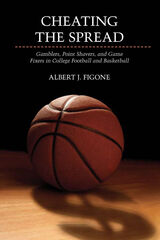 Cheating the Spread: Gamblers, Point Shavers, and Game Fixers in College Football and Basketball
Albert J. Figone
University of Illinois Press, 2012 Delving into the history of gambling and corruption in intercollegiate sports, Cheating the Spread recounts all of the major gambling scandals in college football and basketball. Digging through court records, newspapers, government documents, and university archives and conducting private interviews, Albert J. Figone finds that game rigging has been pervasive and nationwide throughout most of the sports' history. The insidious practice has spread to implicate not only bookies and unscrupulous gamblers but also college administrators, athletic organizers, coaches, fellow students, and the athletes themselves. Naming the players, coaches, gamblers, and go-betweens involved, Figone discusses numerous college basketball and football games reported to have been fixed and describes the various methods used to gain unfair advantage, inside information, or undue profit. His survey of college football includes early years of gambling on games between established schools such as Yale, Princeton, and Harvard; Notre Dame's All-American halfback and skilled gambler George Gipp; and the 1962 allegations of insider information between Alabama coach Paul "Bear" Bryant and former Georgia coach James Wallace "Wally" Butts; and many other recent incidents. Notable events in basketball include the 1951 scandal involving City College of New York and six other schools throughout the East Coast and the Midwest; the 1961 point-shaving incident that put a permanent end to the Dixie Classic tournament; the 1978 scheme in which underworld figures recruited and bribed several Boston College players to ensure a favorable point spread; the 1994-95 Northwestern scandal in which players bet against their own team; and other recent examples of compromised gameplay and gambling.
A Check List of North American Amphibians and Reptiles: Fourth Edition
Leonhard Stejneger and Thomas Barbour
Harvard University Press In this fourth edition of the well-known Check-List of Stejneger and Barbour, the information has been thoroughly revised and brought up to date. The value and usefulness of the work are well attested by continued demands for it and the consequent necessity of this new edition.
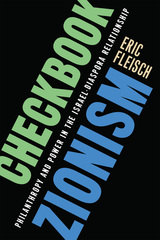 Checkbook Zionism: Philanthropy and Power in the Israel-Diaspora Relationship
Eric Fleisch
Rutgers University Press, 2024 American Jews donate approximately $2.5 billion to Israel each year. Behind all that money and influence lies a power-sharing dynamic that has left an indelible mark on the relationship between Israeli and American Jews and on the direction of Israeli society to this day. Checkbook Zionism investigates how both parties have managed their interests, emotions, and attitudes about the important yet at times tense collaboration between them.
By delving into the history of American Jews’ philanthropic giving to Israelis, Fleisch assesses the core nature of power sharing between both sides of the Jewish diaspora to the United States through in-depth contemporary case studies of the relationship between sixteen non-governmental organizations and their American Jewish donors. Field observation, document analysis, and interviews with leaders, activists, and select donors alike serve a critical role here, as Fleisch assesses whether these contemporary philanthropic associations repeat classic dynamics of power-sharing or whether they represent a marked departure from the Checkbook Zionism of old. The result is a new paradigm for evaluating power sharing that can be applied to future considerations of development in the Israel-Diaspora relationship.
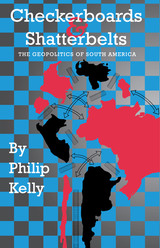 Checkerboards and Shatterbelts: The Geopolitics of South America
By Philip Kelly
University of Texas Press, 1997 Geography has always played a major role in world politics. In this study, Philip Kelly maps the geopolitics of South America, a continent where relative isolation from the power centers in North America and Eurasia and often forbidding internal terrain have given rise to a fascinating and unique geopolitical structure. Kelly uses the geographical concepts of "checkerboards" and "shatterbelts" to characterize much of South America's geopolitics and to explain why the continent has never been unified nor dominated by a single nation. This approach accounts for both historical relationships among South American countries and for such current situations as Brazil's inability to extend its authority across the continent from Atlantic to Pacific, its traditional competition with Argentina, its territorial expansion toward the continental heartlands, its encirclement by neighbors fearful of such expansion, and its recent rapprochement with Argentina. An important component of this book is the incorporation of the thinking and writing of South American geopolitical analysts, which leads to an interesting inventory of viewpoints on frontier conflicts, territorial expansion, industrial development, economic cooperation, and United States and European relations. Kelly's findings will be important reading for geographers, political scientists, and students and scholars of Latin American history.
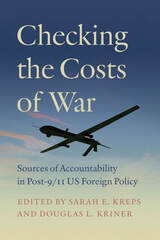 Checking the Costs of War: Sources of Accountability in Post-9/11 US Foreign Policy
Edited by Sarah E. Kreps and Douglas L. Kriner
University of Chicago Press, 2025 A thorough reassessment of how domestic factors do and do not constrain the use of American military force abroad in the early twenty-first century. More than two decades have passed since the September 11th terrorist attacks resuscitated debates about the “imperial presidency” within the United States. During that same time, the United States has fought costly and inconclusive wars in Iraq and Afghanistan, pivoted to the Pacific to counter China, and pulled its gaze back to Europe and the Middle East in response to wars in Ukraine and Gaza. Moreover, new technologies and ways of funding and staffing wars have made the costs of war less visible to the public while polarization has increased and a new legal doctrine of presidential power has gained force. Against this backdrop, Checking the Costs of War reassesses how domestic factors have both constrained and failed to constrain the use of military power across different contexts and over time. Richly empirical chapters explore the varying effects of different kinds of potential checks: legislative, public opinion, and bureaucratic. Collectively, chapters offer new insight into the prospects for war and peace today.
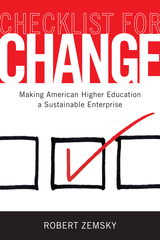 Checklist for Change: Making American Higher Education a Sustainable Enterprise
Zemsky, Robert
Rutgers University Press, 2013 Almost every day American higher education is making news with a list of problems that includes the incoherent nature of the curriculum, the resistance of the faculty to change, and the influential role of the federal government both through major investments in student aid and intrusive policies. Checklist for Change not only diagnoses these problems, but also provides constructive recommendations for practical change.
Robert Zemsky details the complications that have impeded every credible reform intended to change American higher education. He demythologizes such initiatives as the Morrill Act, the GI Bill, and the Higher Education Act of 1972, shedding new light on their origins and the ways they have shaped higher education in unanticipated and not commonly understood ways. Next, he addresses overly simplistic arguments about the causes of the problems we face and builds a convincing argument that well-intentioned actions have combined to create the current mess for which everyone is to blame.
Using provocative case studies, Zemsky describes the reforms being implemented at a few institutions with the hope that these might serve as harbingers of the kinds of change needed: the University of Minnesota at Rochester’s compact curriculum in the health sciences only, Whittier College’s emphasis on learning outcomes, and the University of Wisconsin Oshkosh’s coherent overall curriculum.
In conclusion, Zemsky describes the principal changes that must occur not singly but in combination. These include a fundamental recasting of federal financial aid; new mechanisms for better channeling the competition among colleges and universities; recasting the undergraduate curriculum; and a stronger, more collective faculty voice in governance that defines not why, but how the enterprise must change.
Checklist of the British & Irish Basidiomycota
M. Legon, A. Henrici, T. J. Roberts, and V. N. Spooner
Royal Botanic Gardens, Kew, 2005 The first comprehensive checklist of the fungi of Great Britain and Ireland, providing publication references and brief habitat, frequency and distribution details for all 3,760 species of mushroom, toadstool, bracket fungus, puffball, earthstar, stinkhorn, club and coral, tooth and jelly, fungus as well as the rusts and smuts, recorded in the British Isles. References are also given for a further 12,500 synonyms and excluded taxa (many being old or doubtful names), with notes on the reasons for their exclusion from the current listing.
An essential companion for amateur and professional mycologists, and a valuable reference tool for all wildlife recorders, ecologists and conservationists.
 Checkpoint 300: Colonial Space in Palestine
Mark Griffiths
University of Minnesota Press, 2025 Tracing how a notorious checkpoint shapes power, resistance, and lives in Palestine Checkpoint 300, the highly securitized border facility between occupied Bethlehem and Jerusalem, is a central feature of Israeli control of Palestinian land and life. An apparatus of turnstiles, overcrowded corridors, and invasive inspections, the checkpoint regulates the movement of hundreds of thousands of Palestinians, granting access to some while excluding most. Offering a nuanced exploration of space, Mark Griffiths reveals Checkpoint 300 as a stark symbol of Israeli colonialism that embodies larger systems of control and violence. Griffiths’s sensitive and timely work highlights the myriad ways Palestinians are affected by Israel’s spatial control—whether they travel through the checkpoint or not—demonstrating how colonial infrastructures of inequity extend far beyond their physical boundaries to shape daily life. Drawing on nearly a decade of fieldwork, Griffiths examines how colonial power infiltrates family dynamics, enforces gendered mobility restrictions, shapes local economies, and extends into the global exchange of capital and security technologies. He also underscores how Palestinians endure and resist under oppressive conditions and how indigenous forms of life and living are sustained, illuminating how colonial space is contested and countered, unmade and remade. Blending meticulous research with vivid human stories to show the lived realities of borders, power, and resistance in the West Bank, Checkpoint 300 portrays the checkpoint as an entry into the ways that colonial space is formed through security infrastructure that is both the product and producer of wider geographies of oppression, complicity, and control. Retail e-book files for this title are screen-reader friendly with images accompanied by short alt text and/or extended descriptions.
 Checkpoint, Temple, Church and Mosque: A Collaborative Ethnography of War and Peace
Jonathan Spencer, Jonathan Goodhand, Shahul Hasbullah, Bart Klem, Benedikt Korf, and Kalinga Tudor Silva
Pluto Press, 2014 Is religion best seen as only a cause of war, or is it a source of comfort for those caught up in conflict?
Checkpoint, Temple, Church and Mosque is based on fieldwork in Sri Lanka’s most religiously diverse and politically troubled region in the closing years of the civil war. It provides a series of new and provocative arguments about the promise of a religiously based civil society, and the strengths and weaknesses of religious organisations and religious leaders in conflict mediation. It argues that for people trapped in long and violent conflicts, religion plays a contradictory role, often acting as a comforting and stabilising force but also, in certain situations, acting as a source of new conflict. Additionally, war itself can lead to profound changes in religious institutions: Catholic priests engage with Buddhist monks and new Muslim leaders, while Hindu temples and Pentecostal churches offer the promise of healing.
This book will provoke new debate about the role of religious organisations and leaders in situations of extreme conflict and will be of great interest to students of anthropology, development studies, religious studies and peace/conflict studies.
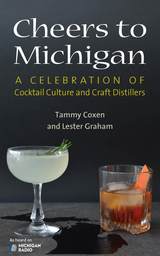 Cheers to Michigan: A Celebration of Cocktail Culture and Craft Distillers
Tammy Coxen and Lester Graham
University of Michigan Press, 2019 Cheers to Michigan is a toast to cocktail culture in the Mitten and the state’s flourishing craft cocktail and distillery movements. Based on Cheers!, Lester Graham and Tammy Coxen’s popular cocktail segment on Michigan Radio (NPR), this book gathers forty-five of the authors’ favorite cocktail recipes celebrating the Great Lakes State—its history, its people, its culture, even its weather! Throughout, the authors mix in dashes of Michigan’s fascinating drinking history, entertaining profiles of award-winning cocktail bars, distilleries, and individual spirits from the region, as well as helpful tidbits for preparing top-shelf cocktails on your own.
Learn how to mix a Bullshot, the Detroit-born cocktail containing Campbell’s Beef Broth—Marilyn Monroe famously called the drink “a horrible thing to do to vodka.” Or try out the authors’ Whiskey Sour recipe honoring the true story of Valentine Goesaert, a Dearborn woman who challenged the constitutionality of a Michigan law prohibiting female bartenders and in 1948 took her case before the U.S. Supreme Court. Whether you’re a fan of whiskey, gin, or vodka—of the latest cocktail trends or all-time classic drinks—there’s something in this book for all tastes. What’s constant is that each drink showcases a uniquely Michigan twist, making this book perfect for anyone who loves the state, its history and culture, or simply the delicious, delightful, and distinctive cocktails it has inspired.
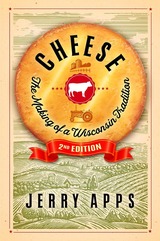 Cheese: The Making of a Wisconsin Tradition
Jerry Apps
University of Wisconsin Press, 2020 Wisconsin has not always been the dairy state, but cheese is a notable part of its heritage. Capturing the voices of farmers, milk haulers, makers, and graders, Jerry Apps provides a rich view into the history of cheese in the state, beginning with its humble origins in farmhouse kitchens. As he explores the extraordinary diversity of cheese products, he peppers his lively narrative with obscure lore.
In this updated edition of a classic, Apps examines tumultuous changes in the business over the past twenty years, including the impacts of corporate megafarms and the rise of artisanal producers. Vivid historical photographs and striking portraits of modern family-operated factories reveal the delicate balance between art and science that goes into the process of turning ordinary milk into a wide variety of flavors, from the ubiquitous cheddar to sublime delicacies. Through these stories, we can come to better appreciate the remarkable farmers and producers that shaped cheesemaking into the thriving industry it is today.
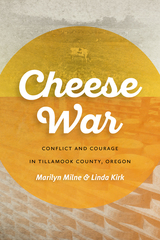 Cheese War: Conflict and Courage in Tillamook County, Oregon
Marilyn Milne
Oregon State University Press, 2022 In the 1960s, Tillamook County, Oregon, was at war with itself. As the regional dairy industry shifted from small local factories to larger consolidated factories, and as profit margins for milk and cheese collapsed, Tillamook farmers found themselves in a financial crisis that fueled multiple disputes. The ensuing Cheese War included lies and secrets, as well as spies, high emotion, a shoving match, and even a death threat.
On one side of the battle was Beale Dixon, head of Tillamook County Creamery Association. Dixon set up a scheme to offer low-interest, low-collateral loans from TCCA’s largest member cooperative, Tillamook Cheese & Dairy Association, to the supermarkets that stocked Tillamook products. Dixon argued it was a cheap, easy way to ensure good will—and continued purchases—in a tight market. On the other side was George Milne, a respected farmer and board president of the cooperative. Milne supported his board’s decision that loans would require board approval and bank oversight. Dixon mostly ignored those requirements.
The discovery of more financial irregularities soon spiraled into a community-wide dispute, exacerbated by a complex web of family and business relationships. The Cheese War raged for the better part of a decade across board meetings, courtrooms, and the community itself. While largely unknown outside of Tillamook County, the Cheese War was so divisive that some families remain fractured today.
Sisters Marilyn Milne and Linda Kirk, children of the Cheese War, saw how it absorbed their parents. As adults, they set out to learn more about what had happened. The authors conducted years of research and have integrated it with tales of their experiences as farm kids living through the all-consuming fight. As Americans become ever more interested in food supply chains and ethical consumption, here is the story of the very human factors behind one of Oregon’s most iconic brands.
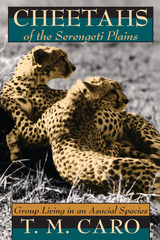 Cheetahs of the Serengeti Plains: Group Living in an Asocial Species
T. M. Caro
University of Chicago Press, 1994 Cheetahs of the Serengeti Plains is the most comprehensive account of carnivore social behavior to date. Synthesizing more than a decade of research in the wild, this book offers a detailed account of the behavior and ecology of cheetahs. Compared with other large cats, and other mammals, cheetahs have an unusual breeding system; whereas lions live in prides and tigers are solitary, some cheetahs live in groups while others live by themselves. Tim Caro explores group and solitary living among cheetahs and discovers that the causes of social behavior vary dramatically, even within a single species.
Why do cheetah cubs stay with their mother for a full year after weaning? Why do adolescents remain in groups? Why do adult males live in permanent associations with each other? Why do adult females live alone? Through observations on the costs and benefits of group living, Caro offers new insight into the complex behavior of this extraordinary species. For example, contrary to common belief about cooperative hunting in large carnivores, he shows that neither adolescents nor adult males benefit from hunting in groups.
With many surprising findings, and through comparisons with other cat species, Caro enriches our understanding of the evolution of social behavior and offers new perspectives on conservation efforts to save this charismatic and endangered carnivore.
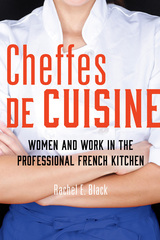 Cheffes de Cuisine: Women and Work in the Professional French Kitchen
Rachel E. Black
University of Illinois Press, 2021 Works of Distinction, LDEI M.F.K. Fisher Prize for Excellence in Culinary Media Content, 2022 A rare woman’s-eye-view of working in the professional French kitchen Though women enter France’s culinary professions at higher rates than ever, men still receive the lion’s share of the major awards and Michelin stars. Rachel E. Black looks at the experiences of women in Lyon to examine issues of gender inequality in France’s culinary industry. Known for its female-led kitchens, Lyon provides a unique setting for understanding the gender divide, as Lyonnais women have played a major role in maintaining the city’s culinary heritage and its status as a center for innovation. Voices from history combine with present-day interviews and participant observation to reveal the strategies women use to navigate male-dominated workplaces or, in many cases, avoid men in kitchens altogether. Black also charts how constraints imposed by French culture minimize the impact of #MeToo and other reform-minded movements. Evocative and original, Cheffes de Cuisine celebrates the successes of women inside the professional French kitchen and reveals the obstacles women face in the culinary industry and other male-dominated professions.
 Chefs, Restaurants, and Culinary Sustainability
Carole Counihan
University of Arkansas Press, 2025 The centrality of food to the human experience always places it at the crux of global crises, whether catastrophic climate change, the collapse of biodiversity in our shared ecosystem, the threat of pandemics, or the poverty and suffering associated with resource scarcity. The continual reality of these challenges has prompted professionals throughout the food industry to seek innovative solutions, as chefs and restaurateurs adjust to customer demands and political imperatives for socially responsible civic action.
Chefs, Restaurants, and Culinary Sustainability explores how chefs around the world approach culinary sustainability in highly unstable times while working in myriad professional domains. Building on empirical data collected from a wide range of cultural, historical, political, and economic settings, the contributors to this collection provide a sophisticated and engaging examination of how chefs in diverse culinary contexts tackle the increasingly urgent societal and environmental need for a more secure food future.
Chekhov and Russian Religious Culture: Poetics of the Marian Paradigm
Julie de Sherbinin
Northwestern University Press, 1997 Chekhov and Russian Religious Culture is an innovative study of the Virgin Mary and the "saintly harlots"–Mary of Egypt and Mary Magdalene–as a cultural paradigm encoded in Chekhov's prose. De Sherbinin establishes the authority of the Marian paradigm in nineteenth-century Russian culture with a comprehensive overview of salient religious and literary texts, then offers critical readings of more than fifteen Chekhov stories, including key works such as "Peasants," "Peasant Women," and "My Life." De Sherbinin argues that Chekhov inverts and displaces the Christian meanings of Marian texts in order to reveal a vast array of problematized relationships to the canonized figures. This illuminating semiotic reading of Chekhov explores questions of female identity as it probes the mindset of Russian Orthodox popular culture.
Chekhov for the Stage: The Sea Gull, Uncle Vanya, The Three Sisters, The Cherry Orchard
Anton Chekhov
Northwestern University Press, 1992 While the influence of Chekhov in modern theater worldwide, and especially in America, has been immense, translations into English have tended to be too literary and have not communicated the full emotional power and precise attention to detail of Chekhov's Russian. Milton Ehre began translating Chekhov's plays to provide professional theaters with performance texts that capture the feel and rhythms of spoken, rather than written, language. Chekhov for the Stage is the first publication of his revised versions of The Three Sisters, Uncle Vanya, The Cherry Orchard, and The Sea Gull. Ehre's sensitive renderings of these classics make this volume the translation of choice for performers and directors, teachers, and the general reading public.
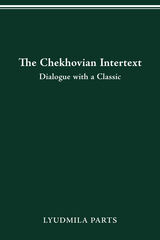 The Chekhovian Intertext: Dialogue with a Classic
Lyudmila Parts
Ohio State University Press, 2008 In The Chekhovian Intertext Lyudmila Parts explores contemporary Russian writers’ intertextual engagement with Chekhov and his myth. She offers a new interpretative framework to explain the role Chekhov and other classics play in constructing and maintaining Russian national identity and the reasons for the surge in the number of intertextual engagements with the classical authors during the cultural crisis in post-perestroika Russia. The book highlights the intersection of three distinct concepts: cultural memory, cultural myth, and intertextuality. It is precisely their interrelation that explains how intertextuality came to function as a defense mechanism of culture, a reaction of cultural memory to the threat of its disintegration. In addition to offering close readings of some of the most significant short stories by contemporary Russian authors and by Chekhov, as a theoretical case study the book sheds light on important processes in contemporary literature: it explores the function of intertextuality in the development of Russian literature, especially post-Soviet literature; it singles out the main themes in contemporary literature, and explains their ties to national cultural myths and to cultural memory. The Chekhovian Intertext may serve as a theoretical model and impetus for examinations of other national literatures from the point of view of the relationship between intertextuality and cultural memory.
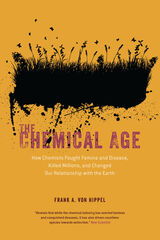 The Chemical Age: How Chemists Fought Famine and Disease, Killed Millions, and Changed Our Relationship with the Earth
Frank A. von Hippel
University of Chicago Press, 2020 A dynamic and sweeping history that exposes how humankind’s affinity for pesticides made the modern world possible—while also threatening its essential fabric.
For thousands of years, we’ve found ways to scorch, scour, and sterilize our surroundings to make them safer. Sometimes these methods are wonderfully effective. Often, however, they come with catastrophic consequences—consequences that aren’t typically understood for generations.
The Chemical Age tells the captivating story of the scientists who waged war on famine and disease with chemistry. With depth and verve, Frank A. von Hippel explores humanity’s uneasy coexistence with pests, and how their existence, and the battles to exterminate them, have shaped our modern world. Beginning with the potato blight tragedy of the 1840s, which led scientists on an urgent mission to prevent famine using pesticides, von Hippel traces the history of pesticide use to the 1960s, when Rachel Carson’s Silent Spring revealed that those same chemicals were insidiously damaging our health and driving species toward extinction. Telling the story of these pesticides in vivid detail, von Hippel showcases the thrills and complex consequences of scientific discovery. He describes the invention of substances that could protect crops, the emergence of our understanding of the way diseases spread, the creation of chemicals used to kill pests and people, and, finally, how scientists turned those wartime chemicals on the landscape at a massive scale, prompting the vital environmental movement that continues today.
The Chemical Age is a dynamic, sweeping history that exposes how humankind’s affinity for pesticides made the modern world possible—while also threatening its essential fabric.
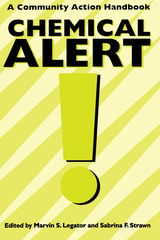 Chemical Alert!: A Community Action Handbook
Edited by Marvin S. Legator and Sabrina F. Strawn
University of Texas Press, 1993 In the 1978 Love Canal toxic waste crisis, concerned citizens "did a far better job of evaluating the health of the community than did the professionals of the New York Health Department," asserts Marvin Legator. In Chemical Alert! A Community Action Handbook, he and coeditor Sabrina Strawn offer a step-by-step guide that can be used by any lay person or citizens' group to determine whether a health risk exists in their area.
Writing for the general reader with no scientific expertise, environmental, medical, and legal professionals instruct communities on the organizational and investigative techniques that will produce a valid, scientific case study. With these tools, citizens living near petrochemical plants or waste disposal areas—or who may have simply noticed a high incidence of certain health problems in their community—can determine for themselves whether a problem really exists and seek remediation. Given the reality that government agencies often lack the resources—or the will—to detect health hazards before they affect a community, an informed citizenry should be its own best environmental watchdog.
 Chemical Consequences: Environmental Mutagens, Scientist Activism, and the Rise of Genetic Toxicology
Frickel, Scott
Rutgers University Press, 2004 Hereis the first historical and sociological account of the formation of an interdisciplinary science known as genetic toxicology, and of the scientists’ social movement that created it.
After research geneticists discovered that synthetic chemicals were capable of changing the genetic structure of living organisms, scientists began to explore how these chemicals affected gene structure and function. In the late 1960s, a small group of biologists became concerned that chemical mutagens represented a serious and possibly global environmental threat.
Genetic toxicology is nurtured as much by public culture as by professional practices, reflecting the interplay of genetics research and environmental politics. Drawing on a wealth of resources, Scott Frickel examines the creation of this field through the lens of social movement theory. He reveals how a committed group of scientist-activists transformed chemical mutagens into environmental problems, mobilized existing research networks, recruited scientists and politicians, secured financial resources, and developed new ways of acquiring knowledge. The result is a book that vividly illustrates how science and activism were interwoven to create a discipline that remains a defining feature of environmental health science.
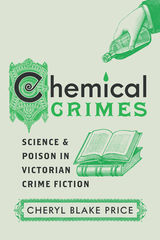 Chemical Crimes: Science and Poison in Victorian Crime Fiction
Cheryl Blake Price
Ohio State University Press, 2019 In Chemical Crimes: Science and Poison in Victorian Crime Fiction, Cheryl Blake Price delves into the dark world of Victorian criminality to examine how poison allowed authors to disrupt gender boundaries, genre, and the professionalization of science. Tracing the role of the chemical crime through the works of Letitia Elizabeth Landon, Ellen Wood, Edward Bulwer Lytton, L. T. Meade, Charles Warren Adams, and Wilkie Collins, Price argues that poison this intervention not only provided a useful tool for authors to challenge the growing power of science but also that its fluid nature and ability to mix, mingle, and transcend boundaries made it ideal for generic experimentation.
From the Newgate and Silver Fork novels of the 1830s to the emergent genres of science and detective fiction of the 1890s, Price advocates for the classification of a new type of poisoner, one who combined crime with methodical scientific know-how: the chemical criminal. Chemical Crimes shows how authors used the subversiveness of chemical crimes to challenge the supposed disciplinary force of forensic detection and suggests that generic developments were inspired as much by criminal scientific innovation as they were by the rise of the detective–scientist. By focusing on chemical crime’s appearance at significant moments, this book traces how reactions to Victorian science inspired change in nineteenth-century crime fiction.
Chemical Demonstrations, Volume 1: A Handbook for Teachers of Chemistry
Bassam Z. Shakhashiri
University of Wisconsin Press, 1983 The demonstrations capture interest, teach, inform, fascinate, amaze, and perhaps, most importantly, involve students in chemistry. Nowhere else will you find books that answer, "How come it happens? . . . Is it safe? . . . What do I do with all the stuff when the demo is over?"
Shakhashiri and his collaborators offer 282 chemical demonstrations arranged in 11 chapters. Each demonstration includes seven sections: a brief summary, a materials list, a step-by-step account of procedures to be used, an explanation of the hazards involved, information on how to store or dispose of the chemicals used, a discussion of the phenomena displayed and principles illustrated by the demonstration, and a list of references.
Chemical Demonstrations, Volume 2: A Handbook for Teachers of Chemistry
Bassam Z. Shakhashiri
University of Wisconsin Press, 1985 The demonstrations capture interest, teach, inform, fascinate, amaze, and perhaps, most importantly, involve students in chemistry. Nowhere else will you find books that answer, "How come it happens? . . . Is it safe? . . . What do I do with all the stuff when the demo is over?"
Shakhashiri and his collaborators offer 282 chemical demonstrations arranged in 11 chapters. Each demonstration includes seven sections: a brief summary, a materials list, a step-by-step account of procedures to be used, an explanation of the hazards involved, information on how to store or dispose of the chemicals used, a discussion of the phenomena displayed and principles illustrated by the demonstration, and a list of references.
Chemical Demonstrations, Volume 3: A Handbook for Teachers of Chemistry
Bassam Z. Shakhashiri
University of Wisconsin Press, 1989 The demonstrations capture interest, teach, inform, fascinate, amaze, and perhaps, most importantly, involve students in chemistry. Nowhere else will you find books that answer, "How come it happens? . . . Is it safe? . . . What do I do with all the stuff when the demo is over?"
Shakhashiri and his collaborators offer 282 chemical demonstrations arranged in 11 chapters. Each demonstration includes seven sections: a brief summary, a materials list, a step-by-step account of procedures to be used, an explanation of the hazards involved, information on how to store or dispose of the chemicals used, a discussion of the phenomena displayed and principles illustrated by the demonstration, and a list of references. You'll find safety emphasized throughout the book in each demonstration.
Chemical Demonstrations, Volume 4: A Handbook for Teachers of Chemistry
Bassam Z. Shakhashiri
University of Wisconsin Press, 1992 The demonstrations capture interest, teach, inform, fascinate, amaze, and perhaps, most importantly, involve students in chemistry. Nowhere else will you find books that answer, "How come it happens? . . . Is it safe? . . . What do I do with all the stuff when the demo is over?"
Shakhashiri and his collaborators offer 282 chemical demonstrations arranged in 11 chapters. Each demonstration includes seven sections: a brief summary, a materials list, a step-by-step account of procedures to be used, an explanation of the hazards involved, information on how to store or dispose of the chemicals used, a discussion of the phenomena displayed and principles illustrated by the demonstration, and a list of references. You'll find safety emphasized throughout the book in each demonstration.
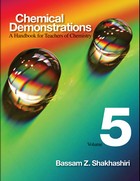 Chemical Demonstrations, Volume 5: A Handbook for Teachers of Chemistry
Bassam Z. Shakhashiri
University of Wisconsin Press, 2011 Color and light are the focus of this long-awaited fifth volume in the Chemical Demonstrations series, which describes demonstrations that effectively communicate science to both students and general audiences. Using full color illustrations, the book provides meticulous instructions for safely demonstrating colorful phenomena and illustrating scientific principles. A rich introductory section explores the science of color and light, outlines the chemical processes of vision, and explains what happens when visual information enters the human eye and is perceived by the brain. With more than fifty demonstrations and multiple procedures included, this volume offers abundant opportunities to arouse and sustain interest in science for both classroom and public presentations.
Each demonstration includes:
• a brief description of the demonstration
• a materials list
• a step-by-step account of procedures to be used
• an explanation of the potential hazards involved
• information on safely storing and disposing the chemicals used
• a full discussion of the phenomena displayed and principles illustrated
• a list of references.
Created by acclaimed chemists and science educators Bassam Shakhashiri and his collaborators Rodney Schreiner and Jerry Bell, these demonstrations make an impressive addition to the earlier volumes, which have been lauded for guiding teachers and scientists in effectively communicating science. Like all volumes in the series, Volume 5 communicates chemistry using pedagogical knowledge to enhance the effectiveness of demonstrations to all audiences.
 Chemical Heroes: Pharmacological Supersoldiers in the US Military
Andrew Bickford
Duke University Press, 2020 In Chemical Heroes Andrew Bickford analyzes the US military's attempts to design performance enhancement technologies and create pharmacological "supersoldiers" capable of withstanding extreme trauma. Bickford traces the deep history of efforts to biologically fortify and extend the health and lethal power of soldiers from the Cold War era into the twenty-first century, from early adoptions of mandatory immunizations to bio-protective gear, to the development and spread of new performance enhancing drugs during the global War on Terrorism. In his examination of government efforts to alter soldiers' bodies through new technologies, Bickford invites us to contemplate what constitutes heroism when armor becomes built in, wired in, and even edited into the molecular being of an American soldier. Lurking in the background and dark recesses of all US military enhancement research, Bickford demonstrates, is the desire to preserve US military and imperial power.
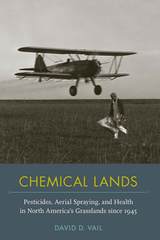 Chemical Lands: Pesticides, Aerial Spraying, and Health in North America’s Grasslands since 1945
David D. Vail
University of Alabama Press, 2018 An exploration of the elaborate relationship between farmers, aerial sprayers, agriculturalists, crop pests, chemicals, and the environment.
The controversies in the 1960s and 1970s that swirled around indiscriminate use of agricultural chemicals—their long-term ecological harm versus food production benefits—were sparked and clarified by biologist Rachel Carson’s Silent Spring (1962). This seminal publication challenged long-held assumptions concerning the industrial might of American agriculture while sounding an alarm for the damaging persistence of pesticides, especially chlorinated hydrocarbons such as DDT, in the larger environment.
In Chemical Lands: Pesticides, Aerial Spraying, and Health in North America’s Grasslands since 1945 David D. Vail shows, however, that a distinctly regional view of agricultural health evolved. His analysis reveals a particularly strong ethic in the North American grasslands where practitioners sought to understand and deploy insecticides and herbicides by designing local scientific experiments, engineering more precise aircraft sprayers, developing more narrowly specific chemicals, and planting targeted test crops. Their efforts to link the science of toxicology with environmental health reveal how the practitioners of pesticides evaluated potential hazards in the agricultural landscape while recognizing the production benefits of controlled spraying.
Chemical Lands adds to a growing list of books on toxins in the American landscape. This study provides a unique Grasslands perspective of the Ag pilots, weed scientists, and farmers who struggled to navigate novel technologies for spray planes and in the development of new herbicides/insecticides while striving to manage and mitigate threats to human health and the environment.
 Chemically Imbalanced: Everyday Suffering, Medication, and Our Troubled Quest for Self-Mastery
Joseph E. Davis
University of Chicago Press, 2020 Everyday suffering—those conditions or feelings brought on by trying circumstances that arise in everyone’s lives—is something that humans have grappled with for millennia. But the last decades have seen a drastic change in the way we approach it. In the past, a person going through a time of difficulty might keep a journal or see a therapist, but now the psychological has been replaced by the biological: instead of treating the heart, soul, and mind, we take a pill to treat the brain.
Chemically Imbalanced is a field report on how ordinary people dealing with common problems explain their suffering, how they’re increasingly turning to the thin and mechanistic language of the “body/brain,” and what these encounters might tell us. Drawing on interviews with people dealing with struggles such as underperformance in school or work, grief after the end of a relationship, or disappointment with how their life is unfolding, Joseph E. Davis reveals the profound revolution in consciousness that is underway. We now see suffering as an imbalance in the brain that needs to be fixed, usually through chemical means. This has rippled into our social and cultural conversations, and it has affected how we, as a society, imagine ourselves and envision what constitutes a good life. Davis warns that what we envision as a neurological revolution, in which suffering is a mechanistic problem, has troubling and entrapping consequences. And he makes the case that by turning away from an interpretive, meaning-making view of ourselves, we thwart our chances to enrich our souls and learn important truths about ourselves and the social conditions under which we live.
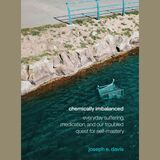 Chemically Imbalanced: Everyday Suffering, Medication, and Our Troubled Quest for Self-Mastery
Joseph E. Davis
University of Chicago Press, 2020 This is an auto-narrated audiobook version of this book.
Everyday suffering—those conditions or feelings brought on by trying circumstances that arise in everyone’s lives—is something that humans have grappled with for millennia. But the last decades have seen a drastic change in the way we approach it. In the past, a person going through a time of difficulty might keep a journal or see a therapist, but now the psychological has been replaced by the biological: instead of treating the heart, soul, and mind, we take a pill to treat the brain.
Chemically Imbalanced is a field report on how ordinary people dealing with common problems explain their suffering, how they’re increasingly turning to the thin and mechanistic language of the “body/brain,” and what these encounters might tell us. Drawing on interviews with people dealing with struggles such as underperformance in school or work, grief after the end of a relationship, or disappointment with how their life is unfolding, Joseph E. Davis reveals the profound revolution in consciousness that is underway. We now see suffering as an imbalance in the brain that needs to be fixed, usually through chemical means. This has rippled into our social and cultural conversations, and it has affected how we, as a society, imagine ourselves and envision what constitutes a good life. Davis warns that what we envision as a neurological revolution, in which suffering is a mechanistic problem, has troubling and entrapping consequences. And he makes the case that by turning away from an interpretive, meaning-making view of ourselves, we thwart our chances to enrich our souls and learn important truths about ourselves and the social conditions under which we live.
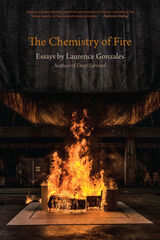 The Chemistry of Fire: Essays
Laurence Gonzales
University of Arkansas Press, 2020 "Gonzales (Flight 232), a former National Geographic feature writer, proves himself a chronicler par excellence of nature—including of the human variety—in this excellent essay collection. The psychological nuance and vivid detail throughout will dazzle readers."
—Publishers Weekly starred review, July 2020
In 1989, Laurence Gonzales was a young writer with his first book of essays, The Still Point, just published by the University of Arkansas Press. Imagine his surprise, one winter day, to receive a letter from none other than Kurt Vonnegut. “The excellence of your writing and the depth of your reporting saddened me, in a way,” Vonnegut wrote, “reminding me yet again what a tiny voice facts and reason have in this era of wrap-around, mega-decibel rock-and-roll.”
Several books, many articles, and a growing list of awards later, Gonzales -- known for taking us to enthralling extremes – is still writing with excellence and depth. In this latest collection, we go from the top of Mount Washington and ”the worst weather in the world,” to 12,000 feet beneath the ocean, where a Naval Intelligence Officer discovers the Titanic using the government’s own spy equipment. We experience night assaults with the 82nd Airborne Division, the dynamiting of the 100-foot snowpack on Going-to-the-Sun Road in Glacier National Park, a trip to the International Space Station, the crash of an airliner to the bottom of the Everglades, and more.
The University of Arkansas Press is proud to bring these stories to a new era, stories that, as with all of Gonzales’s work, “fairly sing with a voice all their own.” (Chicago Sun-Times)
Chemmeen
Thakazhi Sivasankara Pillai
Seagull Books, 2016 Chemmeen tells the story of the relationship between Karutthamma, a Hindu woman from the fisherfolk community, and Pareekkutty, the son of a Muslim fish wholesaler. Unable to marry Pareekkutty for religious reasons, Karutthamma instead marries Palani, who, despite his wife’s scandalous past, never stops trusting her—a trust that is reaffirmed each time he goes to sea and comes back safe. For the fishermen have an important saying: the safe return of a fisherman depends on the fidelity of his wife. Then, one fateful night, Karutthamma and Pareekkutty meet and their love is rekindled while Palani is at sea, baiting a shark.
Previously available only in India, this hugely successful novel was adapted into a film, winning great critical acclaim and commercial success. Anita Nair’s evocative translation from Malayalam brings this tale of love and longing, a classic of Indian literature, to a new audience.
 Chemotherapy in Psychiatry: Revised and Enlarged Edition
Ross J. Baldessarini
Harvard University Press, 1985 The advent of chemical or pharmacological therapies has had an enormous impact on the treatment of psychiatric illness. For the chemotherapy to be effective, however, the clinician must take into account many factors in addition to recognition of a syndrome and selection of an appropriate agent and dose. In this extensively revised and expanded edition of a widely used book, Ross Baldessarini concentrates on providing rational, scientific underpinnings for the treatment of patients. In doing so, he bridges the gap between biology, psychology, and clinical practice.
To provide the most up-to-date coverage of the actions and use of psychotropic agents, Professor Baldessarini has enlarged the text to nearly twice its original length and has added sixty-three new tables. More basic preclinical pharmacology is included to guide the thoughtful use of medication. In addition to summarizing this basic knowledge, the text reviews the indications for each drug, the kinds of patients most likely to respond, and side effects and contraindications, and provides summaries of clinical research findings on which rational clinical practice rests.
A chapter is devoted to each of the principal classes of psychotropic drugs: antipsychotic agents, lithium salts and other antimanic agents, antidepressant agents, and antianxiety drugs. Within each chapter is a new section that surveys the future of the field and examines new procedures, theories, and agents. A final chapter covers more general topics such as psychosocial, ethical, and legal aspects of practice in the administration of drugs, as well as the emerging topics of geriatric and pediatric psychopharmacology--material not readily available elsewhere.
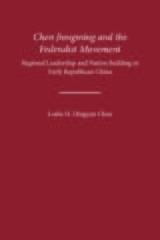 Chen Jiongming and the Federalist Movement: Regional Leadership and Nation Building in Early Republican China
Leslie H. Dingyan Chen
University of Michigan Press, 2000 The local self-government movement in China began in the late Qing, and by the Revolution of 1911 no fewer than five thousand self-government councils had formed around the country. While the early revolutionaries cherished the idea of a federated state, federalist and centralist leaders engaged in a growing conflict that culminated in the defeat of federalism in the mid-1920s. The story of this movement has since remained hidden behind Nationalist and Communist accounts of the early revolutionary struggle. Chen Jiongming and the Federalist Movement reopens the record on federalist efforts from the perspective of the son of one of the movement’s key figures. Challenging the accepted accounts of the federalist movement, Leslie Chen focuses on his father Chen Jiongming's policies and administrative achievements in Fujian and Guangdong. Chen Jiongming played a key role in the tumultuous politics of southern China from 1909 until his death in 1933. He built a relationship and then notoriously broke with Sun Yat-sen, the leader of the centralist revolutionaries. Leslie Chen argues that his father's attempts to create a democratic federalist system in Guangdong were aimed at providing a model for China as a whole. His account is lively and readable; it gives an intimate, yet historically accurate, account of Chen Jiongming's considerable role in early twentieth-century Chinese history.
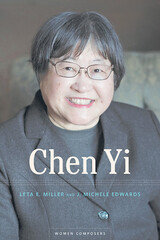 Chen Yi
Leta E. Miller and J. Michele Edwards
University of Illinois Press, 2020 Winner of the Leila Webster Memorial Music Award for the International Alliance for Women in Music of the 2022 Pauline Alderman Awards for Outstanding Scholarship on Women in Music Chen Yi is the most prominent woman among the renowned group of new wave composers who came to the US from mainland China in the early 1980s. Known for her creative output and a distinctive merging of Chinese and Western influences, Chen built a musical language that references a breathtaking range of sources and crisscrosses geographical and musical borders without eradicating them. Leta E. Miller and J. Michele Edwards provide an accessible guide to the composer's background and her more than 150 works. Extensive interviews with Chen complement in-depth analyses of selected pieces from Chen's solos for Western or Chinese instruments, chamber works, choral and vocal pieces, and compositions scored for wind ensemble, chamber orchestra, or full orchestra. The authors highlight Chen's compositional strategies, her artistic elaborations, and the voice that links her earliest and most recent music. A concluding discussion addresses questions related to Chen's music and issues such as gender, ethnicity and nationality, transnationalism, border crossing, diaspora, exoticism, and identity.
Cherishing Antiquity: The Cultural Construction of an Ancient Chinese Kingdom
Olivia Milburn
Harvard University Press, 2013 Cherishing Antiquity describes the commemoration within Chinese literature and culture of the southern kingdom of Wu, which collapsed in 473 BCE. The sudden rise and tragic fall of Wu within the space of just over one century would inspire numerous memorials in and around the city of Suzhou, once the capital of this ancient kingdom. A variety of physical structures, including temples, shrines, steles, and other monuments, were erected in memory of key figures in the kingdom's history. These sites inspired further literary representations in poetry and prose—musings on the exoticism, glamour, great wealth, and hideous end of the last king of Wu. Through an analysis first of the history of Wu as recorded in ancient Chinese texts and then of its literary legacy, Olivia Milburn illuminates the remarkable cultural endurance of this powerful but short-lived kingdom.
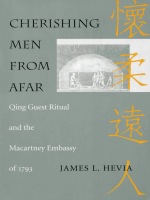 Cherishing Men from Afar: Qing Guest Ritual and the Macartney Embassy of 1793
James L. Hevia
Duke University Press, 1995 In the late eighteenth century two expansive Eurasian empires met formally for the first time—the Manchu or Qing dynasty of China and the maritime empire of Great Britain. The occasion was the mission of Lord Macartney, sent by the British crown and sponsored by the East India Company, to the court of the Qianlong emperor. Cherishing Men from Afar looks at the initial confrontation between these two empires from a historical perspective informed by the insights of contemporary postcolonial criticism and cultural studies.
The history of this encounter, like that of most colonial and imperial encounters, has traditionally been told from the Europeans’ point of view. In this book, James L. Hevia consults Chinese sources—many previously untranslated—for a broader sense of what Qing court officials understood; and considers these documents in light of a sophisticated anthropological understanding of Qing ritual processes and expectations. He also reexamines the more familiar British accounts in the context of recent critiques of orientalism and work on the development of the bourgeois subject. Hevia’s reading of these sources reveals the logics of two discrete imperial formations, not so much impaired by the cultural misunderstandings that have historically been attributed to their meeting, but animated by differing ideas about constructing relations of sovereignty and power. His examination of Chinese and English-language scholarly treatments of this event, both historical and contemporary, sheds new light on the place of the Macartney mission in the dynamics of colonial and imperial encounters.
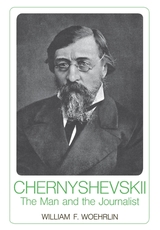 Chernyshevskii: The Man and the Journalist
William F. Woehrlin
Harvard University Press, 1971 N. G. Chernyshevskii (1828-1889), a pivotal figure in the protest movement that developed in Russia after the Crimean War, was esteemed by both Marx and Lenin. Alienated from Russia's traditional values, institutions, and power structure, he nevertheless rejected the economic doctrines and political goals of the more advanced nations of his day, seeing in the operation of laissez-faire economics a form of exploitation as vicious as serfdom, and in political liberalism a hypocritical attempt to divorce the concept of legal rights from the more basic issue of material security, without which freedom is meaningless.
He adopted instead an admixture of liberal and socialist theory, which could be roughly characterized as utopian socialist, but which simultaneously was part of a larger populist tradition. His radicalism attached itself to no particular political form, but was sustained by a belief that the inadequacies of society could be corrected only by its complete overhaul, which in turn could be accomplished only by the destruction of traditional autocratic power. This blend of ideas ultimately provided the basis for those radicals seeking to take advantage of Russia's economic backwardness by eliminating the phase of capitalism and proceeding directly to a socialist form of organization.
By contributing to the radical orientation of the protest movement, Chernyshevskii encouraged a polarization of views in Russian public opinion, which led to the abandonment of moderate reforms, to governmental reaction, and to his own tragic imprisonment and exile to Siberia. But through his diverse writings he had succeeded as no other writer before him in popularizing the idea of revolution.
This first thorough treatment of Chernyshevskii in English constitutes both a biography and a presentation of his views on philosophy, aesthetics and literary criticism, economics and social relations, politics and revolution.
Chernyshevskii's "What is to Be Done": A Reevaluation
Andrew Drozd
Northwestern University Press, 2012 Andrew M. Drozd reexamines the misunderstood Russian novel, insisting it was misread by both detractors (who dismissed it as propaganda) and admirers (who overlooked its satire and criticism of revolutionary politics).
Cherokee Archaeology: A Study of the Appalachian Summit
Bennie C. Keel
University of Tennessee Press, 1987 Keel's work throughout the book is excellent and in the elegant and precise tradition which we have come to associate with Joffre Coe and his students and associates. Cherokee Archaeology provides archaeologists with an invaluable source for future studies. --James H. Howard, American Antiquity
Cherokee Archaeology provides much good information about the archaeology of the Appalachian Summit Area. Bennie Keel makes a lot more sense of the prehistory of the tri-state area (North Carolina, Georgia, South Carolina) than anyone else ever has. --James B. Griffin
The Cherokee Indian Nation: A Troubled History
Duane H. King
University of Tennessee Press, 2005 This important book explores the truth behind the legends, offering new insights into the turbulent history of these Native Americans. The book's readable style will appeal to all those interested in American Indians.
"Any serious historian or reader of Native American literature must add Dr. King's classic book to their collection to appreciate its dimension and quality of research reporting."
—Don Shadburn, Forsyth County News (Cummings, GA)
The Cherokee Lottery: A Sequence of Poems
William Jay Smith
Northwestern University Press, 2000 For the first time in poetic form, The Cherokee Lottery treats one of the greatest tragedies in American history, the forced removal of the Southern Indian tribes east of the Mississippi. When gold was discovered on Cherokee land in northern Georgia in 1828, the U.S. Government passed the Removal Act, and 18,000 Cherokees, along with other southern tribes—Choctaws, Chickasaws, and Creeks—were forcibly relocated to Oklahoma territory. Herded along under armed guard, they traveled in bitter cold weather and as many as a quarter died on what became known as "The Trail of Tears." In powerful poetry of epic proportions, which Harold Bloom has called his best work, Smith paints a stark and vivid picture of this ordeal and its principal participants, among them Sequoyah, the inventor of the Cherokee alphabet, and Osceola, the Seminole chief.
 Cherokee National Forest Hiking Guide
William H. Skelton
University of Tennessee Press, 2024 First published in 1992, Cherokee National Forest Hiking Guide has been a vital companion to thousands who have explored the 650,000-acre Cherokee National Forest. Now in its third edition the guide has been expanded once again to cover numerous additional trails and the almost 20,000 acres of additional congressionally designated Wilderness in the decades since the second edition. Stretching across the Tennessee-North Carolina state line, the Cherokee National Forest includes much of the western slopes of the southern Appalachian Mountains, north and south of Great Smoky Mountains National Park. The area encompasses a tremendous diversity of wildlife, vegetation, and scenic vistas of high mountain peaks and beautiful creeks, waterfalls, and valleys. Over 840 trail miles and 226 trails are described and mapped in the book. These trails and footpaths wind throughout this wildlife haven, inviting everyone who loves the outdoors—hikers, backpackers, hunters, anglers, and horseback riders—to explore the forest's natural beauty. The Cherokee National Forest Hiking Guide provides maps and specific directions for all the forest's current trails along with a wealth of general information on its present and past wildlife, vegetation, and geology, as well as a history of the forest's human inhabitants—including the political battles that have been waged to protect it. This book remains the definitive guide to this expansive and alluring landscape sure to thrill outdoor enthusiasts for many generations to come.
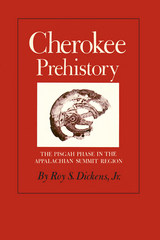 Cherokee Prehistory: The Pisgah Phase In the Appalachian Summit Region
Roy S., Jr. Dickens
University of Tennessee Press, 1976 After a century of archaeological research in the Southeastern United States, there are still areas about which little is known. Surprisingly, one of these areas is the Appalachian Summit, which in historic times was inhabited by the Cherokee people whose rich culture and wide influence made their name commonplace in typifying Southeastern Indians. The culture of the people who preceded the historic Cherokees was no less rich, and their network of relationships with other groups no less wide. Until recently, however, the prehistoric cultural remains of the Southern Appalachians had received only slight attention.
Archaeological sites in the Appalachians usually do not stand out dramatically on the landscape as do the effigy mounds of the Ohio Valley and the massive platform mounds of the Southeastern Piedmont and Mississippi Valley. Prehistoric settlements in the Southern Appalachians lay in the bottomlands along the clear, rocky rivers, hidden in the folds of the mountains. Finding and investigating these sites required a systematic approach. From 1964 to 1971, under the direction of Joffre L. Coe, the Research Laboratories of Anthropology at the University of North Carolina, Chapel Hill, conducted an archaeological project that was designed to investigate the antecedents of the historic Cherokees in the Appalachian Summit, and included site surveys over large portions of the area and concentrated excavations at several important sites in the vicinity of the historic Cherokee Middletowns.
One result of the Cherokee project is this book, the purpose of which is to present an initial description and synthesis of a late prehistoric phase in the Appalachian Summit, a phase that lasted from the beginnings of South Appalachian Mississippian culture to the emergence of identifiable Cherokee culture. At various points Professor Dickens draws these data into the broader picture of Southeastern prehistory, and occasionally presents some interpretations of the human behavior behind the material remains, however, is to make available some new information on a previously unexplored area. Through this presentation Cherokee Prehistory helps to provide a first step to approaching, in specific ways, the problems of cultural process and systemics in the aboriginal Southeast.
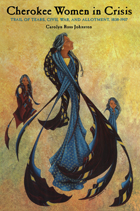 Cherokee Women In Crisis: Trail of Tears, Civil War, and Allotment, 1838-1907
Carolyn Johnston
University of Alabama Press, 2003 Explains how traditional Cherokee women’s roles were destabilized, modified, recovered, and in some ways strengthened during three periods of great turmoil
American Indian women have traditionally played vital roles in social hierarchies at the family, clan, and tribal levels. In the Cherokee Nation, specifically, women and men are considered equal contributors to the culture. With this study, however, we learn that three key historical events in the 19th and early 20th centuries—removal, the Civil War, and allotment of their lands—forced a radical renegotiation of gender roles and relations in Cherokee society.
Carolyn Johnston (who is related to John Ross, principal chief of the Nation) looks at how Cherokee women navigated these crises in ways that allowed them to retain their traditional assumptions, ceremonies, and beliefs and to thereby preserve their culture. In the process, they both lost and retained power. The author sees a poignant irony in the fact that Europeans who encountered Native societies in which women had significant power attempted to transform them into patriarchal ones and that American women struggled for hundreds of years to achieve the kind of equality that Cherokee women had enjoyed for more than a millennium.
Johnston examines the different aspects of Cherokee women’s power: authority in the family unit and the community, economic independence, personal autonomy, political clout, and spirituality. Weaving a great-grandmother theme throughout the narrative, she begins with the protest of Cherokee women against removal and concludes with the recovery of the mother town of Kituwah and the elections of Wilma Mankiller and Joyce Dugan as principal chiefs of the Cherokee Nation and the Eastern Band of Cherokees.
The Cherokees and Their Chiefs: In the Wake of Empire
Stan Hoig
University of Arkansas Press, 1999 In this newly researched and synthesized history of the Cherokees, Hoig traces the displacement of the tribe and the Trail of Tears, the great trauma of the Civil War, the destruction of tribal autonomy, and the Cherokee people's phoenix-like rise in political and social stature during the twentieth century.
 The Cherokees: In War and at Peace, 1670–1840
David Narrett
Harvard University Press, 2025 A sweeping new history reveals how the Cherokees became a nation as they navigated a century and a half of intertribal conflicts and colonial expansion that threatened their way of life.
For more than 150 years between their first encounters with the English in the 1670s and forced removal along the Trail of Tears, the Cherokees negotiated mounting pressures. As their world was convulsed by the spread of European diseases, competition for guns, furs, and deerskins, and imperial powers’ unrelenting pursuit of “savage” allies, Cherokee communities responded by creating new solidarities. At the dawn of the eighteenth century, the idea of unity among the widely dispersed Cherokees would scarcely have occurred to their leaders. A century later, chiefs would declare unequivocally that they stood for the whole Cherokee nation.
Steps toward national unity were partially a response to the exigencies of war. But while armed conflict was frequent, David Narrett shows that the bonds of Cherokee peoplehood were forged primarily through efforts to maintain peace and secure their livelihoods. The Cherokees—both men and women—were remarkably skillful diplomats who practiced peacemaking as a distinctive spiritual art in which adversaries would reconcile through a mutual and symbolic forgetting of wrongs inflicted on one another. Pragmatic and purposeful, Cherokees adeptly managed relationships with colonials and Indigenous rivals, seeking to preserve their independence and living space and to maximize advantages from trade.
Rich in detail and insight, and told through captivating personal stories, The Cherokees offers a portrait of the perseverance that built a nation. Amid an onslaught of struggle and change, the Cherokees became a people who survived against all odds.
The Cherokees of Tuckaleechee Cove
Jon Marcoux
University of Michigan Press, 2012 This volume explores culture change and persistence within a late seventeenth-century Cherokee community in eastern Tennessee.
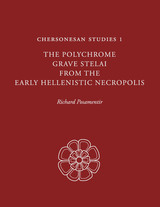 Chersonesan Studies 1: The Polychrome Grave Stelai from the Early Hellenistic Necropolis
By Richard Posamentir
University of Texas Press, 2010 Chersonesan Studies 1 presents the painted grave stelai of the Early Hellenistic necropolis of Chersonesos Taurike, a Greek city on the northern shore of the Black Sea. This unique collection of over one hundred objects is of major interest to students of ancient art and Greek culture. Their polychrome decoration has been extraordinarily well preserved, a rarity in the ancient world. They compose a remarkable, even unique, body of evidence of Greek funerary memorial sculpture: their shapes are gender-specific, their depicted objects are gender- and age-specific, and they can be ascribed to a handful of specific workshops. Their surprising uniformity requires an explanation, since comparable assemblages from other parts of the Greek world show substantial diversity in all these aspects. This book provides the first complete catalog and description of the stelai, together with full-color illustrations of all the significant stelai and many details. Through his painstaking recovery and reassembling of fragments, as well as the use of advanced photographic techniques, Richard Posamentir has been able to add a whole new dimension to the study of these artifacts. The volume covers the history of the stelai, analysis of the workshops, and reconstruction of the necropolis that the stelai originally graced. A comparison chapter discusses how the stelai fit into the context of Greek funerary art and provides insights into the culture and society of a city on the Black Sea.
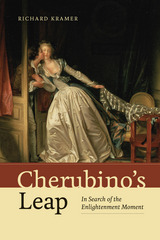 Cherubino's Leap: In Search of the Enlightenment Moment
Richard Kramer
University of Chicago Press, 2016 For the Enlightenment mind, from Moses Mendelssohn’s focus on the moment of surprise at the heart of the work of art to Herder’s imagining of the seismic moment at which language was discovered, it is the flash of recognition that nails the essence of the work, the blink of an eye in which one’s world changes.
In Cherubino’s Leap, Richard Kramer unmasks such prismatic moments in iconic music from the Enlightenment, from the “chromatic” moment—the single tone that disturbs the thrust of a diatonic musical discourse—and its deployment in seminal instrumental works by Emanuel Bach, Haydn, and Mozart; on to the poetic moment, taking the odes of Klopstock, in their finely wrought prosody, as a challenge to the problem of strophic song; and finally to the grand stage of opera, to the intense moment of recognition in Gluck’s Iphigénie en Tauride and the exquisitely introverted phrase that complicates Cherubino’s daring moment of escape in Mozart’s Figaro. Finally, the tears of the disconsolate Konstanze in Mozart’s Die Entführung aus dem Serail provoke a reflection on the tragic aspect of Mozart’s operatic women. Throughout, other players from literature and the arts—Diderot, Goethe, Lessing among them—enrich the landscape of this bold journey through the Enlightenment imagination.
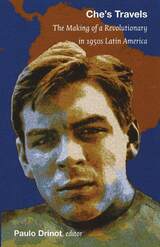 Che's Travels: The Making of a Revolutionary in 1950s Latin America
Paulo Drinot, ed.
Duke University Press, 2010 Ernesto “Che” Guevara twice traveled across Latin America in the early 1950s. Based on his accounts of those trips (published in English as The Motorcycle Diaries and Back on the Road), as well as other historical sources, Che’s Travels follows Guevara, country by country, from his native Argentina through Chile, Peru, Colombia, and Venezuela, and then from Argentina through Bolivia, Peru, Guatemala, and Mexico. Each essay is focused on a single country and written by an expert in its history. Taken together, the essays shed new light on Che’s formative years by analyzing the distinctive societies, histories, politics, and cultures he encountered on these two trips, the ways they affected him, and the ways he represented them in his travelogues. In addition to offering new insights into Guevara, the essays provide a fresh perspective on Latin America’s experience of the Cold War and the interplay of nationalism and anti-imperialism in the crucial but relatively understudied 1950s. Assessing Che’s legacies in the countries he visited during the two journeys, the contributors examine how he is remembered or memorialized; how he is invoked for political, cultural, and religious purposes; and how perceptions of him affect ideas about the revolutions and counterrevolutions fought in Latin America from the 1960s through the 1980s. Contributors
Malcolm Deas
Paulo Drinot
Eduardo Elena
Judith Ewell
Cindy Forster
Patience A. Schell
Eric Zolov
Ann Zulawski
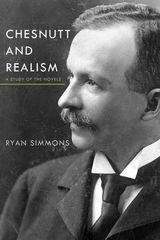 Chesnutt and Realism: A Study of the Novels
Ryan Simmons
University of Alabama Press, 2006 Provides an important examination of Charles Chesnutt as a practitioner of realism
Although Chesnutt is typically acknowledged as the most prominent African American writer of the realist period, scholars have paid little attention to the central question of this study: what does it mean to call Chesnutt a realist? As a writer whose career was restricted by the dismal racial politics of his era, Chesnutt refused to conform to literary conventions for depicting race. Nor did he use his imaginative skills to evade the realities he and other African Americans faced. Rather, he experimented with ways of portraying reality that could elicit an appropriate, proportionate response to it, as Ryan Simmons demonstrates in extended readings of each of Chesnutt’s novels, including important unpublished works overlooked by previous critics.
In addition, Chesnutt and Realism addresses a curiously neglected subject in American literary studies—the relationship between American literary realism and race. By taking Chesnutt seriously as a contributor to realism, this book articulates the strategies by which one African American intellectual helped to define the discourses that influenced his fate.
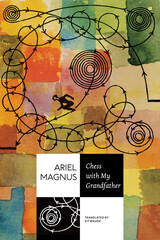 Chess with My Grandfather
Ariel Magnus
Seagull Books, 2020 After immigrating with his German Jewish family to South America in the 1930s, Heinz Magnus hopes to escape the Nazi regime and build a new life for himself. But with the storm clouds of war gathering over Europe, the Politeama Theatre in Buenos Aires is chosen as the venue for the Chess Tournament of Nations. The world’s eyes are suddenly fixed on Heinz’s newly adopted city. Heinz and a colorful cast of characters—drawn from real life, the author’s imagination, and stolen from the pages of Stefan Zweig—find themselves caught up in a web of political intrigue, romantic entanglements, and sporting competition that seems to hold the fate of the world hanging in the balance.
Ariel Magnus leaves no stone unturned in his efforts to learn more about his grandfather and the country to which he emigrated in the 1930s. Chess with My Grandfather is a playful, genre-shifting novel combining tales of international espionage, documentary evidence, and family lore. In this extraordinary book, Magnus blends fact and fiction in a delirious exploration of a dark period of history, family, identity, the power of art and literature and, of course, the fascinating world of chess.
 Chester Bowles: New Dealer in Cold War
Howard B. Schaffer
Harvard University Press, 1993 When Harry Truman named him ambassador to India in 1951, Chester Bowles was already a prominent figure in American public life a onetime advertising mogul, wartime administrator, governor of Connecticut and yet his past hardly presaged the turn his path would take in Asia. Over the next two decades, at home and abroad, Bowles would become one of the leading liberal lights in American foreign policy, a New Dealer destined to be at odds with the stiffening cold war conservatism of his time. His biography is also the story of America finding its place in a changing world, a story of remarkable relevance to our own post-cold war era.
Howard Schaffer, a former ambassador and seasoned Foreign Service officer, worked closely with Bowles in India and Washington and is able to offer a colorful firsthand portrayal of the man, as well as an insider's view of American foreign policy in the making. Bowles's indefatigable energy, inspired idealism, and humanitarian instincts leave their mark on these pages—as do his stubbornness, his cultural blinders, and his failure to master the game of bureaucratic politics. We see him in his sometimes exhilarating and ultimately frustrating struggle to influence the leaders and policymakers of his day—as twice ambassador to India, Democratic party foreign policy spokesman, congressman from Connecticut, foreign policy adviser to John F. Kennedy, undersecretary to Dean Rusk at the State Department, and President Kennedy's special adviser on Africa, Asia, and Latin America. Drawing on a wealth of documents and interviews with some of the nation's top foreign policy makers in the post-World War II years, Schaffer shows us Bowles in his tireless attempt to advance an alternative approach to international relations during those decades, an approach defined less in military than in economic terms, focused less on the struggle for power with the Soviet Union in Europe than on the contest with China over the fate of Third World countries.
“Only the historians can determine who was right and who was wrong,” Dean Rusk once said of Bowles's ideas and convictions—and today history itself is writing the last word.
 Chewing Gum, Candy Bars, and Beer: The Army PX in World War II
James J. Cooke
University of Missouri Press, 2009 Veterans of World War II have long sung the praises of the PX—a little piece of home in far-flung corners of the world. Though many books on that war tell of combat operations and logistics in detail, this is the first to tell the full story of the Army Exchange System.
The AES was dedicated to providing soldiers with some of the comforts they had enjoyed in civilian life—candy, beer, cigarettes, razor blades, soap—whether by operating an exchange close to where they were fighting or by sending goods forward to the lines, free of charge. The beer may have been only “3.2,” but it was cheap and, unlike British beer, was served cold, thanks to PX coolers. And a constant supply of cigarettes and chewing gum gave GIs an advantage when flirting with the local girls.
In chronicling the history of the AES, James J. Cooke harks back to the Civil War, in which sutlers sold basic items to the Yankee troops for exorbitant prices, and to the First World War, when morale-building provisions were brought in by agencies such as the Red Cross. He then traces the evolution of the PX through World War II from the point of view of those who ran the service and that of the soldiers who used it, blending administrative history with colorful anecdotes and interspersing letters from GIs.
Cooke views the PX as a manifestation of American mobility, materialism, and the cultural revolution of mass consumerism that flourished in the 1920s, serving soldiers who were themselves products of this new American way of retail and expected a high level of material support in time of war. He emphasizes the accomplishments of Major General Joseph W. Byron, chief PX officer from 1941 to 1943, and his deputy, Colonel Frank Kerr. He also tells how the PX dealt with the presence of large numbers of women in uniform and the need to meet their demands in exchange offerings.
By 1945, General Byron could boast that the Army Exchange Service operated the world’s largest department store chain, serving the grandest army the United States had ever put in the field, and today the PX is still a central factor of military life. Yet as Cooke shows, the key to the AES’s importance was ultimately the way it bolstered morale—and helped give our fighting men the will to keep fighting.
 Chez Charlotte and Emily
Jonathan Baumbach
University of Alabama Press, 1979 Imagine a bookish man named Francis D., swimming at a public beach in Cape Cod, who drifts out beyond his depth. Imagine that he doesn't drown, that the tide carries him to a private cove where he is rescued by two mysterious young women named Charlotte and Emily. Imagine then that Francis leaves behind his former humdrum life-his formidable wife and teenage daughter-and embarks on a series of violent and erotic adventures, as dream-like as reels of film. Imagine at the same time that a man named Joshua Quartz is telling his silent wife, Genevieve, the story of Francis's adventures, that they have little other communication, that the story is a way of keeping contact between husband and wife alive. Imagine that at some point Genevieve tells her own story, within and without Joshua's account. Baumbach's characters make occasional connections, make love and war, in the disguises of metaphor. If the main action is dream-like or fantastic, the real world is always at the window looking in.
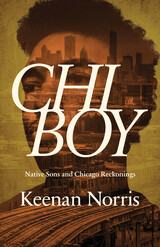 Chi Boy: Native Sons and Chicago Reckonings
Keenan Norris
Ohio State University Press, 2022 In Chi Boy, Keenan Norris melds memoir, cultural criticism, and literary biography to indelibly depict Chicago—from the Great Migration to the present day—as both a cradle of black intellect, art, and politics and a distillation of America’s deepest tragedies. With the life and work of Richard Wright as his throughline, Norris braids the story of his family and particularly of his father, Butch Norris, with those of other black men—Wright, Barack Obama, Ralph Ellison, Frank Marshall Davis—who have called Chicago home. Along the way he examines the rise of black street organizations and the murders of Yummy Sandifer and Hadiya Pendleton to examine the city’s status in the cultural imaginary as “Chi-Raq,” a war zone within the nation itself. In Norris’s telling, the specter of violence over black life is inescapable: in the South that Wright and Butch Norris escaped, in the North where it finds new forms, and worldwide where American militarism abroad echoes brutalities at home. Yet, in the family story at the center of this unforgettable book, Norris also presents an enduring vision of hope and love.
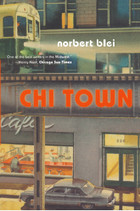 Chi Town
Norbert Blei
Northwestern University Press, 2003 The final work of the acclaimed Chicago Trilogy, this collection of nonfiction tales reveals Sandburg's "city of the big shoulders," concrete and neon; uptown and downtown; State Street, Michigan Avenue; the river, the lake; the matter-of-factness and poetry of Chicago people-from Mike Royko describing his neighborhood to the observations of newspaper vendors, from Studs Terkel interviewing jazz great Dave Brubeck to dinner with Petros in Greek Town. Written with a keen eye, Blei's stories evoke a vanished Chicago, a city of gritty and colorful neighborhoods and their gritty and colorful characters. It is, as he writes, a "love letter to a city that has meant so much to me."
Chi Townis the story of Norbert Blei's love affair with a city that shaped both his life and work. Along the route of this walking tour of the Windy City, you'll dine with Petros in Greek Town, see Studs Terkel in action at WFMT interviewing Dave Brubeck, listen to Mike Royko describe his own neighborhood, share the thoughts of Chicago sportswriter Jerome Holtzman, and meet newspaper vendors, trash collectors, bankers and more.
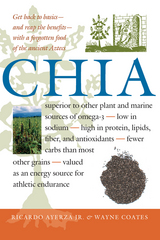 Chia: Rediscovering a Forgotten Crop of the Aztecs
Ricardo Ayerza Jr. and Wayne Coates
University of Arizona Press, 2005 One of the four main Aztec crops at the time of Columbus’s arrival in the New World, chia is now a forgotten food of the Americas. Chia seed oil offers the highest omega-3 fatty acid content available from plants, but today this species is known only for its use in "chia pets." Yet pre-Columbian civilizations used chia as a raw material for medicines and nutritional compounds, while chia flour could be stored for years as a food reserve and was valued as a source of energy on long journeys. In this book, agronomist Ricardo Ayerza and agricultural engineer Wayne Coates trace the long and fascinating history of chia’s use, then reveal the scientific story of the plant and its modern potential. They compare fatty acid profiles of chia with our other major sources—fish oil, flaxseed, and marine algae—and provide evidence that chia is superior in many ways. Here are just some of the benefits that chia provides:
- chia has the highest known percentage of alpha-linolenic acid, and the highest combined alpha-linolenic and linoleic fatty acid percentage of all crops
- chia has more protein, lipids, energy, and fiber—but fewer carbs—than rice, barley, oats, wheat, or corn—and its protein is gluten-free
- chia is an excellent source of calcium, phosphorus, magnesium, potassium, iron, zinc, and copper
- chia is low in sodium: salmon has 78 times as much, tuna 237 times as much
- chia exhibits no evidence of allergic response, even in individuals with peanut and tree-nut allergies
- chia doesn’t give off a “fishy flavor,” unlike some other sources of omega-3 fatty acid The need to balance the essential fatty acid content of the human diet, combined with the need for a safe, renewable, omega-3 fatty acid source, positions chia to become one of the world’s important crops. As this insightful study shows, current nutritional understanding provides an excellent opportunity to reintroduce this important food to the world.
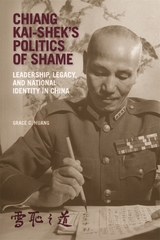 Chiang Kai-shek’s Politics of Shame: Leadership, Legacy, and National Identity in China
Grace C. Huang
Harvard University Press, 2021 Once a powerful figure who reversed the disintegration of China and steered the country to Allied victory in World War II, Chiang Kai-shek fled into exile following his 1949 defeat in the Chinese civil war. As attention pivoted to Mao Zedong’s communist experiment, Chiang was relegated to the dustbin of history.
In Chiang Kai-shek’s Politics of Shame, Grace C. Huang reconsiders Chiang’s leadership and legacy by drawing on an extraordinary and uncensored collection of his diaries, telegrams, and speeches stitched together by his secretaries. She paints a new, intriguing portrait of this twentieth-century leader who advanced a Confucian politics of shame to confront Japanese incursion into China and urge unity among his people. In also comparing Chiang’s response to imperialism to those of Mao, Yuan Shikai, and Mahatma Gandhi, Huang widens the implications of her findings to explore alternatives to Western expressions of nationalism and modernity and reveal how leaders of vulnerable states can use potent cultural tools to inspire their country and contribute to an enduring national identity.
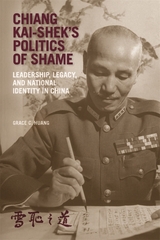 Chiang Kai-shek’s Politics of Shame: Leadership, Legacy, and National Identity in China
Grace C. Huang
Harvard University Press, 2021 Once a powerful figure who reversed the disintegration of China and steered the country to Allied victory in World War II, Chiang Kai-shek fled into exile following his 1949 defeat in the Chinese civil war. As attention pivoted to Mao Zedong’s communist experiment, Chiang was relegated to the dustbin of history.
In Chiang Kai-shek’s Politics of Shame, Grace C. Huang reconsiders Chiang’s leadership and legacy by drawing on an extraordinary and uncensored collection of his diaries, telegrams, and speeches stitched together by his secretaries. She paints a new, intriguing portrait of this twentieth-century leader who advanced a Confucian politics of shame to confront Japanese incursion into China and urge unity among his people. In also comparing Chiang’s response to imperialism to those of Mao, Yuan Shikai, and Mahatma Gandhi, Huang widens the implications of her findings to explore alternatives to Western expressions of nationalism and modernity and reveal how leaders of vulnerable states can use potent cultural tools to inspire their country and contribute to an enduring national identity.
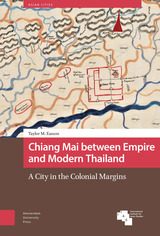 Chiang Mai between Empire and Modern Thailand: A City in the Colonial Margins
Taylor M. Easum
Amsterdam University Press, 2024 Urban histories tend to be dominated by large, global cities. But what does the history of the modern, colonial era look like from the perspective of smaller cities? By shifting the focus from the metropolis to the secondary city of Chiang Mai, this study provides an alternative narrative of the formation of the modern Thai state that highlights the overlap between European, American, and Siamese interests. Through a detailed analysis of Chiang Mai’s urban space, the power dynamics that shaped the city come into focus as an urban-scale manifestation of colonial forces—albeit an incomplete one that allowed sacred space to become a source of conflict that was only resolved in the years before WWII. Today, as the city confronts the challenge of overdevelopment, the legacy of the colonial era, and the opportunity of heritage preservation, this deep, multi-layered history of the power of (and over) urban space is vital.
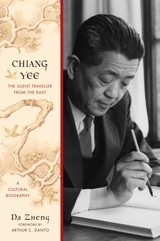 Chiang Yee: The Silent Traveller from the East--A Cultural Biography
Zheng, Da
Rutgers University Press, 2010 A young man arrives in England in the 1930s, knowing few words of the English language. Yet, two years later he writes a successful English book on Chinese art, and within the following decade publishes more than a dozen others. This is the true story of Chiang Yee, a renowned writer, artist, and worldwide traveler, best known for the Silent Traveller series--stories of England, the United States, Ireland, France, Japan, and Australia--all written in his humorous, delightfully refreshing, and enlightening literary style. This biography is more than a recounting of extraordinary accomplishments. It also embraces the transatlantic life experience of Yee who traveled from China to England and then on to the United States, where he taught at Columbia University, to his return to China in 1975, after a forty-two year absence. Interwoven is the history of the communist revolution in China; the battle to save England during World War II; the United States during the McCarthy red scare era; and, eventually, thawing Sino-American relations in the 1970s. Da Zheng uncovers Yee's encounters with racial exclusion and immigration laws, displacement, exile, and the pain and losses he endured hidden behind a popular public image.
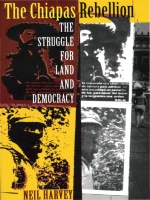 The Chiapas Rebellion: The Struggle for Land and Democracy
Neil Harvey
Duke University Press, 1998 In 1994 the Zapatista rebellion brought international attention to the southern Mexican state of Chiapas. Neil Harvey combines ten years of field work in Chiapas with extensive historical and political research to provide a comprehensive history of conflict in this region and a nuanced analysis of this rural uprising against federal bureaucracy and landed elites.
Beginning with an exploration of the history of ethnic and class conflict in Chiapas since the Conquest, Harvey moves specifically to trace the development of peasant and indigenous organizations in Chiapas since the early 1970s. He compares the struggles for agrarian rights of three grassroots movements facing hostility from both local elites and federal bureaucrats. His examination of the complexities of political change in Chiapas includes the impact of neoliberal economic policies, the origins of the Zapatista army of National Liberation (EZLN), and the political impact of the rebellion itself. Engaging with current theoretical debates on the role and significance of social movements in Mexico and Latin America, Harvey focuses on the primacy of political struggle and on the importance of these movements in the construction and meaning of citizenship. While suggesting that the Zapatista revolution has heightened awareness among the people of Chiapas of such democratic issues as ethnicity, gender, and land distribution, he concludes with an analysis of the obstacles to peace in the region today.
This unprecedented study of the Zapatista rebellion will provoke discussion among students and scholars of contemporary Mexico, political science, Latin American studies, history, sociology, and anthropology.
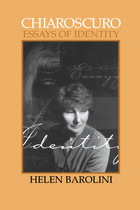 Chiaroscuro: Essays on Identity: Revised Edition
Helen Barolini
University of Wisconsin Press, 1999 “A lively, lucid, and often extremely moving collection of essays.”—Sandra Gilbert, author of Wrongful Death: A Memoir
“Barolini’s essays moved me. Their commitment, their passion, their intelligence struck me very powerfully and made them among the most incisive essays on Italian-Americana, ethnicity, and diversity in literature that I have ever read.”—Fred Misurella, author of Understanding Milan Kundera: Public Events, Private Affairs and Short Time
Part memoir, part social commentary, and part literary criticism, Chiaroscuro is not only profoundly original but also of crucial importance in establishing the contours of an Italian-American tradition. Spanning a quarter century of work, the essays in Helen Barolini’s essays explore her personal search; literature as a formative influence; and the turning of the personal into the political. Included in Chiaroscuro is an updated re-introduction to Barolini’s American Book Award-winning collection, The Dream Book: An Anthology of Writings by Italian-American Women.
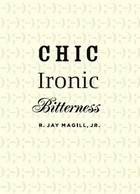 Chic Ironic Bitterness
R. Jay Magill, Jr.
University of Michigan Press, 2009 A brilliant and timely reflection on irony in contemporary American culture “This book is a powerful and persuasive defense of sophisticated irony and subtle humor that contributes to the possibility of a genuine civic trust and democratic life. R. Jay Magill deserves our congratulations for a superb job!” —Cornel West, University Professor, Princeton University “A well-written, well-argued assessment of the importance of irony in contemporary American social life, along with the nature of recent misguided attacks and, happily, a deep conviction that irony is too important in our lives to succumb. The book reflects wide reading, varied experience, and real analytical prowess.” —Peter Stearns, Provost, George Mason University “Somehow, Americans—a pragmatic and colloquial lot, for the most part—are now supposed to speak the Word, without ironic embellishment, in order to rebuild the civic culture. So irony’s critics decide it has become ‘worthy of moral condemnation.’ Magill pushes back against this new conventional wisdom, eloquently defending a much livelier American sensibility than the many apologists for a somber ‘civic culture’ could ever acknowledge." —William Chaloupka, Chair and Professor, Department of Political Science, Colorado State University The events of 9/11 had many pundits on the left and right scrambling to declare an end to the Age of Irony. But six years on, we're as ironic as ever. From The Simpsons and Borat to The Daily Show and The Colbert Report, the ironic worldview measures out a certain cosmopolitan distance, keeping hypocrisy and threats to personal integrity at bay. Chic Ironic Bitterness is a defense of this detachment, an attitude that helps us preserve values such as authenticity, sincerity, and seriousness that might otherwise be lost in a world filled with spin, marketing, and jargon. And it is an effective counterweight to the prevailing conservative view that irony is the first step toward cynicism and the breakdown of Western culture. R. Jay Magill, Jr., is a writer and illustrator whose work has appeared in American Prospect, American Interest, Atlantic Monthly, Foreign Policy, International Herald Tribune, New York Times, Wall Street Journal, and Print, amongother periodicals and books. A former Harvard Teaching Fellow and Executive Editor of DoubleTake, he holds a Ph.D. in American Studies from the University of Hamburg in Germany. This is his first book.
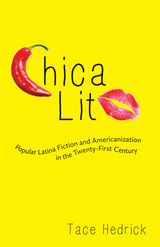 Chica Lit: Popular Latina Fiction and Americanization in the Twenty-First Century
Tace Hedrick
University of Pittsburgh Press, 2015 Winner, 2016 ALA-Choice Outstanding Academic Title
In Chica Lit: Popular Latina Fiction and Americanization in the Twenty-First Century, Tace Hedrick illuminates how discourses of Americanization, ethnicity, gender, class, and commodification shape the genre of “chica lit,” popular fiction written by Latina authors with Latina characters. She argues that chica lit is produced and marketed in the same ways as contemporary romance and chick lit fiction, and aimed at an audience of twenty- to thirty-something upwardly mobile Latina readers. Its stories about young women’s ethnic class mobility and gendered romantic success tend to celebrate twenty-first century neoliberal narratives about Americanization, hard work, and individual success. However, Hedrick emphasizes, its focus on Latina characters necessarily inflects this celebratory mode: the elusiveness of meaning in its use of the very term “Latina” empties out the differences among and between Latina/o and Chicano/a groups in the United States. Of necessity, chica lit also struggles with questions about the actual social and economic “place” of Latinas and Chicanas in this same neoliberal landscape; these questions unsettle its reliance on the tried-and-true formulas of chick lit and romance writing. Looking at chica lit’s market-driven representations of difference, poverty, and Americanization, Hedrick shows how this writing functions within the larger arena of struggles over popular representation of Latinas and Chicanas.
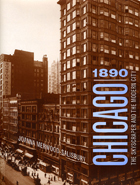 Chicago 1890: The Skyscraper and the Modern City
Joanna Merwood-Salisbury
University of Chicago Press, 2009 Chicago’s first skyscrapers are famous for projecting the city’s modernity around the world. But what did they mean at home, to the Chicagoans who designed and built them, worked inside their walls, and gazed up at their façades? Answering this multifaceted question, Chicago 1890 reveals that early skyscrapers offered hotly debated solutions to the city’s toughest problems and, in the process, fostered an urban culture that spread across the country. An ambitious reinterpretation of the works of Louis Sullivan, Daniel Burnham, and John Wellborn Root, this volume uses their towering achievements as a lens through which to view late nineteenth-century urban history. Joanna Merwood-Salisbury sheds new light on many of Chicago’s defining events—including violent building trade strikes, the Haymarket bombing, the World’s Columbian Exposition, and Burnham’s Plan of Chicago—by situating the Masonic Temple, the Monadnock Building, and the Reliance Building at the center of the city’s cultural and political crosscurrents. While architects and property owners saw these pioneering structures as manifestations of a robust American identity, immigrant laborers and social reformers viewed them as symbols of capitalism’s inequity. Illuminated by rich material from the period’s popular press and professional journals, Merwood-Salisbury’s chronicle of this contentious history reveals that the skyscraper’s vaunted status was never as inevitable as today’s skylines suggest.
 Chicago '68
David Farber
University of Chicago Press, 1988 Entertaining and scrupulously researched, Chicago '68 reconstructs the 1968 Democratic Convention in Chicago—an epochal moment in American cultural and political history. By drawing on a wide range of sources, Farber tells and retells the story of the protests in three different voices, from the perspectives of the major protagonists—the Yippies, the National Mobilization to End the War, and Mayor Richard J. Daley and his police. He brilliantly recreates all the excitement and drama, the violently charged action and language of this period of crisis, giving life to the whole set of cultural experiences we call "the sixties."
"Chicago '68 was a watershed summer. Chicago '68 is a watershed book. Farber succeeds in presenting a sensitive, fairminded composite portrait that is at once a model of fine narrative history and an example of how one can walk the intellectual tightrope between 'reporting one's findings' and offering judgements about them."—Peter I. Rose, Contemporary Sociology
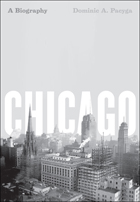 Chicago: A Biography
Dominic A. Pacyga
University of Chicago Press, 2009 Chicago has been called by many names. Nelson Algren declared it a “City on the Make.” Carl Sandburg dubbed it the “City of Big Shoulders.” Upton Sinclair christened it “The Jungle,” while New Yorkers, naturally, pronounced it “the Second City.” At last there is a book for all of us, whatever we choose to call Chicago. In this magisterial biography, historian Dominic Pacyga traces the storied past of his hometown, from the explorations of Joliet and Marquette in 1673 to the new wave of urban pioneers today. The city’s great industrialists, reformers, and politicians—and, indeed, the many not-so-great and downright notorious—animate this book, from Al Capone and Jane Addams to Mayor Richard J. Daley and President Barack Obama. But what distinguishes this book from the many others on the subject is its author’s uncommon ability to illuminate the lives of Chicago’s ordinary people. Raised on the city’s South Side and employed for a time in the stockyards, Pacyga gives voice to the city’s steelyard workers and kill floor operators, and maps the neighborhoods distinguished not by Louis Sullivan masterworks, but by bungalows and corner taverns. Filled with the city’s one-of-a-kind characters and all of its defining moments, Chicago: A Biography is as big and boisterous as its namesake—and as ambitious as the men and women who built it.
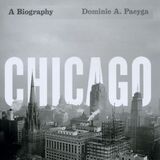 Chicago: A Biography
Dominic A. Pacyga
University of Chicago Press, 2009 This is an auto-narrated audiobook version of this book.
Chicago has been called by many names. Nelson Algren declared it a “City on the Make.” Carl Sandburg dubbed it the “City of Big Shoulders.” Upton Sinclair christened it “The Jungle,” while New Yorkers, naturally, pronounced it “the Second City.” At last there is a book for all of us, whatever we choose to call Chicago. In this magisterial biography, historian Dominic Pacyga traces the storied past of his hometown, from the explorations of Joliet and Marquette in 1673 to the new wave of urban pioneers today. The city’s great industrialists, reformers, and politicians—and, indeed, the many not-so-great and downright notorious—animate this book, from Al Capone and Jane Addams to Mayor Richard J. Daley and President Barack Obama. But what distinguishes this book from the many others on the subject is its author’s uncommon ability to illuminate the lives of Chicago’s ordinary people. Raised on the city’s South Side and employed for a time in the stockyards, Pacyga gives voice to the city’s steelyard workers and kill floor operators, and maps the neighborhoods distinguished not by Louis Sullivan masterworks, but by bungalows and corner taverns. Filled with the city’s one-of-a-kind characters and all of its defining moments, Chicago: A Biography is as big and boisterous as its namesake—and as ambitious as the men and women who built it.
 Chicago: A Geography of the City and Its Region
John C. Hudson
University of Chicago Press, 2006 The geography of Chicago is central to its history and to its success as the nation’s now third largest metropolitan area. The first geography of the Windy City in more than fifty years, Chicago: A Geography of the City and Its Region is a topical and chronological analysis of the area that both considers the city’s historical geography and anticipates its future trends.
Renowned geographer John C. Hudson leaves no aspect unexplored in this ambitious and peerless book. Beginning with an overview of metropolitan Chicago, Hudson describes how the city has served as a model to social scientists and examines its unique neighborhoods and communities from the perspectives of Chicagoans themselves. A thorough description of the physical geography of the region introduces a series of studies in historical geography that consider the origins of the city and its early development through to its present state, paying particular attention to race, ethnicity, and suburbanization, as well as commuting patterns, neighborhood change, and patterns of income distribution. Chicago concludes with a comparison of the balanced geography that prevailed in the early twentieth century with the skewed pattern of sectoral imbalances that exists today.
Supplemented with more than one hundred maps that illustrate the evolution of Chicago over time and sixty-four black-and-white and color photographs that capture iconic images of the city’s landscapes and its people, Chicago beautifully synthesizes the city’s social and economic strata with geographical features to provide an authoritative guide to modern Chicagoland.
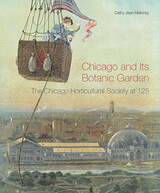 Chicago and Its Botanic Garden: The Chicago Horticultural Society at 125
Cathy Jean Maloney
Northwestern University Press, 2015 Formed in 1890, during the heady days before the 1893 World’s Columbian Exposition, the Chicago Horticultural Society boasted members with names deeply rooted in Chicago history: Buckingham, McCormick, and Palmer, among others. Today, as it leads the Garden in a model public-private partnership with the Forest Preserves of Cook County, the Society’s horticultural practices have exceeded the vision of its founders. Chicago and Its Botanic Garden: The Chicago Horticultural Society at 125 is a lushly illustrated and thoughtful history of the Society and its evolution from a producer of monumental flower and botanical shows, through a fallow period, to the opening in 1972 of the Chicago Botanic Garden, a living museum and world leader in horticulture, plant science and conservation, education, and urban agriculture. Author Cathy Jean Maloney combines meticulous scholarship with a flair for storytelling in a narrative that will delight everyone from casual strollers of the grounds to the volunteers, professionals, and scientists who compose the influential society.
 Chicago and the Old Northwest, 1673-1835
Milo Milton Quaife
University of Illinois Press, 1913 In this sweeping survey, Milo Milton Quaife traces the events leading from Chicago's emergence as a key outpost at the edge of the frontier to its establishment as the crossroads of American commerce.
Strategically located at the head of the Great Lakes on the Chicago portage, one of the main highways connecting the Great Lakes-St. Lawrence waterway with the Mississippi River, Chicago was equally valued by explorers, traders, settlers, and governments.
Quaife narrates the opening of trade and the course of European exploration, facilitated by the Chicago portage and subsequent construction of the Illinois and Michigan Canal. He profiles the personalities who shaped the early Chicago area, from the French explorers La Salle, Marquette, and Joliet to the ambitious Champlain, who set the course for decades to come by securing for New France the enmity of the Iroquois.
Quaife provides a full description of the Indian trade, which constituted the basis of commerce in the region for the entire period covered by the book, as well as a blow-by-blow account of how old rivalries and alliances between Indian tribes complicated the English and French plans for divvying up the New World. He also describes the conflicts between natives and whites with sympathy and detail on both sides, depicting Indian attacks on white settlements as rationally motivated acts aiming toward specific goals of strategy or revenge.
First published in 1913, Chicago and the Old Northwest, 1673-1835 is one of the earliest works of a man who became one of the premier scholars of his generation. In a new introduction, Chicago historian Perry R. Duis sketches Quaife's long and varied career, his influence on the history profession, and his crusade to prove that a black trader was the first permanent resident of Chicago.
|
|
